Utqiagvik (formerly Barrow, AK) is the 9th most northern city in the world and the most northern city in the US. We spent a whirlwind 24 hours there and I’d gladly do it again, and recommend it to others.
That being said, part of what MADE our trip was that it coincided with the spring Whaling Festival – Nalukataq – so if you can plan your trip for that time it’s an even better experience.
A note – we’ve done our very best to ask questions and get answers directly from the local population, or to research information from reputable sites if we didn’t get the answer while in Utqiagvik. Please know that any errors in information, names, or spelling are unintentional, as it’s always in our hearts to learn about a place from its local population. This is our personal experience of the town. You’re welcome to ask questions or comment in the comments below – but any insensitive, racist, xenophobic, or unkind comments will be deleted.
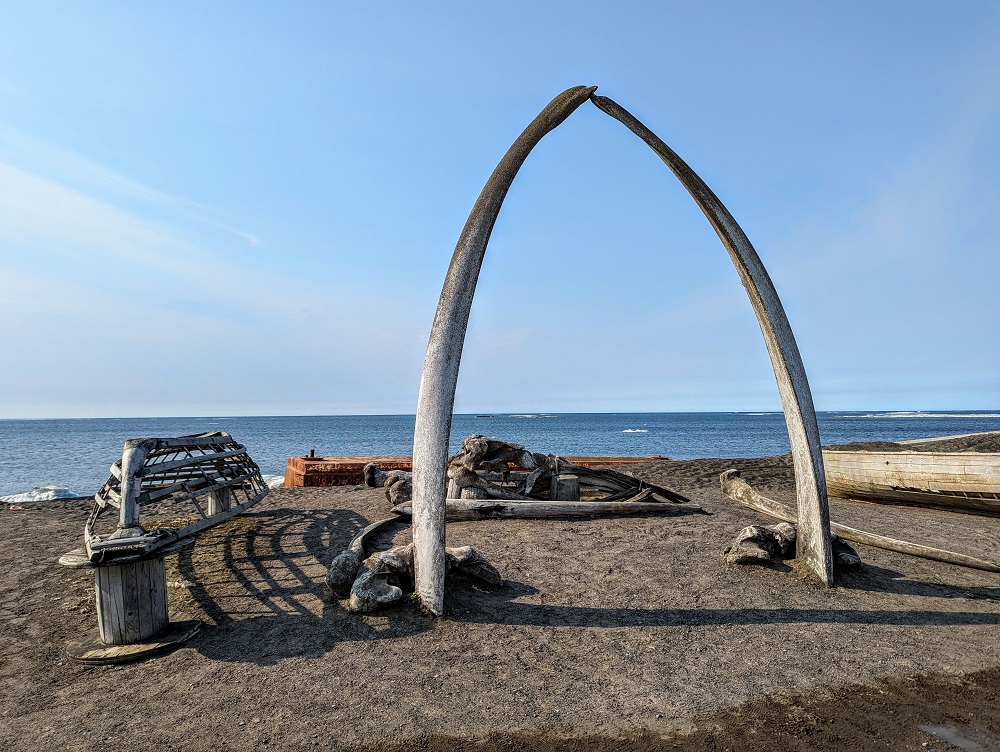
How To Get To Utqiagvik
There aren’t any roads that take you to Utqiagvik, so the only way to get there is to fly. The only two airlines that offer commercial flights to Utqiagvik are Alaska Airlines and Wright Air Service and we flew with Alaska Airlines both there and back.
For our flight there, we booked using British Airways Avios as that only cost 9,000 Avios one-way + $5.60 per person in economy.
There wasn’t any award availability through British Airways on the way back, but Alaska Airlines was offering the flight for 12,500 Mileage Plan miles + $5.60 one-way in economy. That wasn’t terrible, but the cash price for first class wasn’t bad either. American Airlines offers a 35% rebate when booking business or first class flights if you have a Business Platinum card, which we do. The cost was 20,340 Membership Rewards points + $19.40 per person, but the 35% rebate meant our net cost was 13,221 Membership Rewards points. that wasn’t much more than the number of Alaska Airlines Mileage Plan miles we’d have had to redeem, but this meant we’d be in first class and so would have a more comfortable seat and would get a complimentary meal and drinks.

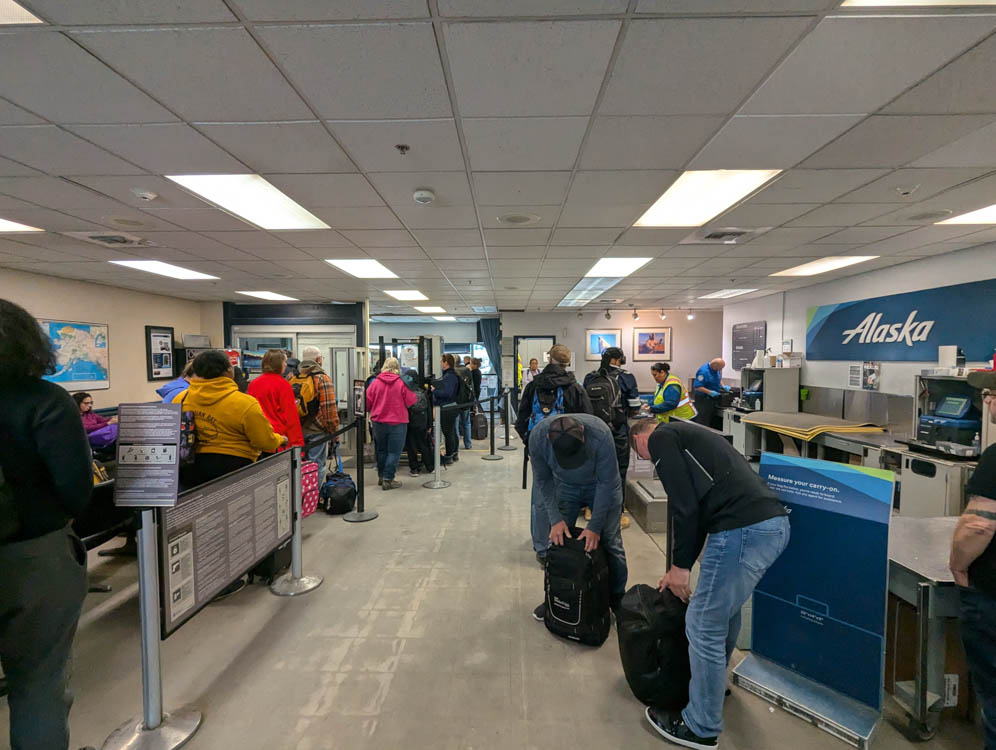
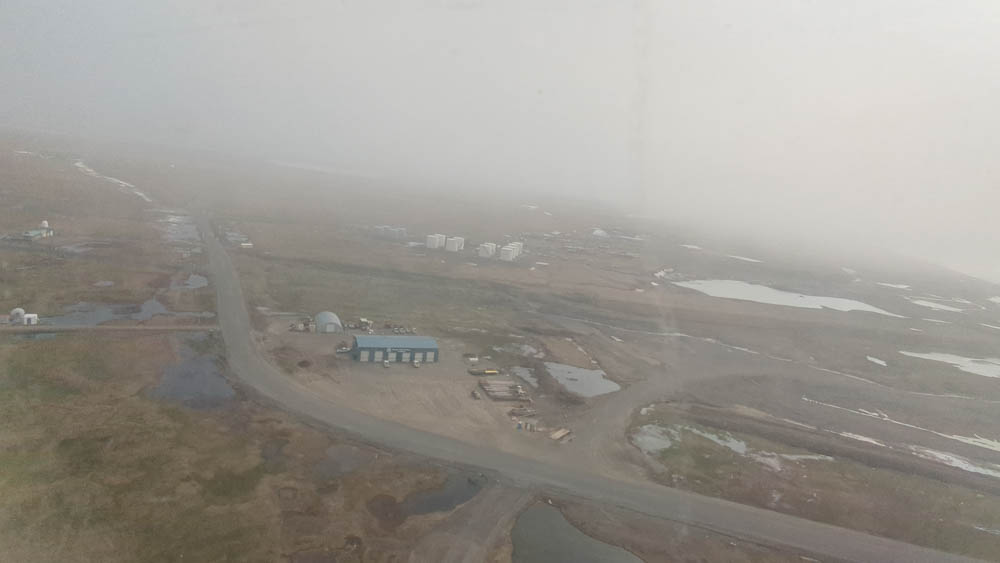
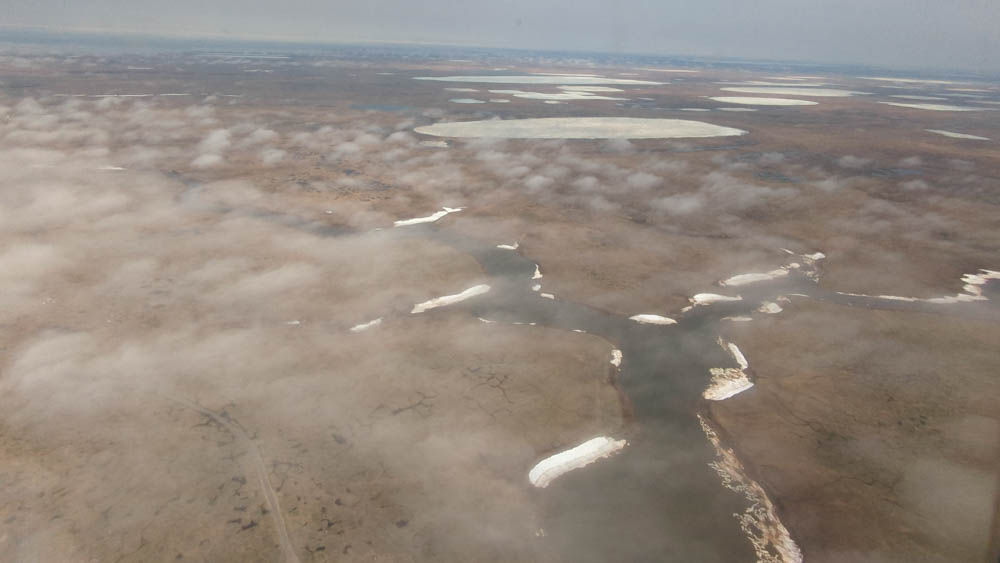

Hotels In Utqiagvik
Utqiagvik is a small city with a population of only ~5,000 people. As a result, there aren’t a lot of accommodation options other than a few hotels and Airbnbs. That lack of competition also means prices are quite high, although to be fair hotel prices throughout Alaska in the summer are expensive.
For our one night there we booked a stay at the King Eider Inn (website here). The hotel wasn’t bookable through OTAs (Online Travel Agencies) like Hotels.com and it’s not part of a larger chain, so we had to book it via email after contacting them via their website.
We booked the King Eider Inn for a couple of reasons. One is that it’s extremely close to the airport – only a couple of minutes walk up the road. Not knowing what the weather would be like upon arrival nor what the taxi situation would be, this seemed like the easiest option. They also confirmed that they’d be able to hold on to our luggage after checking out in the morning as our flight wasn’t until late afternoon/early evening.
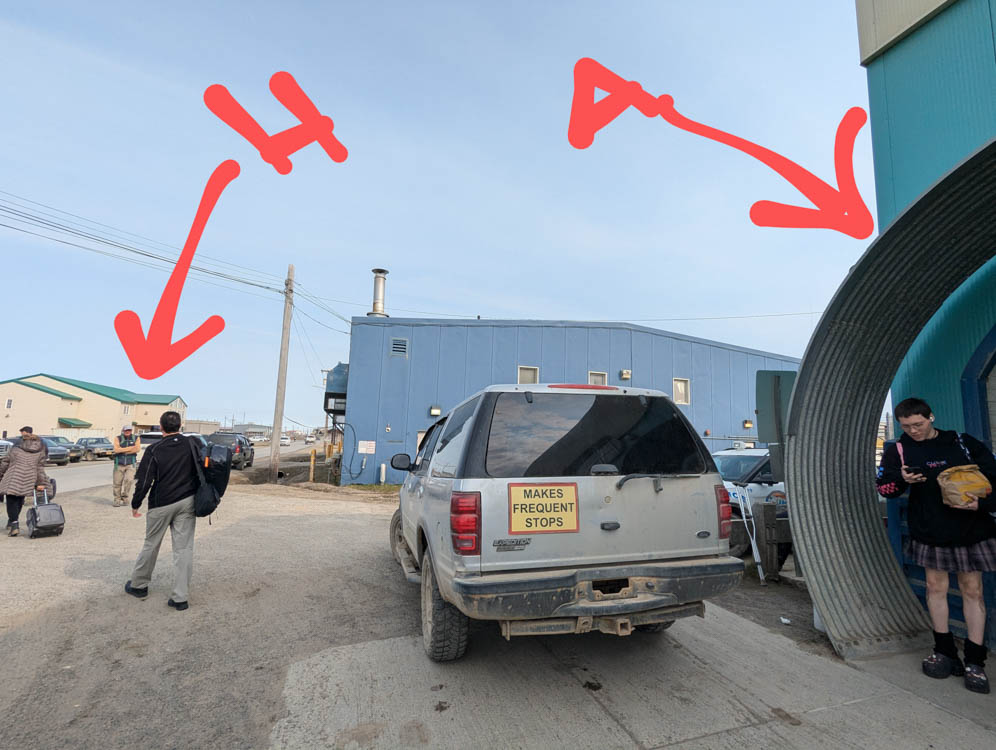
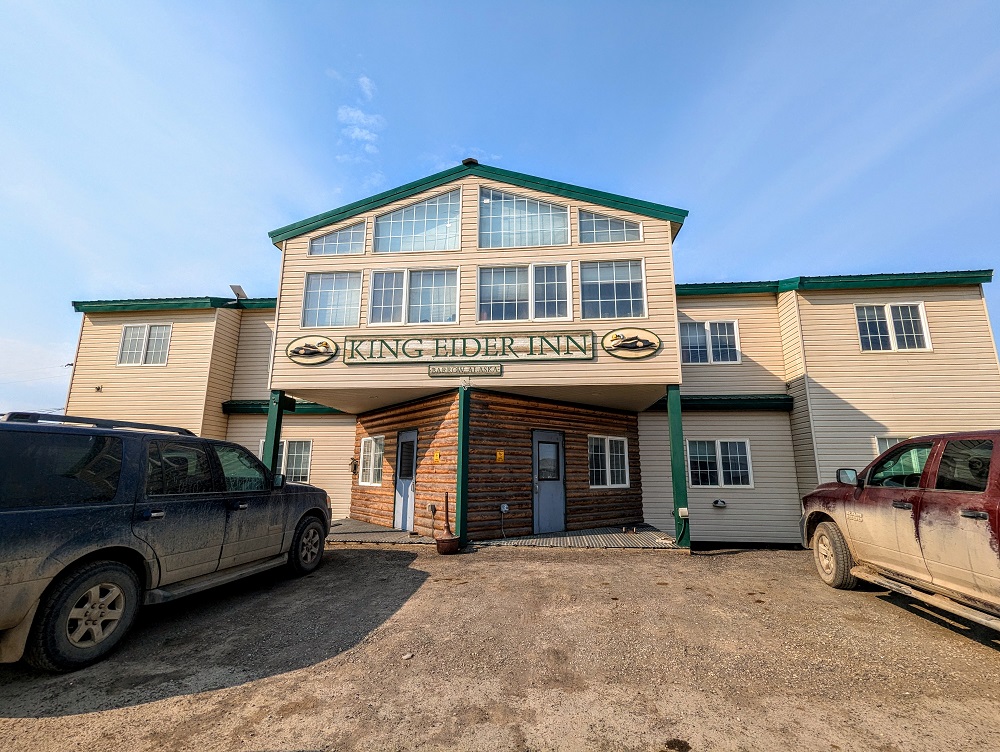
Our room was comfortable and spacious and the front desk agent was very friendly. Here’s our full review of the King Eider Inn.
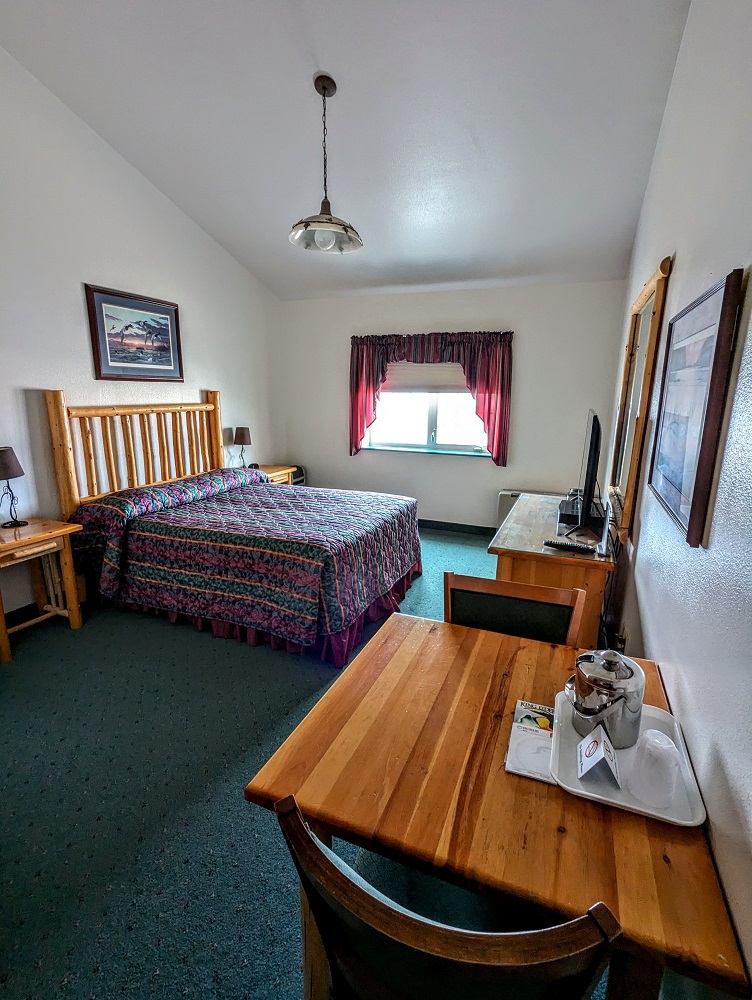
The other major hotel in the city is the Top of the World Hotel. That’s about a 20 minute walk from our hotel/the airport and seemed to offer a shuttle to their guests. There are a few other boarding room options but most of those are for scientists, students, researchers and government workers that find themselves in Utqiagvik.
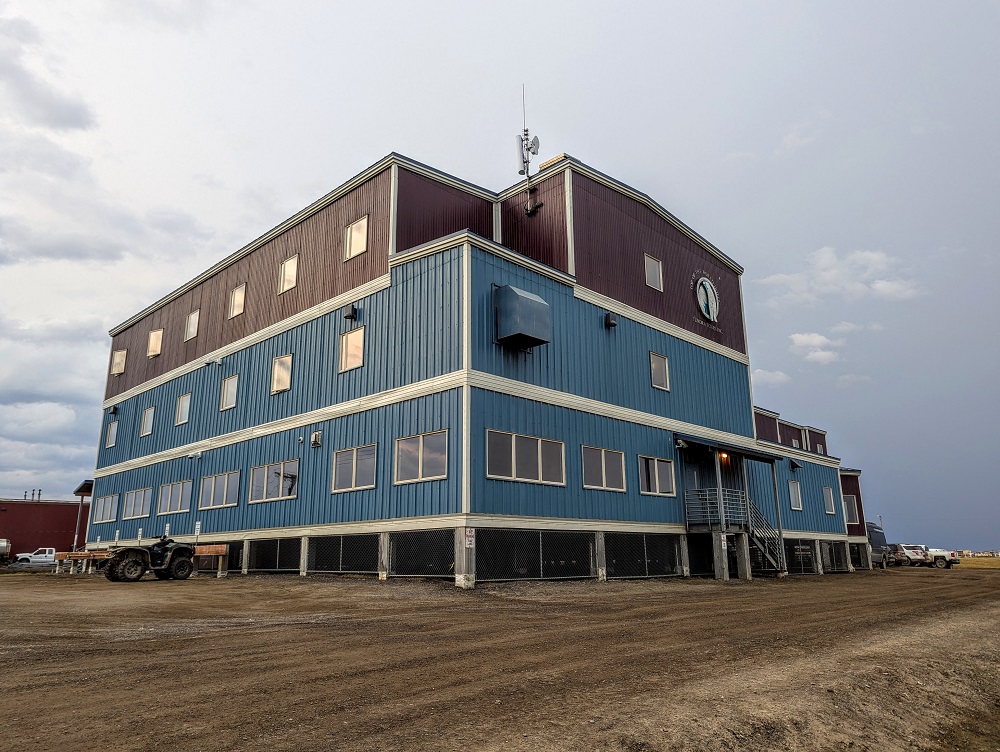
The Top of the World staff were very kind to us and answered questions for us despite not being their registered guests which we really appreciated.
Walking Around Town
One of the things we were told to expect is that Utqiagvik is not very picturesque. While I think that is a matter of perspective, I can also see what they meant. We walked around the town since it wasn’t the season for polar bears to also be walking around town to see what life is like at the top of the world.
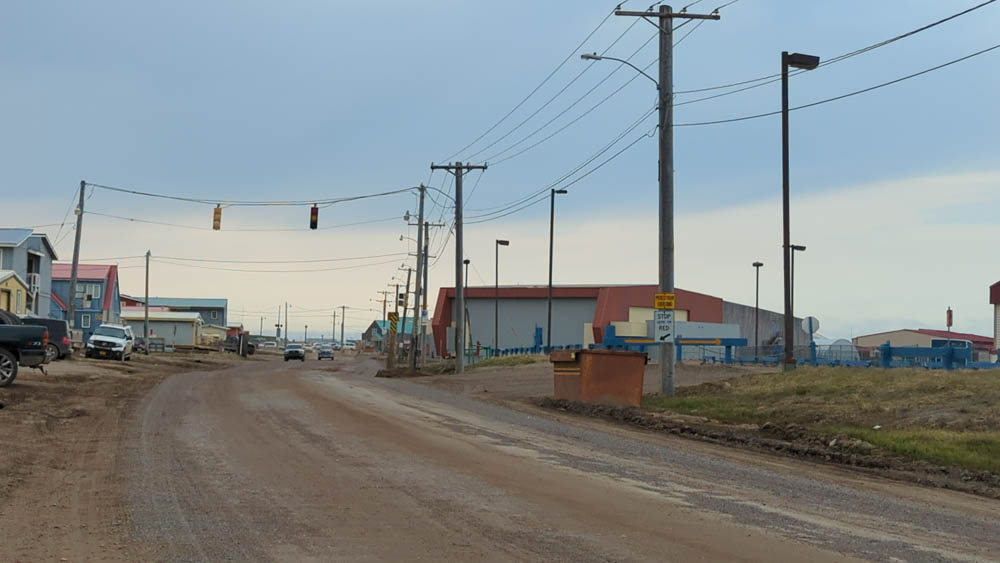
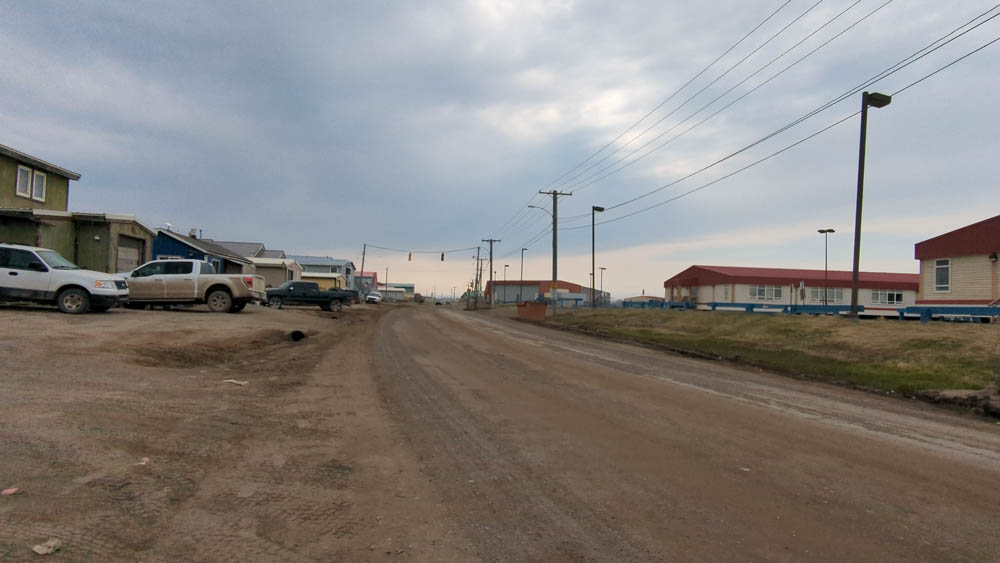
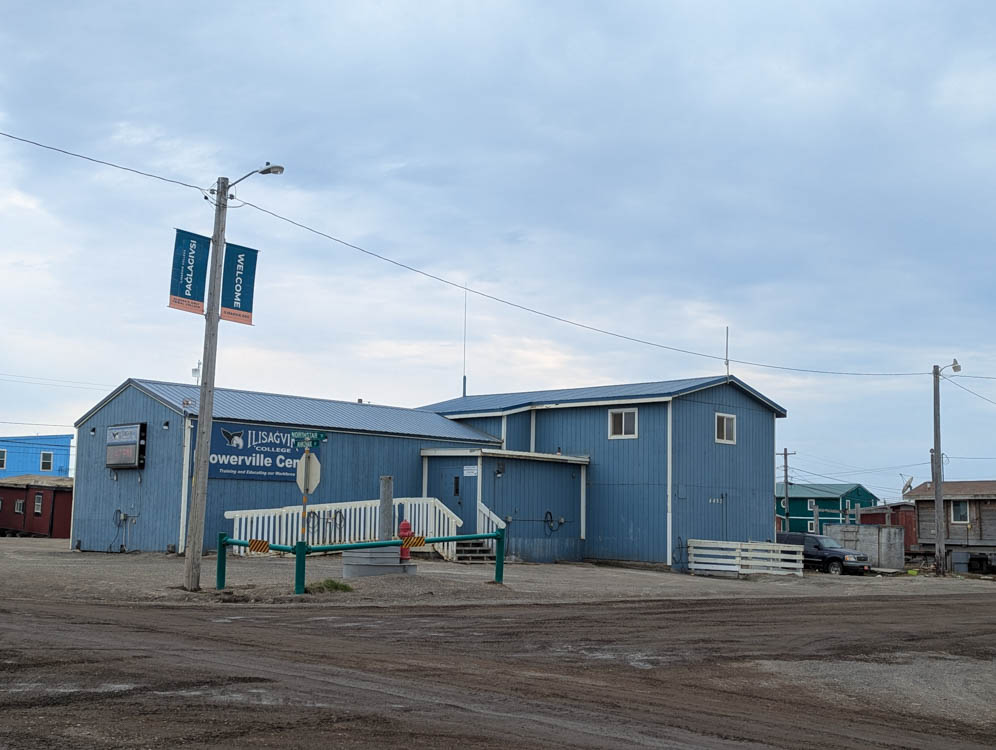
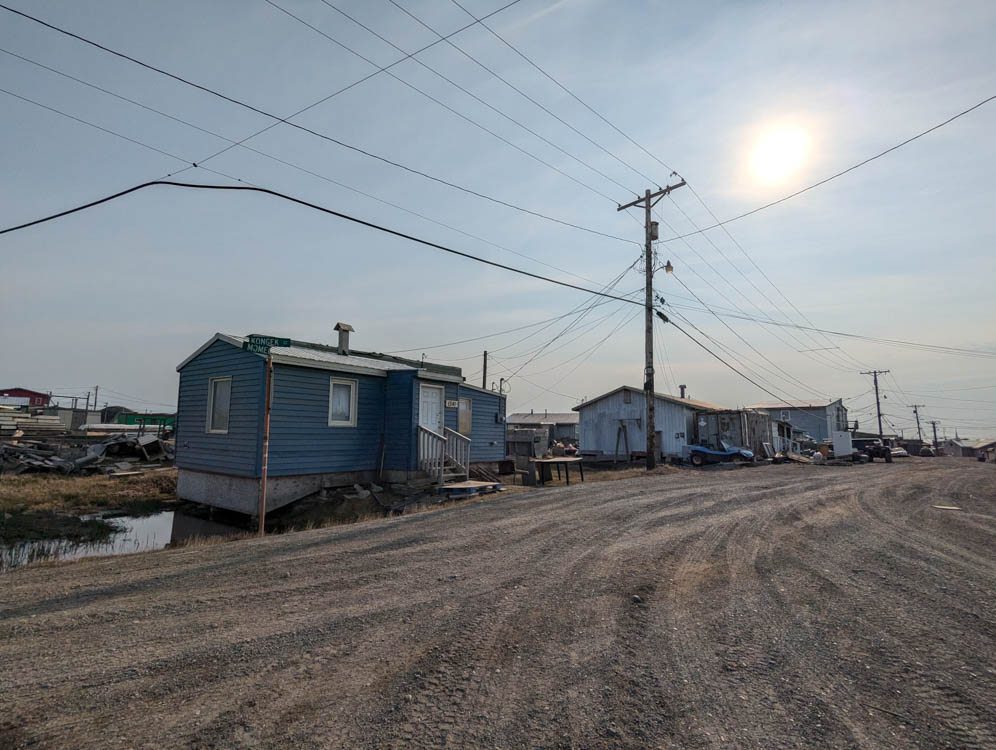
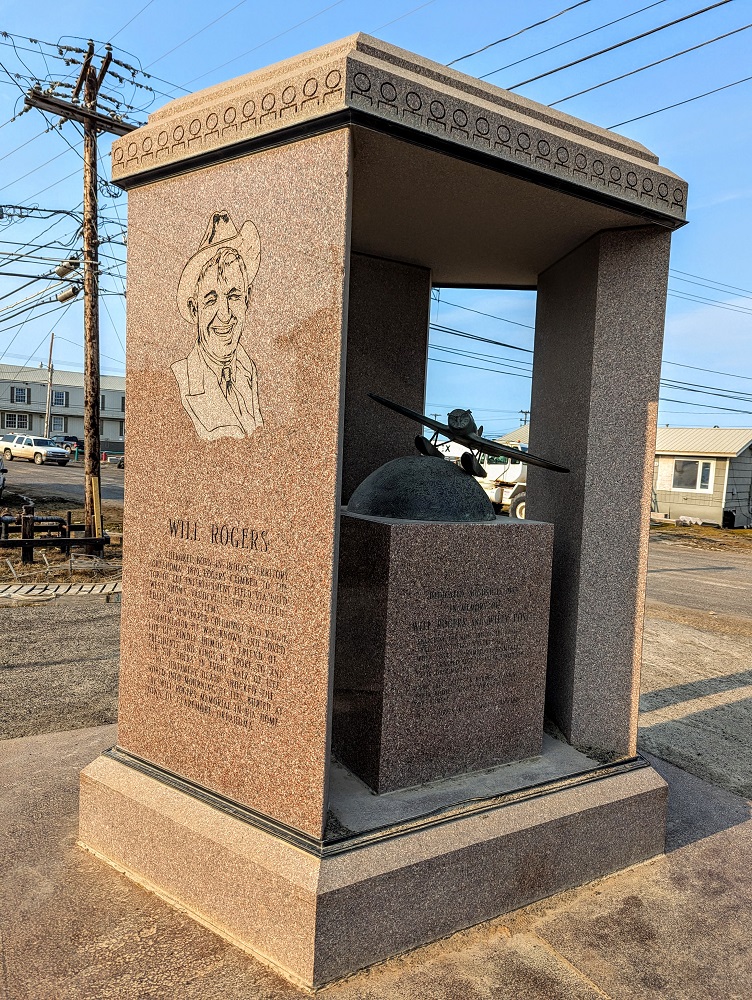
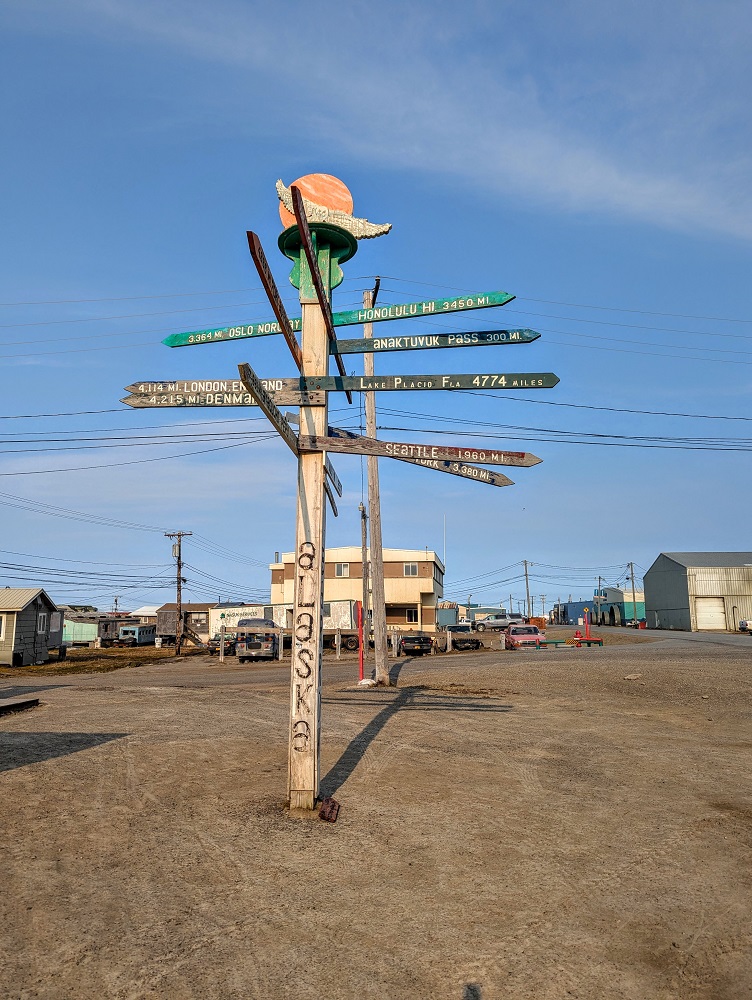
The homes are on stilts; this is because of the permafrost and weather that comes with being 350 miles above the arctic circle, and they appear weather-beaten. The bigger thing that you’ll notice is the amount of vehicles – cars, vans, ATVS, snow mobiles and bikes – that are around and you might wonder, why aren’t they cleared up!?
Everything that comes into Utqiagvik comes by plane. There are no roads in or out. So, if you’ve already paid to get a vehicle up there, you’re definitely not paying to ship back its parts when it no longer works. It’s what indigenous populations seem to truly excel at; nothing is wasted – not with animals after the hunt or with their belongings.
Where To Eat & Drink In Utqiagvik
While I’m so glad we walked all around two of the three districts of the city – Browerville and Utqiagvik (we didn’t get over to Narl) – it was mainly to find somewhere to eat dinner. Some places were already closed when we landed after 7pm.
East Coast Pizzeria
We finally found a spot for dinner – East Coast Pizzeria. We were prepared for the prices, knowing that it’s part of the experience of coming to Utqiagvik, and our dinner was delicious!
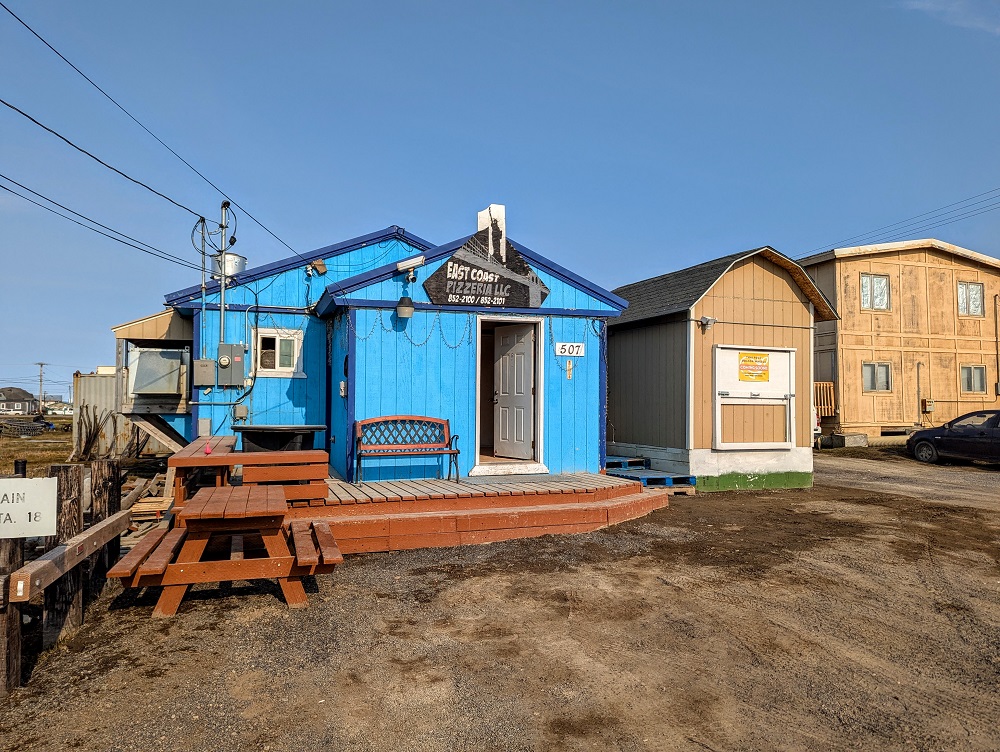
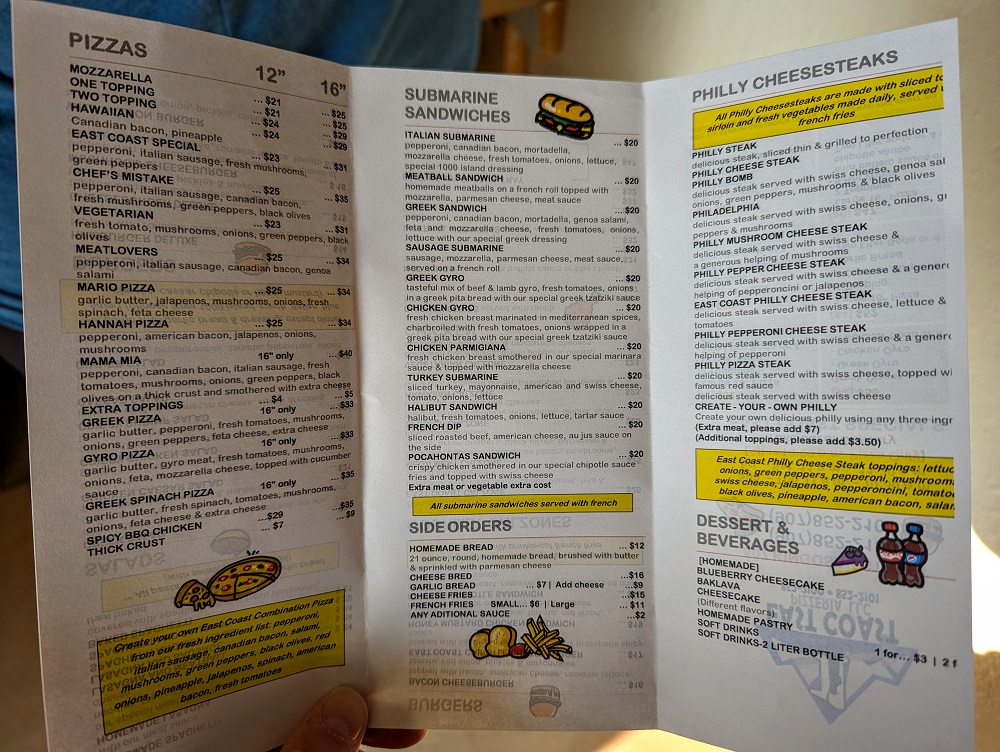
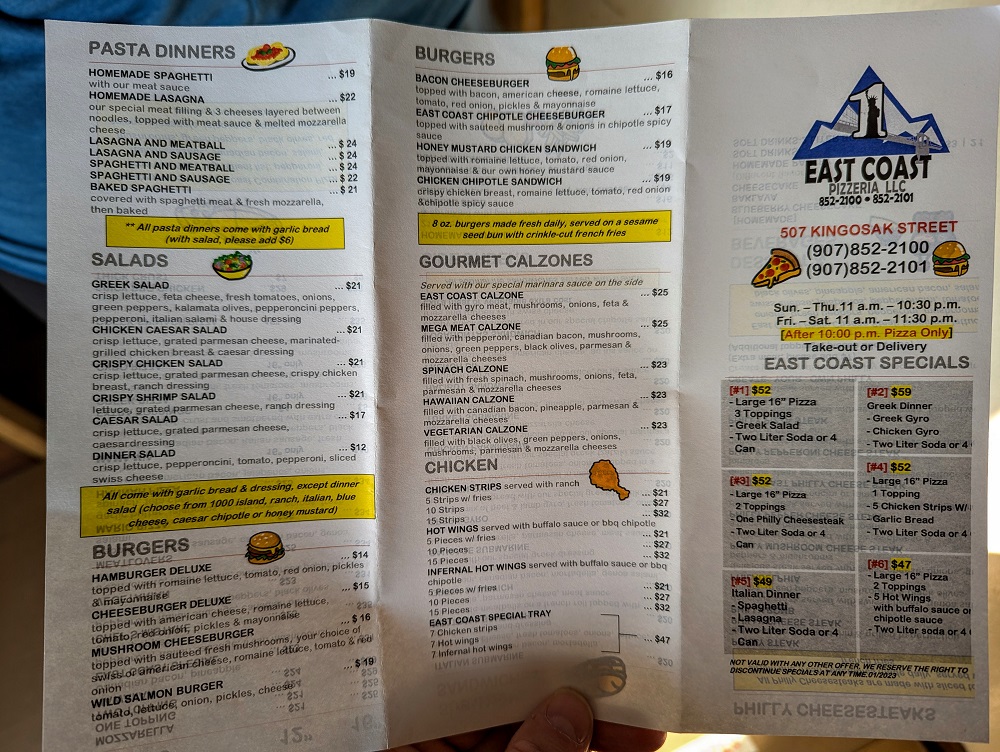
I had the French Dip with fries, Stephen had a Greek gyro with fries and we got a couple of cans of Coke. This cost us a total of about $50.
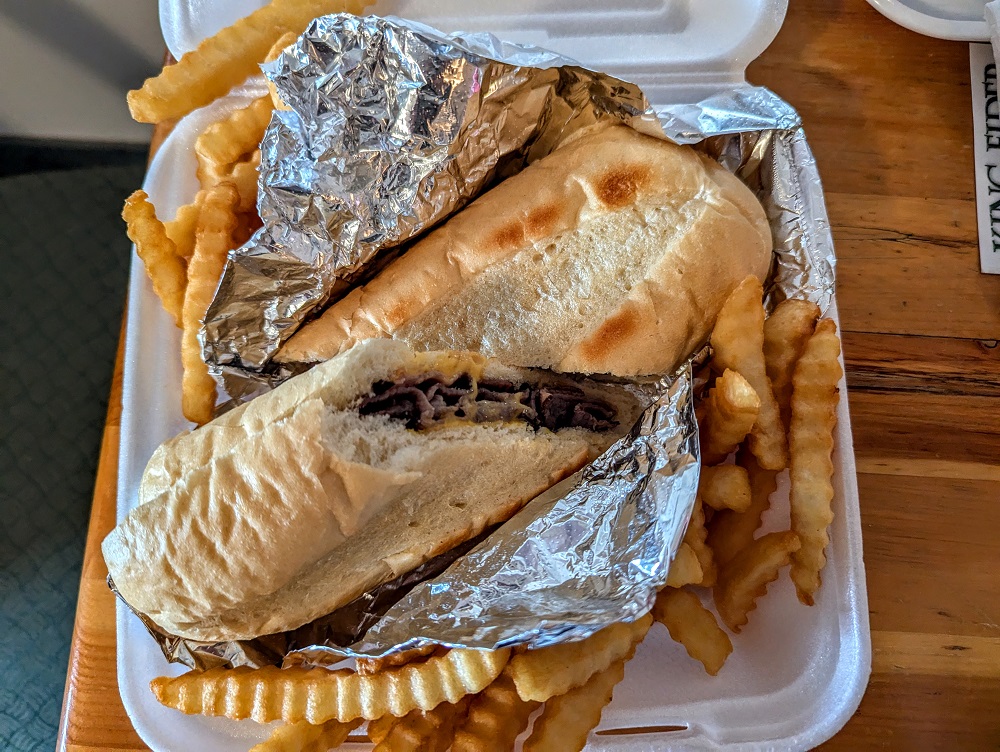

Here are other places you can get food and drink in the Utqiagvik.
Niġġivikput
Niġġivikput is the restaurant in the Top of the World hotel. We’d planned to have breakfast there, but we revised our dining plans that day due to the whaling festival (more about that later).
Stephen did grab photos of their menu though – there’s four pages of the menu in each of the photos below, so you’ll need to zoom in to see what’s available and their prices.

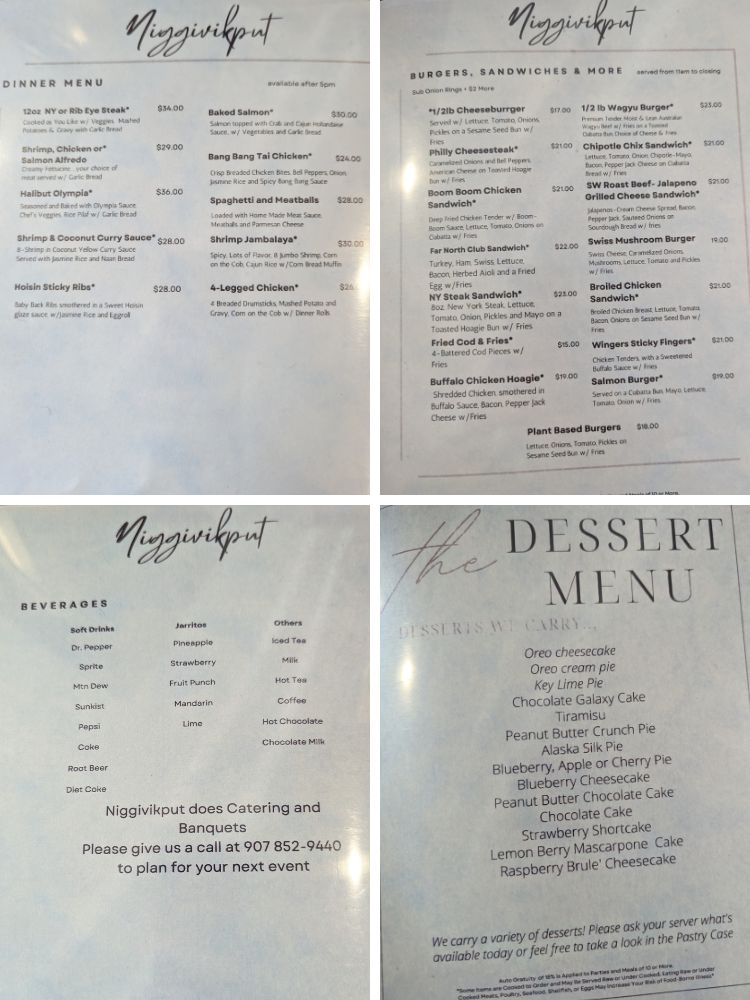
Liliana’s Fresh Baked & Cruz’s Mexican Grill
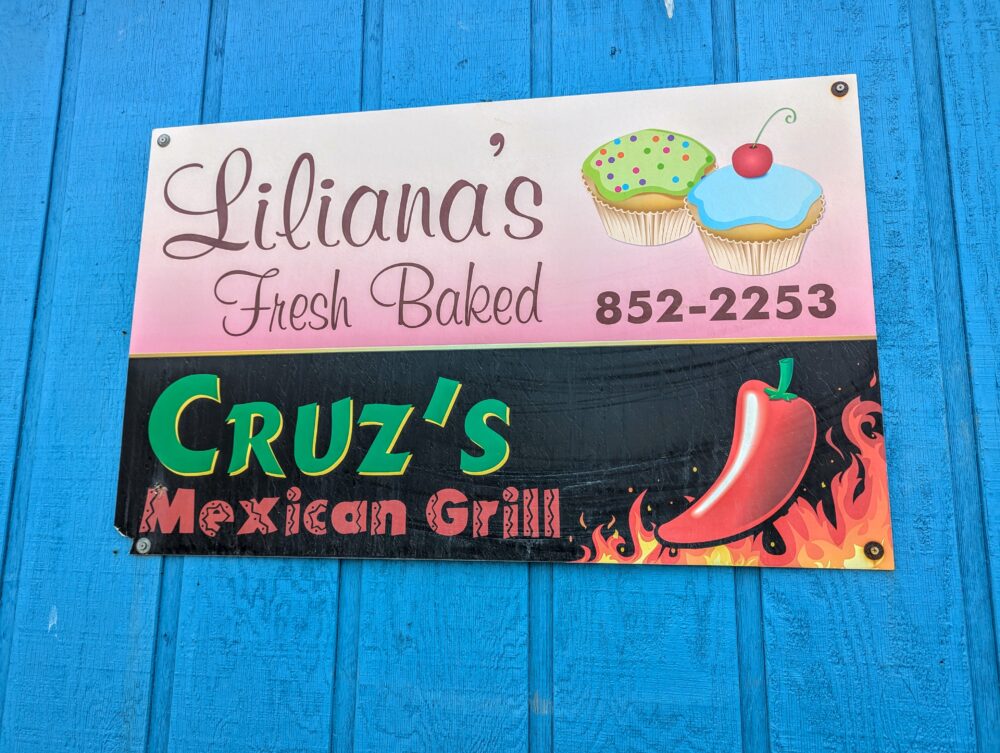
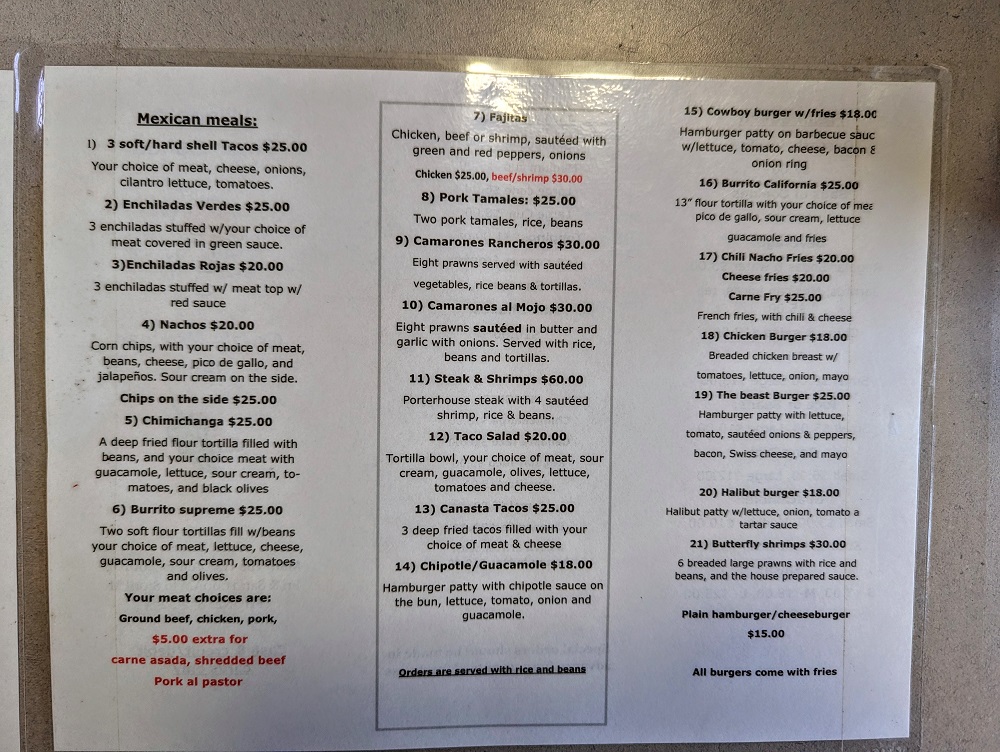
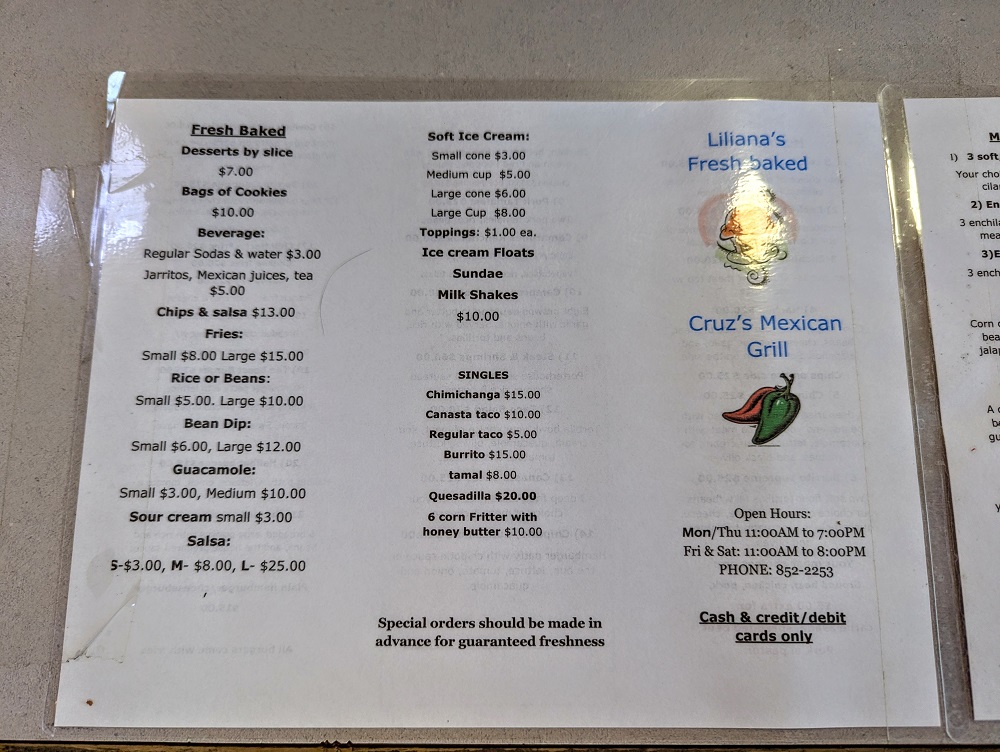
B & C Java
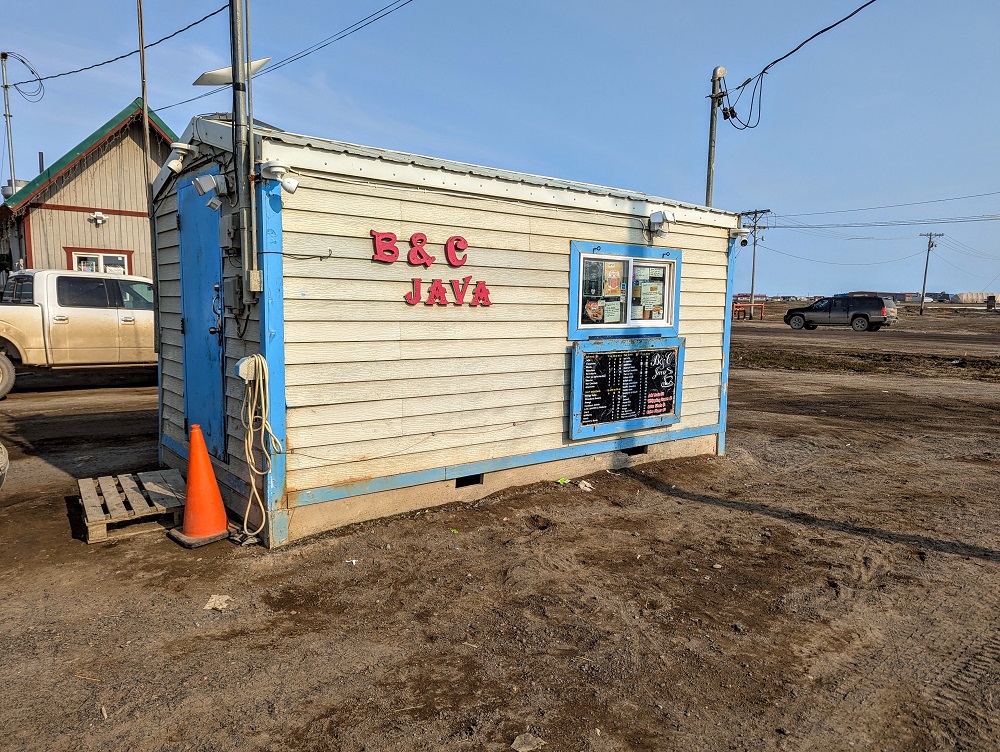
Thai Corner
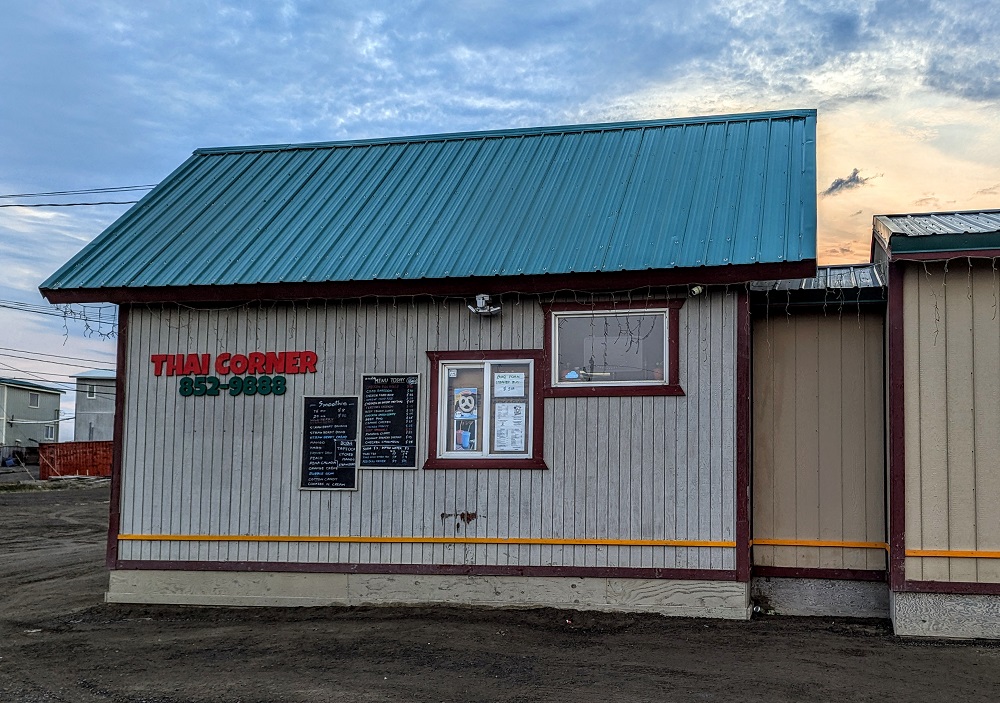
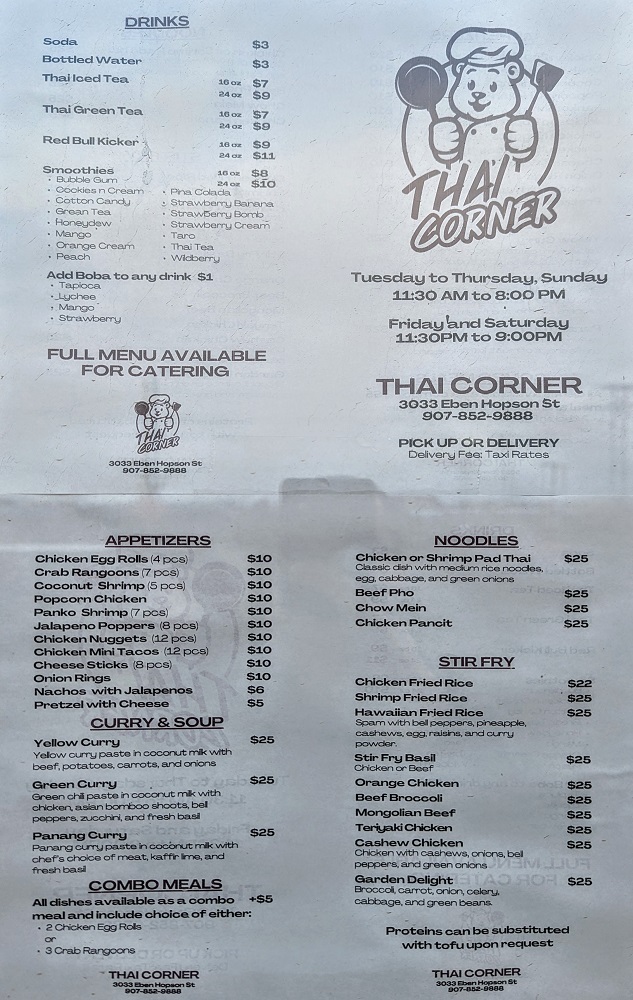
After dinner we took a nap so we were ready for our polar plunge that we planned to do in the hour between “sunset” and “sunrise” from 1:50am to 2:50am.
Doing The Polar Plunge
In the summer in Utqiagvik, the sun doesn’t dip below the horizon during the hour between sunset and sunrise. Unfortunately, it was too cloudy to see the sun but you can see just how bright it was out during our polar plunge.
For the uninitiated, a polar plunge involves jumping in freezing water (usually in the winter) and jumping back out. They do this off the ships in Antarctica and they tie a rope around you! I have dreams of getting to Antarctica one day and I couldn’t pass up the chance to also do a polar plunge in the Arctic.
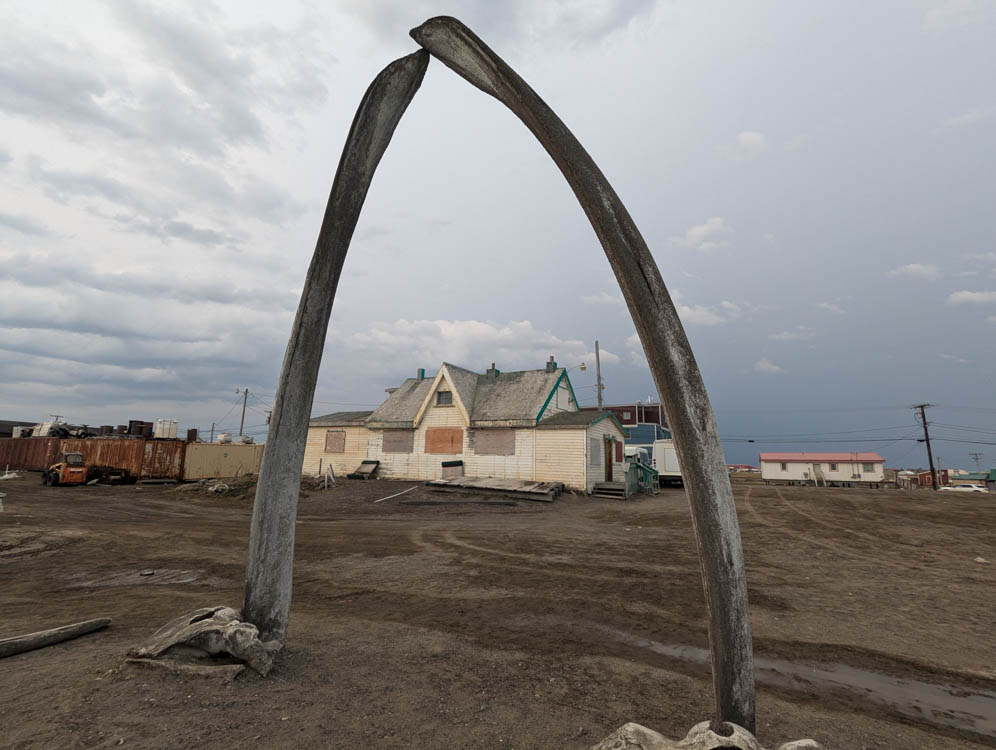

We were advised, by the staff at the Top of the World hotel, that to do it in Utqiagvik it was at our own risk, but that if we had video proof that we went under the water – including our heads – we’d get a certificate and a patch.
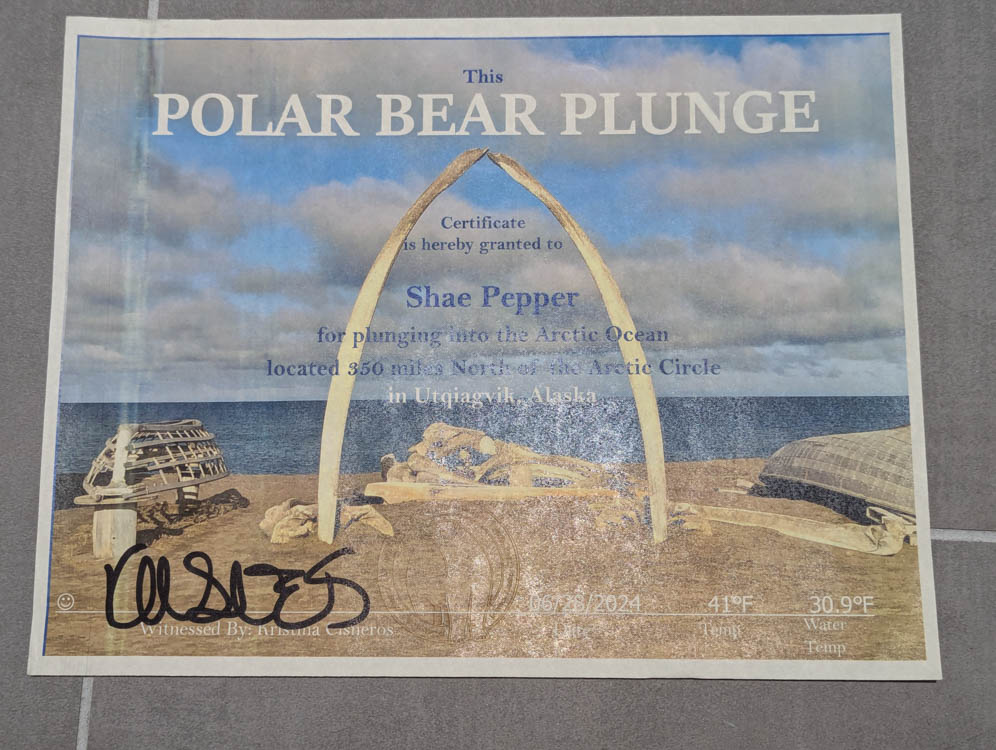
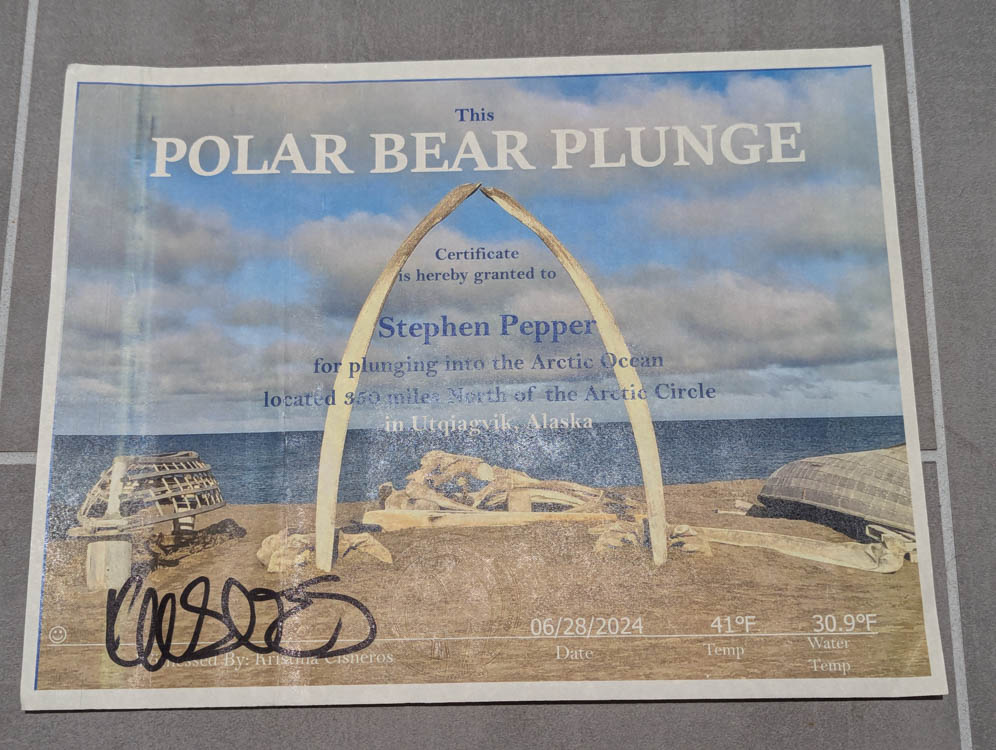

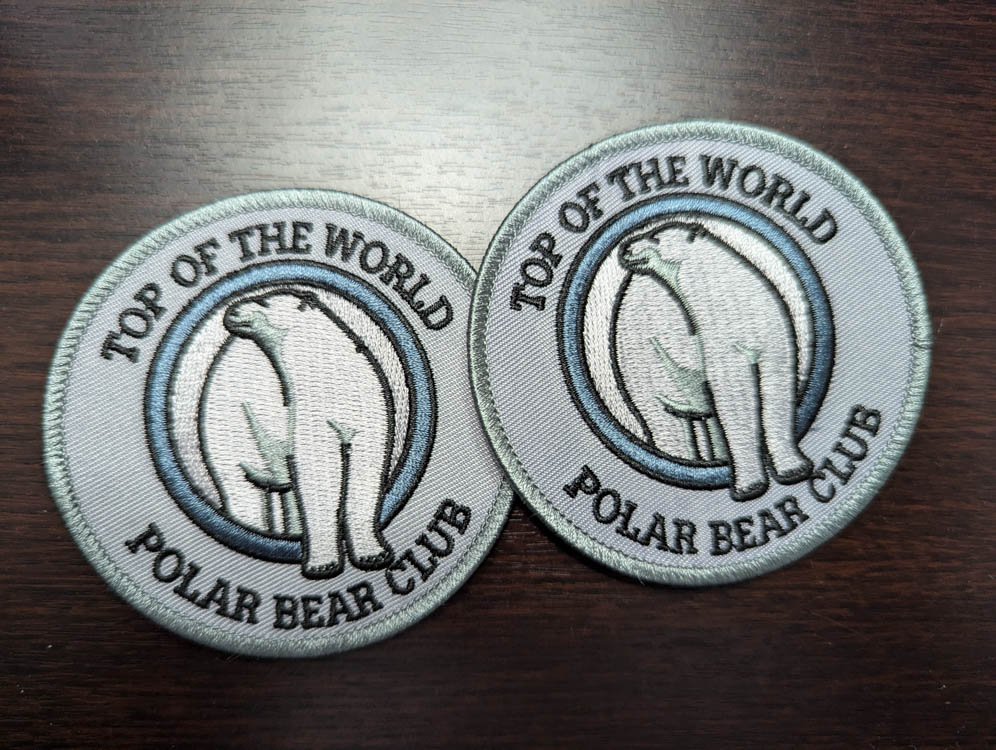
Here is the full video of our polar plunge experience in the Arctic Ocean:
Please note that based on these two pictures from the video I’m the ultimate winner of the Pepper Polar Plunge because I was truly all the way under – even my bottom!
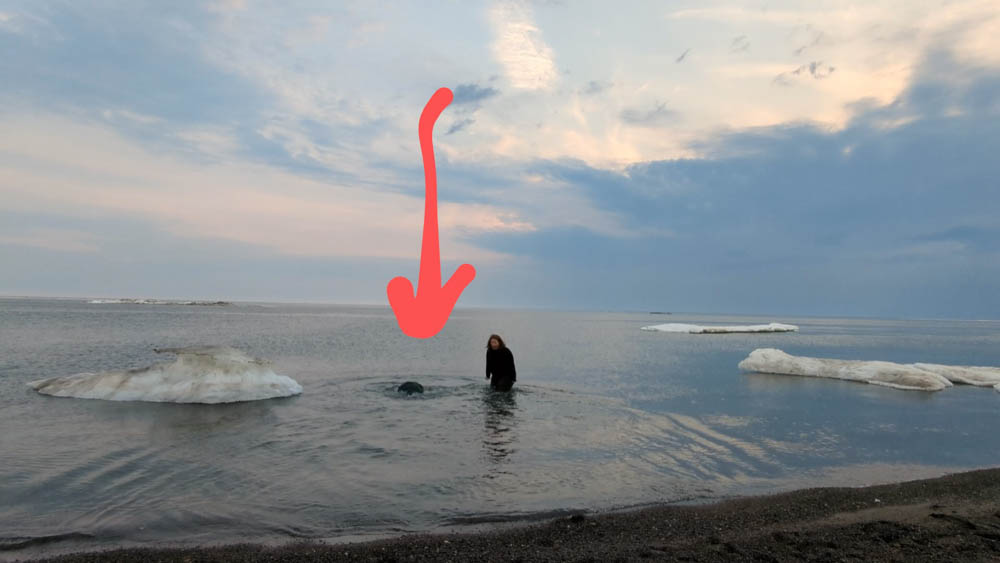

We changed and hung out taking pictures of – and on – the sea ice before walking the 20 minutes back to our hotel. It seems that jumping in the ocean at 2am and having a shower wakes you right up, so we didn’t drop back off until 5am.
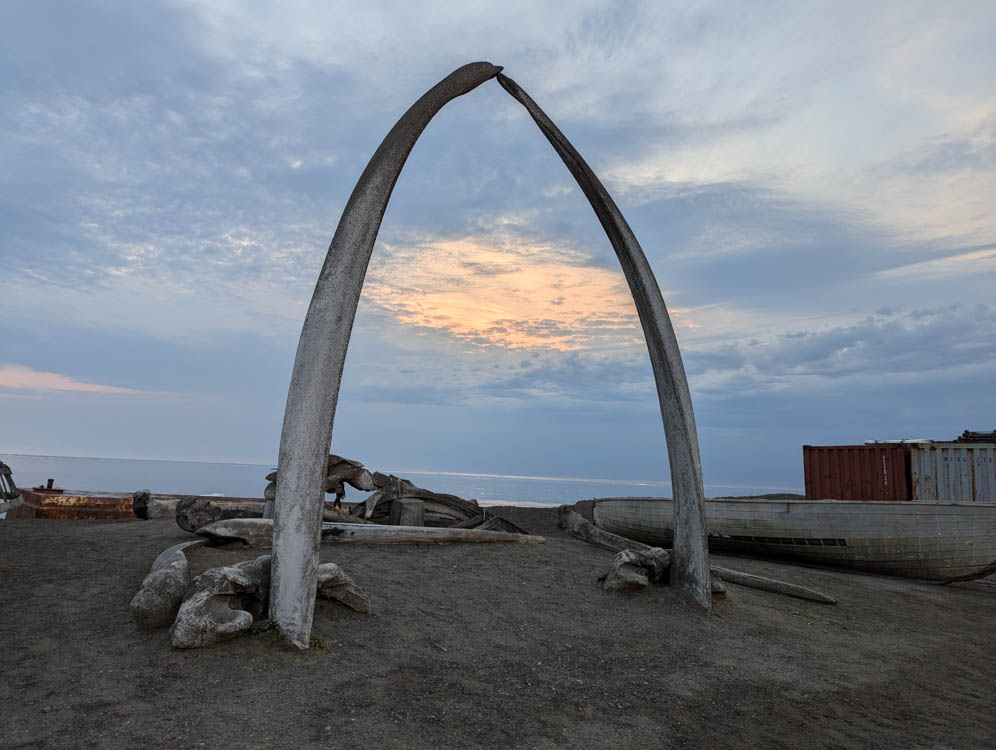
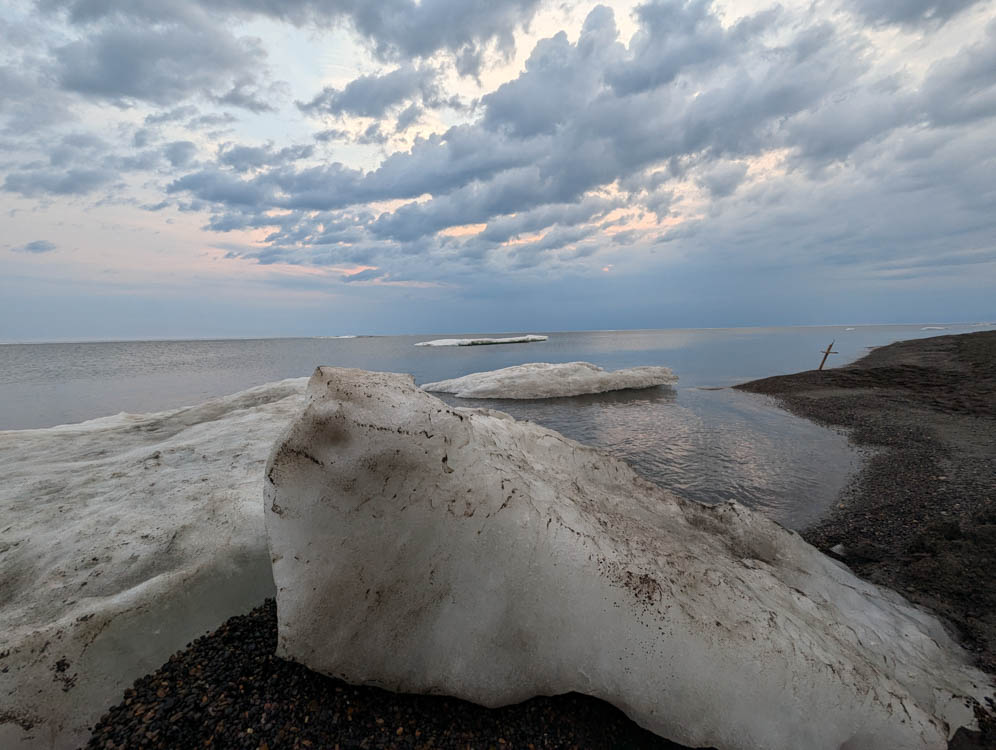
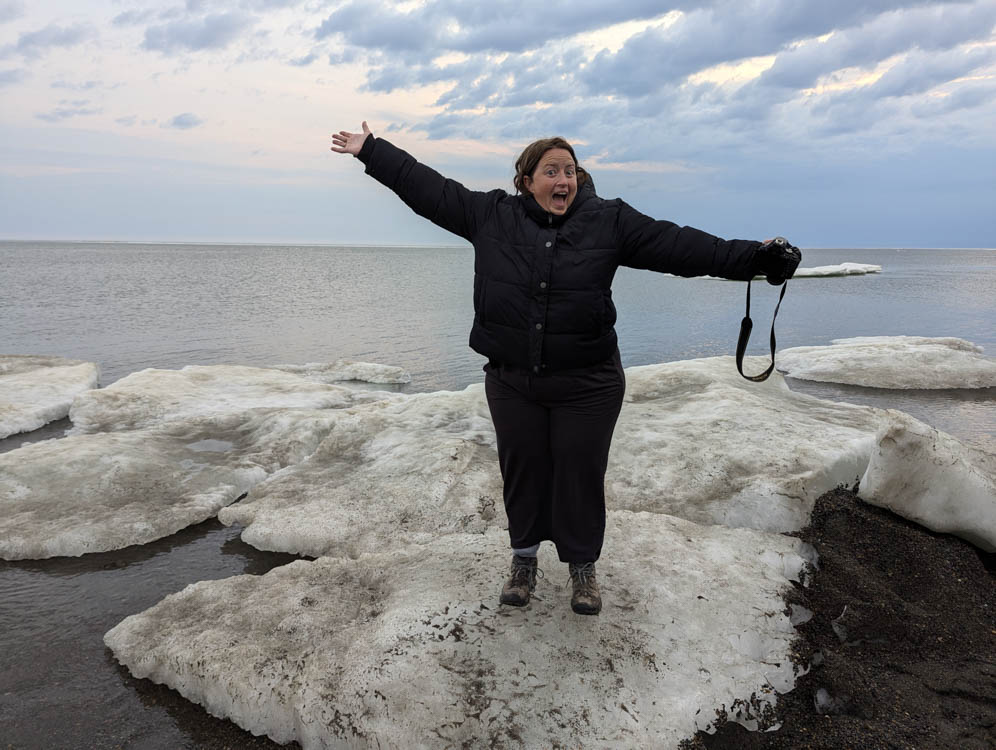
Nalukataq – The Whaling Festival
Originally our plan for the day in Utqiagvik was to wake up, head over and get reindeer sausage with our breakfast at the Top of the World hotel’s restaurant, wander the town, go to the grocery store to see the high prices (this was recommended) and then do the community museum before heading back for our flight.
That all changed when we figured out that not only was the whaling festival going on, but that anyone was welcome to join in and participate.
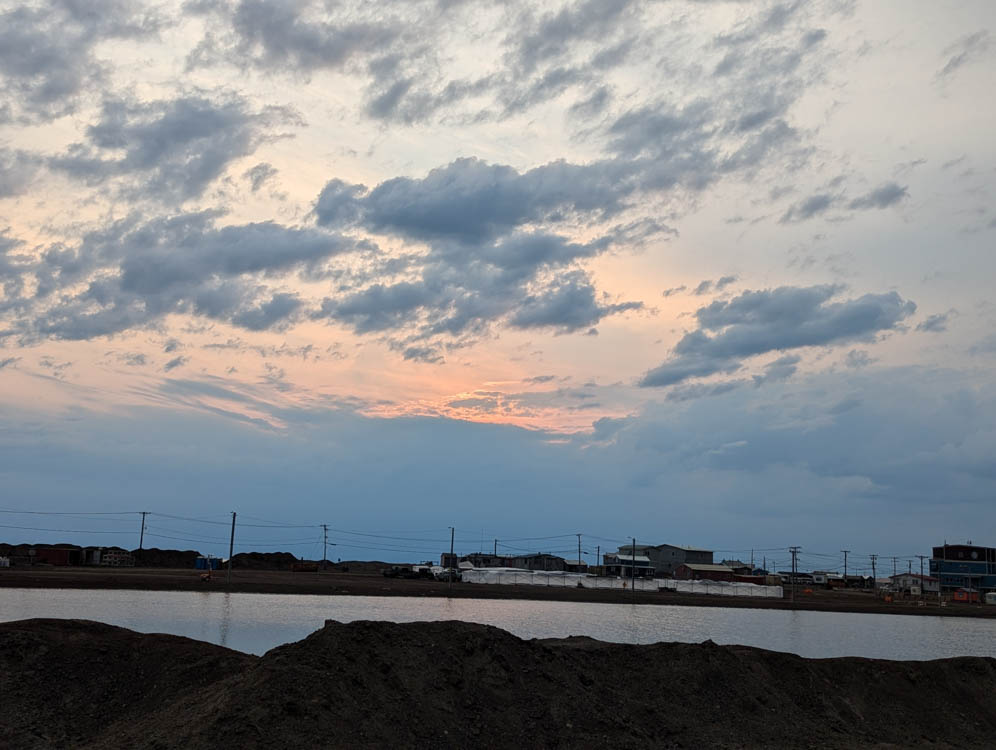
Nalukataq celebrates the end of the spring whaling season and is a time where the community comes together to share the whale as part of their subsistence food sources. During the festival we asked someone to share how it was pronounced and they were happy for us to record the pronunciation:
The festival is usually the third week in June and different teams of whaling crews host each different day. The day we were there the Brower family, who sponsored and led one of the whale hunts, was the host.
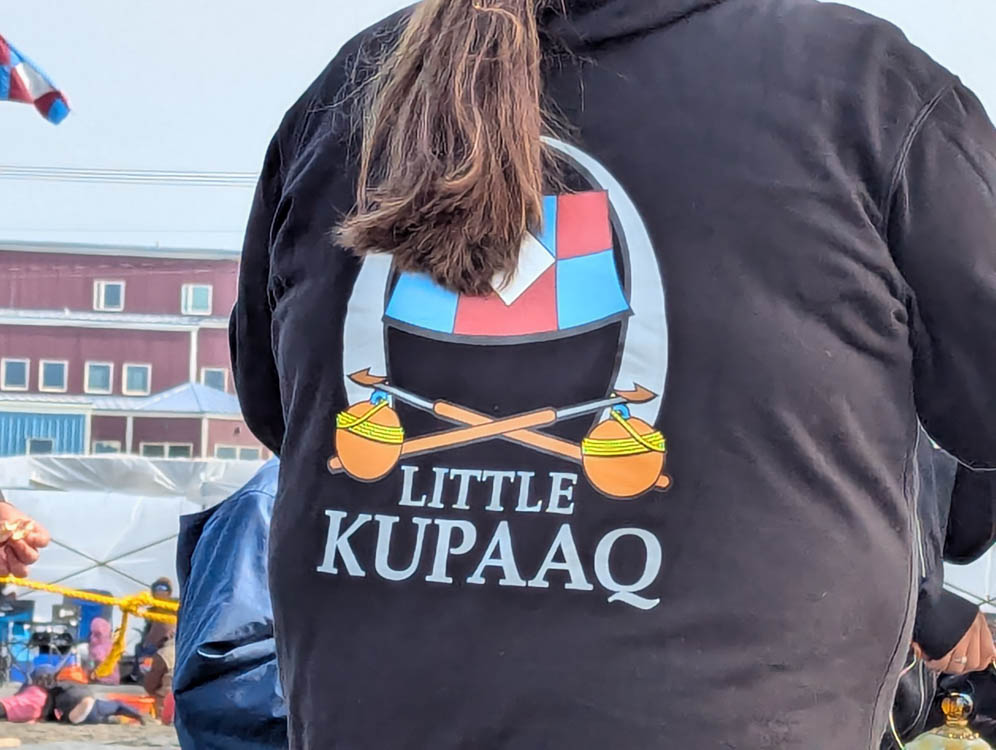
The family, including a lot of teenagers, prepare the whale. They then make different food from the whale, as well as duck, geese and caribou. They walk around with giant pots, tubs, and buckets of all the different types of food. Community members bring coolers, cups, bowls and plates, as well as chairs to sit on.
As all the food is handed out, people eat and talk. They also get extra to take with them home for their freezers. The elders in the community are given special priority on extras, leftovers, seconds and thirds and have their own special fruit dessert.
We didn’t have our own bowls, forks and spoons initially, so we made our way up to the grocery store quickly to pick up some of those.
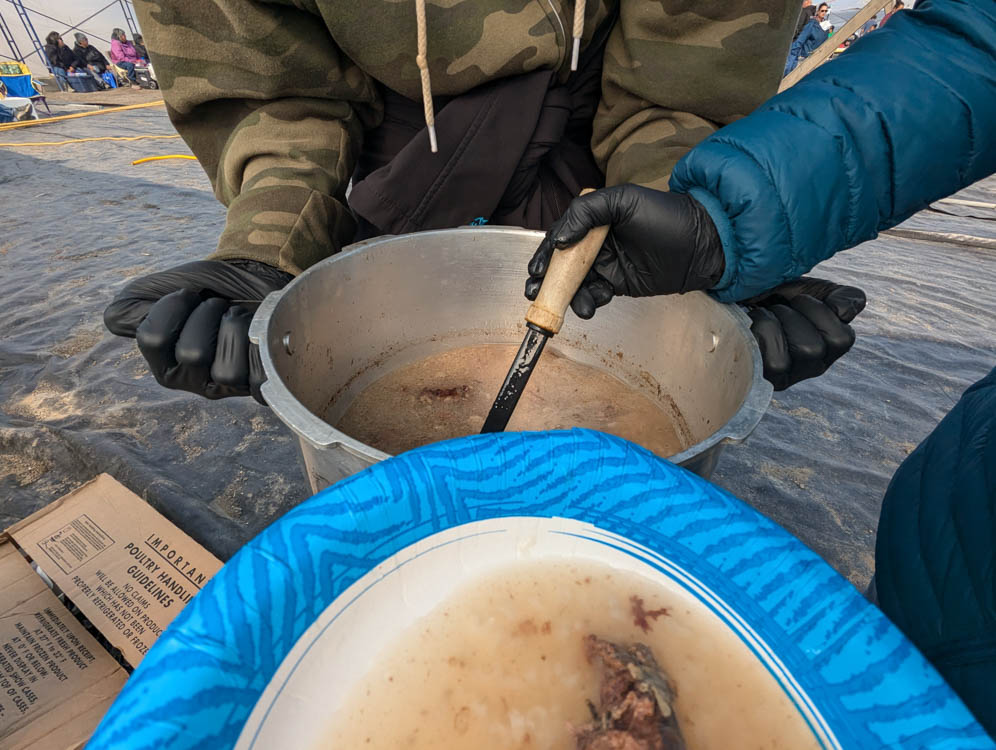
To put into perspective what a special treat this was, besides getting to enjoy this community event… The local indigenous Inupiat people, even those that work full-time and part-time, participate in subsistence hunting and fishing to supplement their diet throughout the year. Part of this is to keep cultural traditions alive and part of it is to offset the high cost of living at the edge of the world.
As I mentioned above, there are no roads in or out of Utqiagvik. None. The only way in is by plane. So everything that gets there – clothes, vehicles, electronics, food, etc. all has to come by plane one way or another. This makes everything very expensive. What this means for tourists – like Stephen and I visiting the area – is that none of the restaurants in the city are allowed to serve subsistence foods. One cannot find whale, seal, polar bear, or caribou on the menu.
The closest on offer for a local food dish is at one of the two major hotels. The Top of the World Hotel, in its restaurant Niġġivikput, has reindeer sausage available. That’s brought in because it is a subset of caribou, not the local caribou that the indigenous people eat. Subsistence food sources are protected for the local people. As people who love to try the local food, we completely understood this policy and support it, and were fully prepared to go and enjoy our imported reindeer sausage in good spirits.
By being included in the festival though it meant we were able to try the local food, see a local festival and celebration and talk to local people. We sat by Ms. A and her husband, Mr. C (I’ve left their names out for privacy). In June, they celebrated being married for 51 years. They have many children, grandchildren and great-grand children. We learned that Ms. A was born and grew up in Northwest Alaska and once she married Mr. C, she moved to Utqiagvik and has lived there ever since. We can’t thank them enough for their kindness as they sat by us throughout the day and for including us in their celebrations.
We weren’t able to stay until the main course which is apparently amazing and something that Mr. C said he was sad we were missing. But we really wanted to get over to the museum before we had to fly out.

So here’s the list of food we tried. We didn’t have any bowls or cutlery, and now upon reflection we probably could’ve asked our neighbors, but we ran down to the grocery store since it was on our list anyway. You can see more about that experience in the next section.
- Duck soup – duck meat and heart
- Caribou soup – only meat in our bowl
- Eskimo ice cream (this is the name the local people used for this dish – Inuit is the appropriate generalized term for Native Alaskans, not Eskimo unless they tell you otherwise) – Akutaq- with caribou fat and berries
- Whale intestine, tongue and heart – Uunaalik – yes, we tried all three
- Cooked fruits -Siignaq – they stew the fruit and then chill it. It tasted like it was peaches or apricots.
- Fermented whale – Mikkigak – is whale meat that is fermented in the blood of the whale for about 4 weeks.
We left before the favorite – Muktuk – whale skin and blubber that is often served raw but can be eaten frozen, fried or pickled.
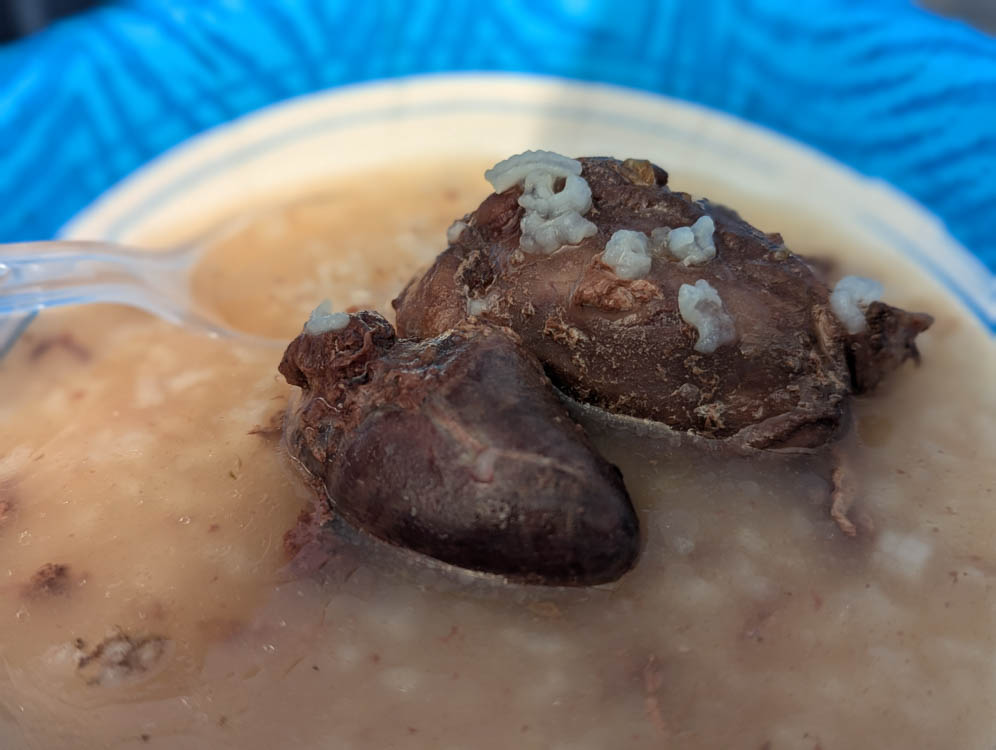
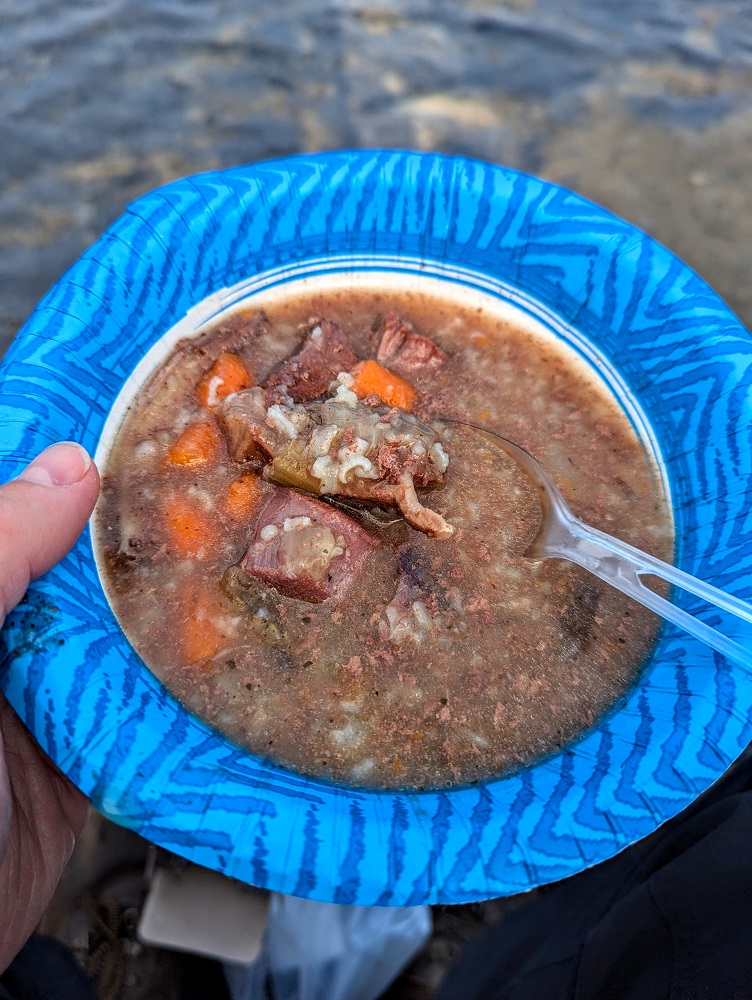
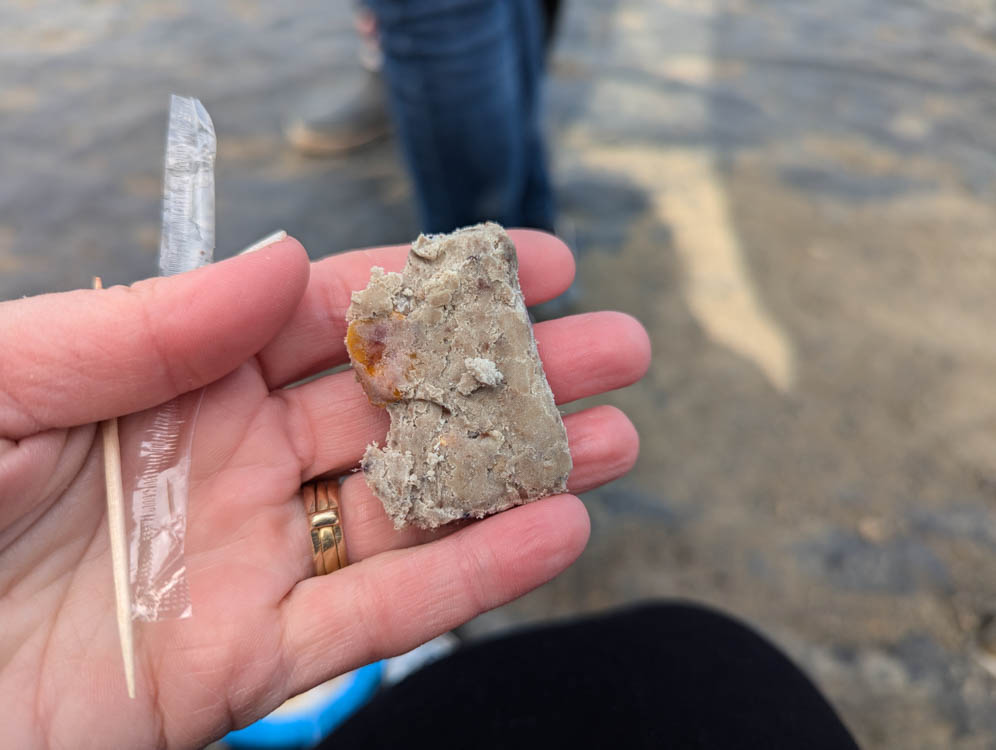
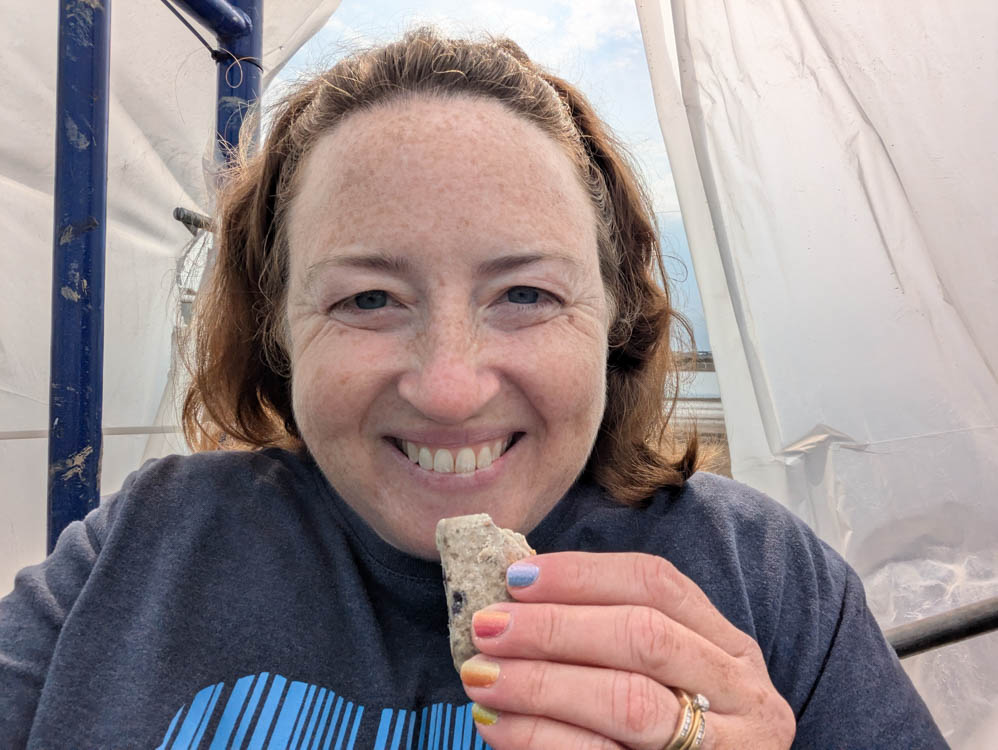
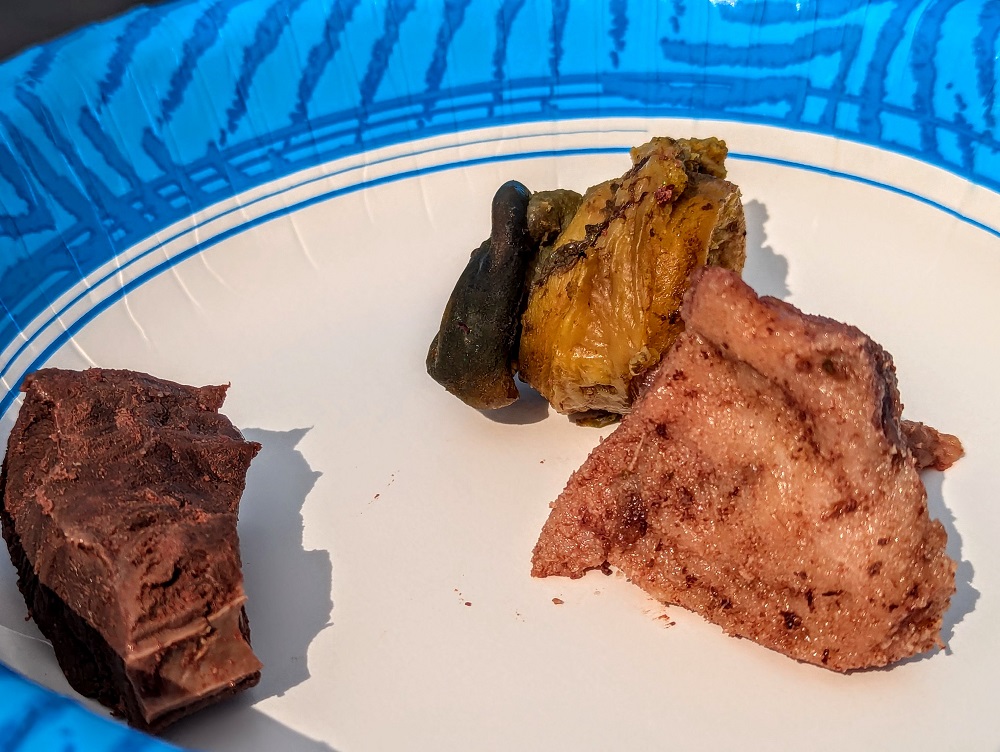
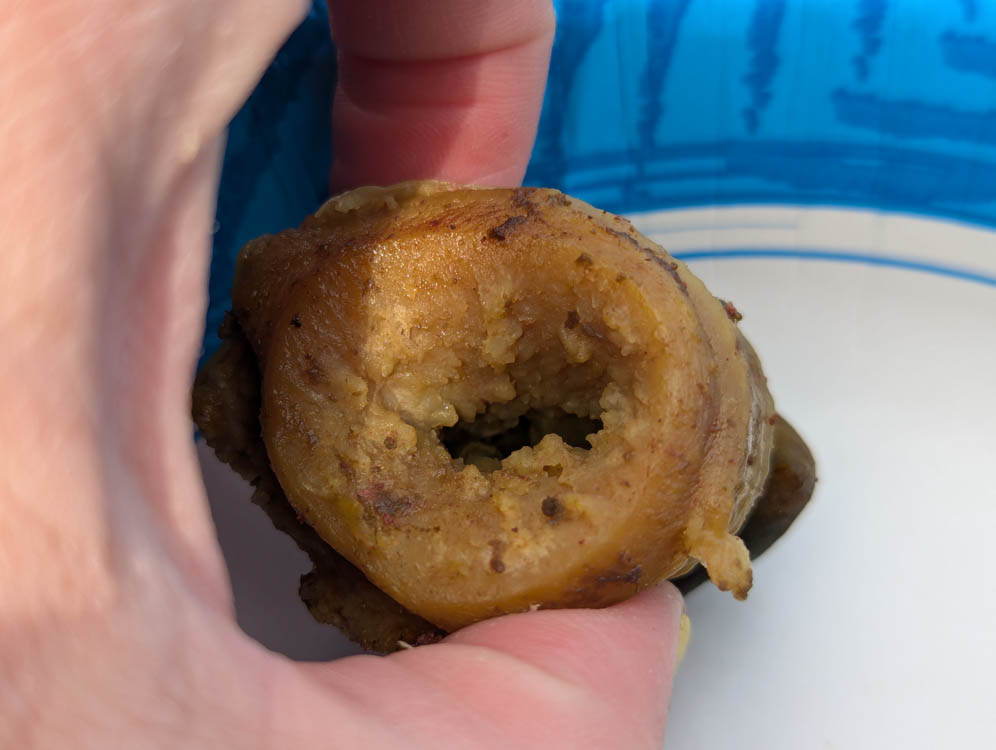
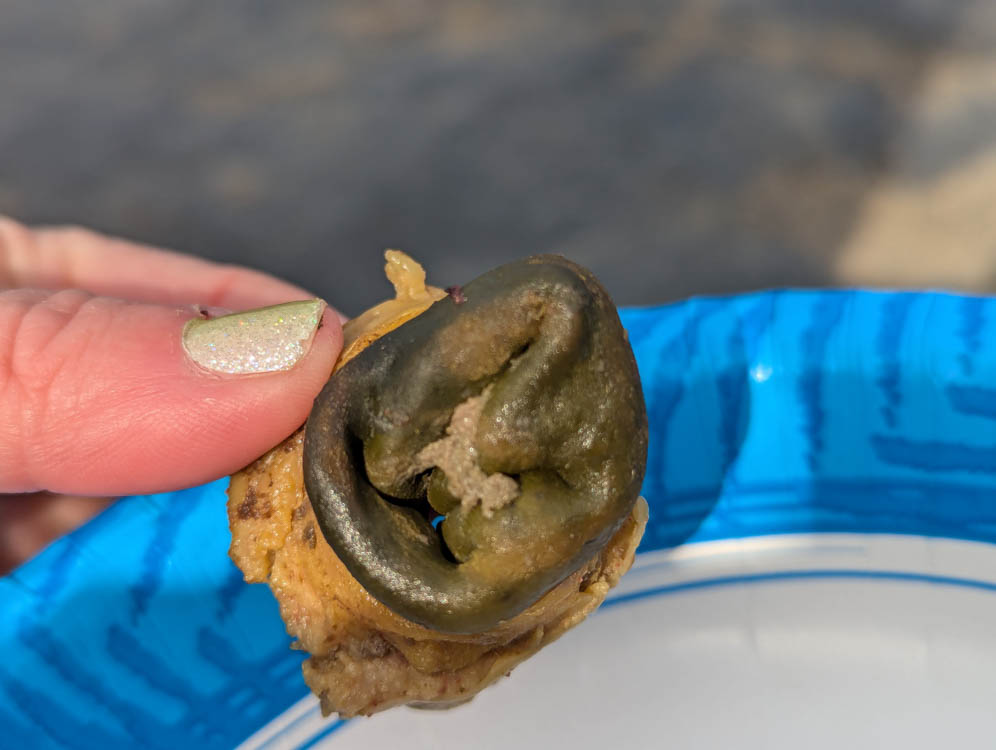
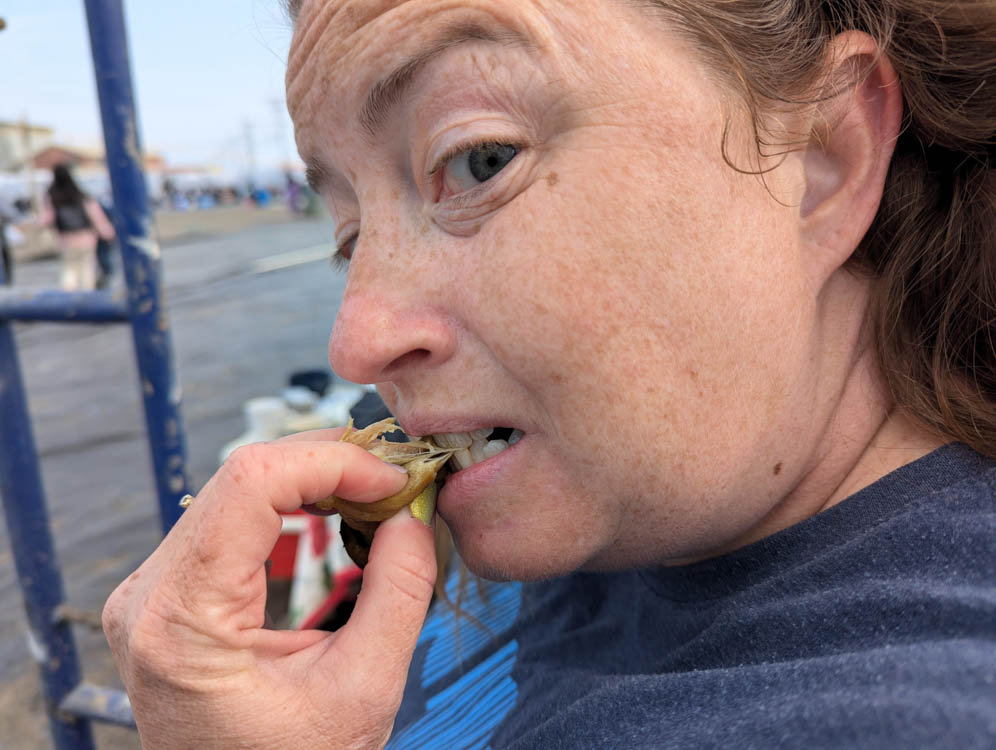
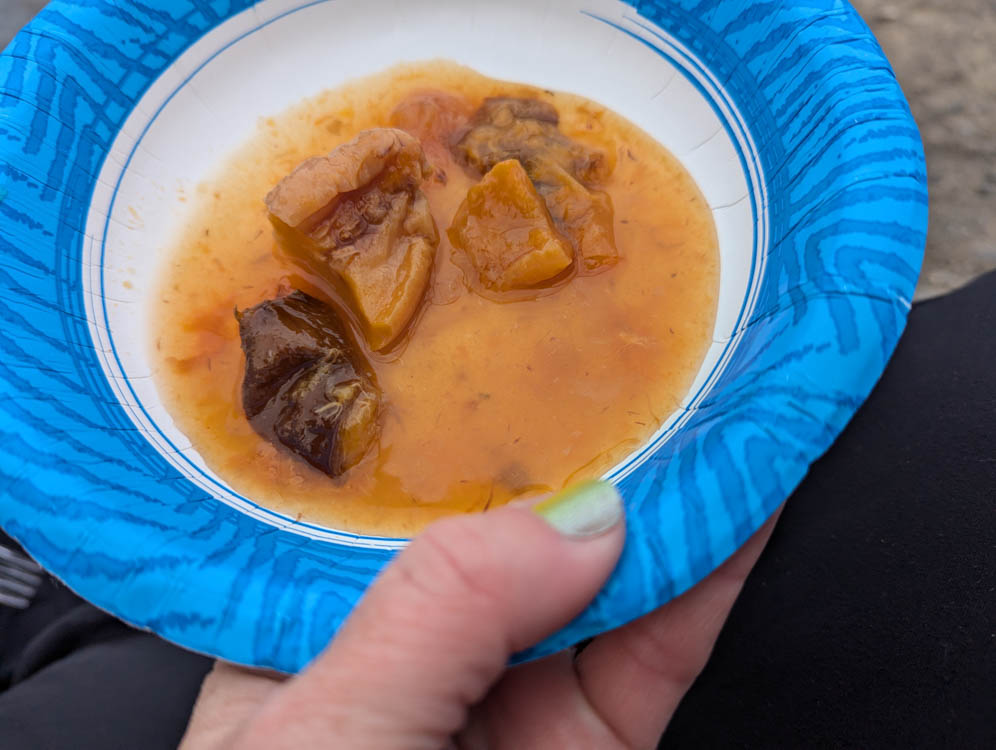
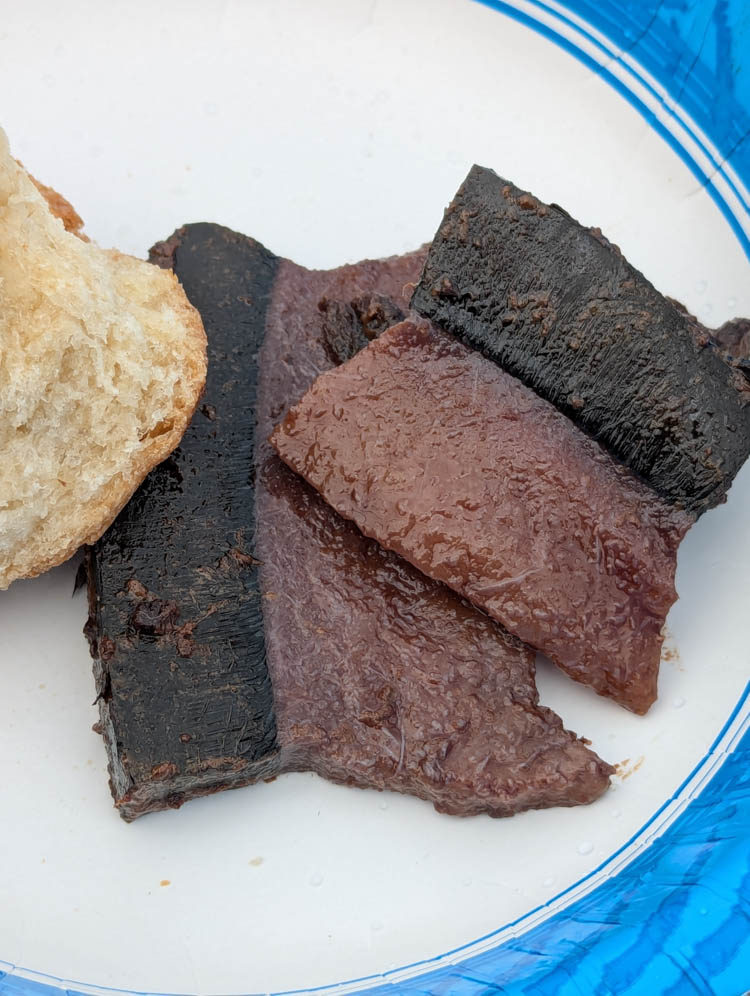

The best thing was the caribou soup which was rich and flavorful. When I was at the Reindeer Farm in Leavenworth Washington, they mentioned that the majority of the world that lives above that latitude has caribou as their main red meat. I can see why because cooked well, it was delicious!
Our least favorite thing of the day was the Eskimo ice cream. This is caribou fat with berries that is frozen. And it tastes like eating frozen fat with berries. While it wasn’t something my palate was used to, I enjoyed being able to try everything and participate in this special community experience.
This next photo is a truck with bags of processed whale, with the bags being distributed to families. There were 6-8 days/whales for this year’s festival. The truck is only for one whale, one crew, one day. NOAA regulates the hunts and monitors the whale populations. But, indigenous people in Alaska are given permission to hunt whales a few times a year for cultural and subsistence reasons.

At the museum we found out that in the spring, the whale teams still use the traditional boats. In the fall season, they use motorboats nowadays because of the unpredictable weather.
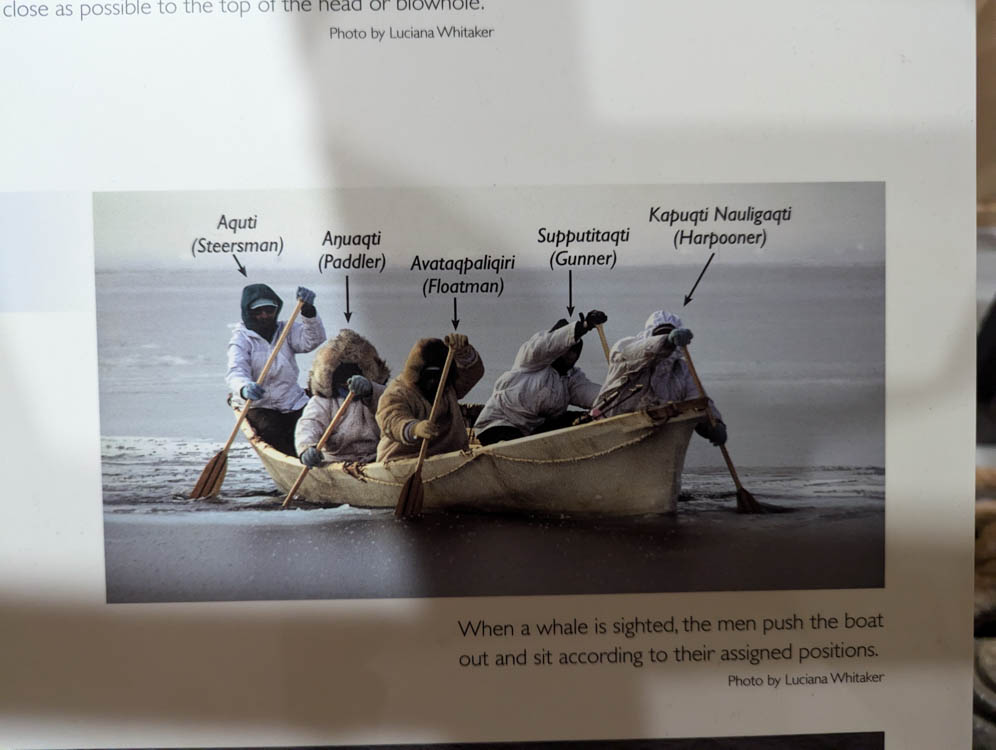
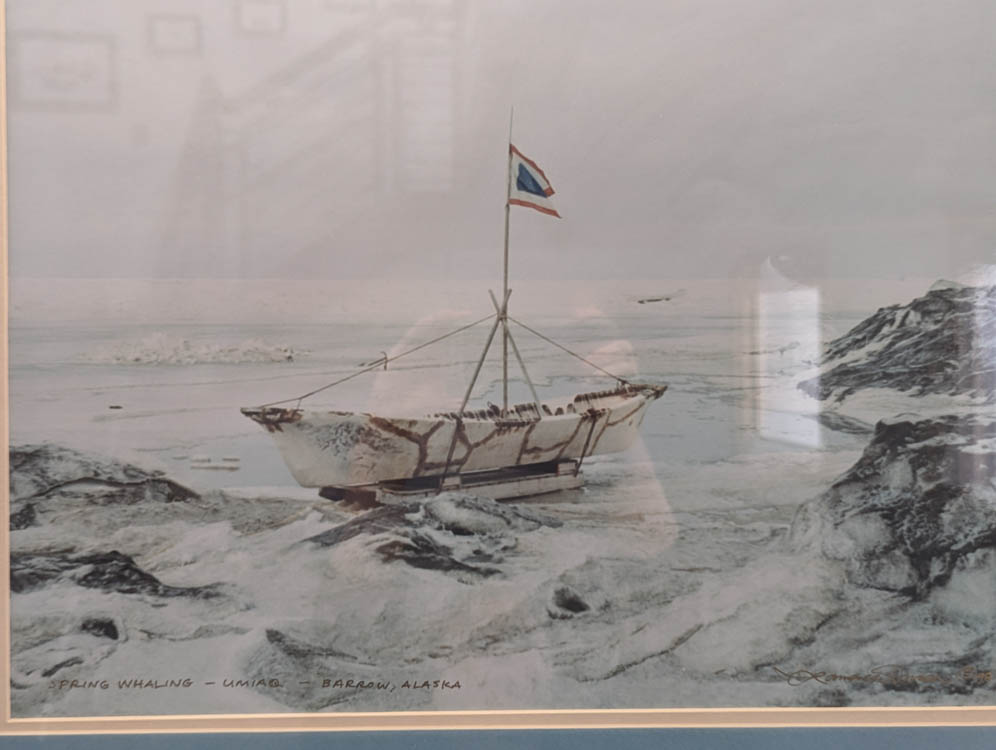
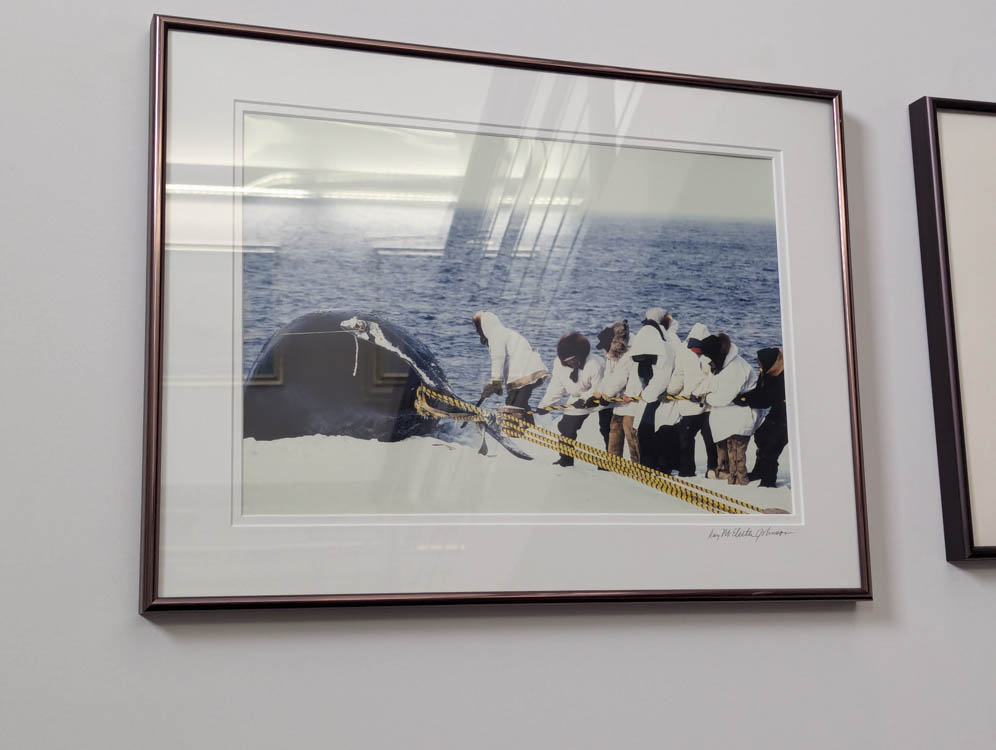
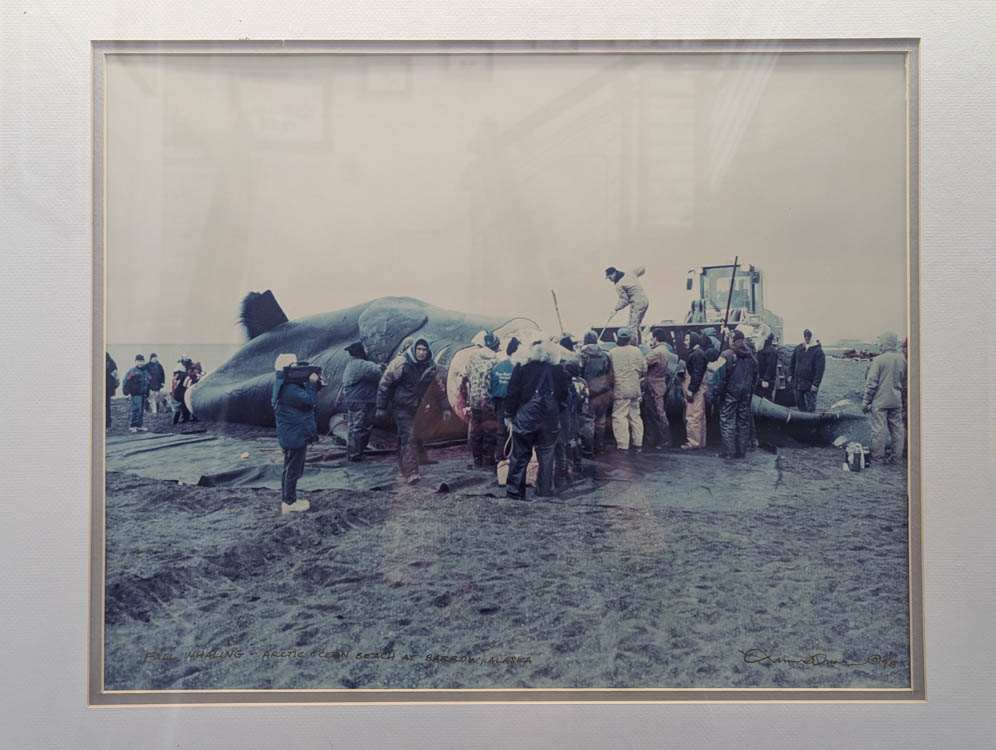

It was an incredible experience. The other cool part of the celebration that we missed both days because it was held at 6:00 to 7:00 p.m. and we arrived at 7:30 p.m. and departed at 5:30 p.m. was the blanket toss. Historically, the blanket toss is used to honor those who would have to be tossed up in the blanket while on the hunt to look for the animals from above. Now it’s used as a celebration for the end of the season. The blanket is actually a tarp made of seal skin and you can see it in the pictures with the portion of whale that was cut on site.
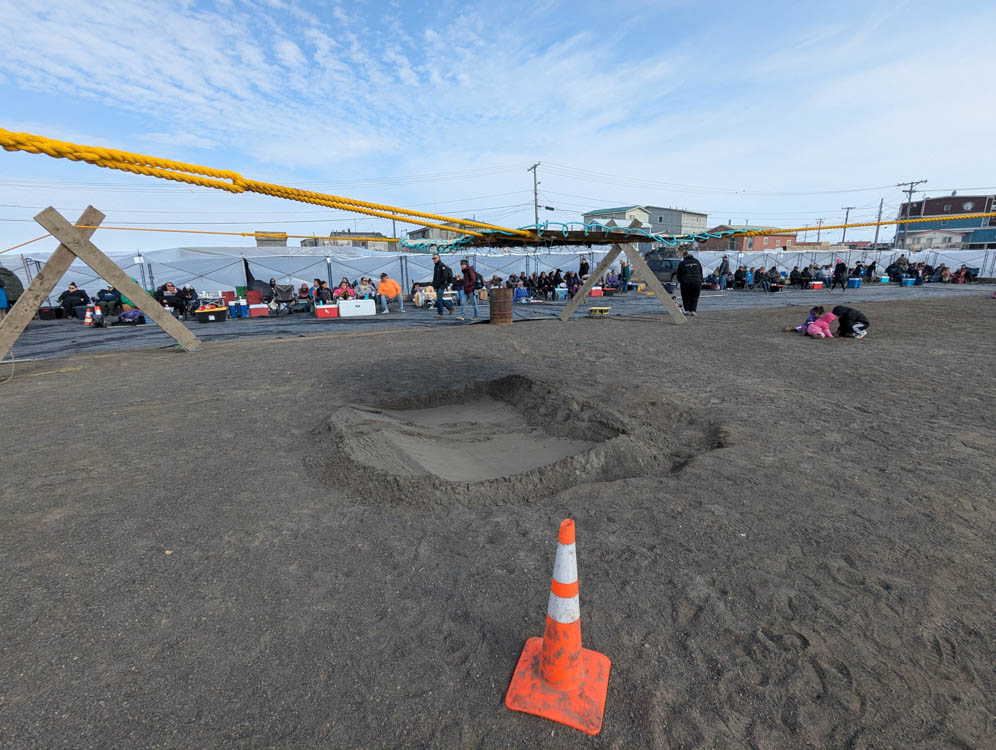
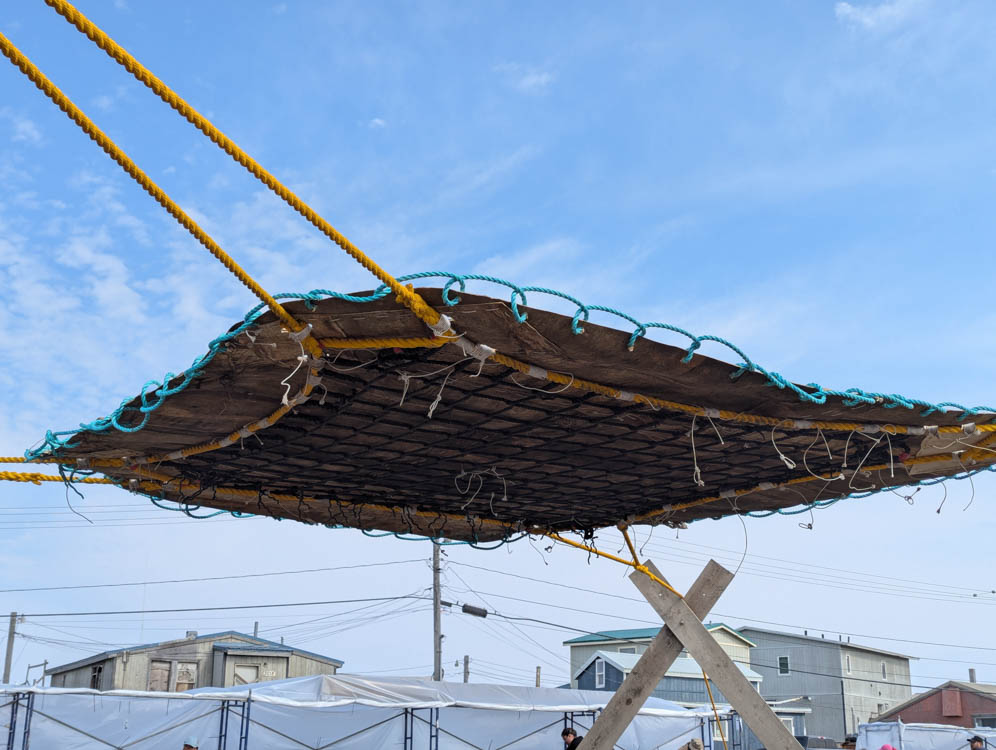
Grocery Store
The grocery store was on our list of places to visit in Utqiagvik because of the prices we could expect to see on various goods. It was much larger than I was expecting and included a few other items like home goods, clothing, souvenirs and more.
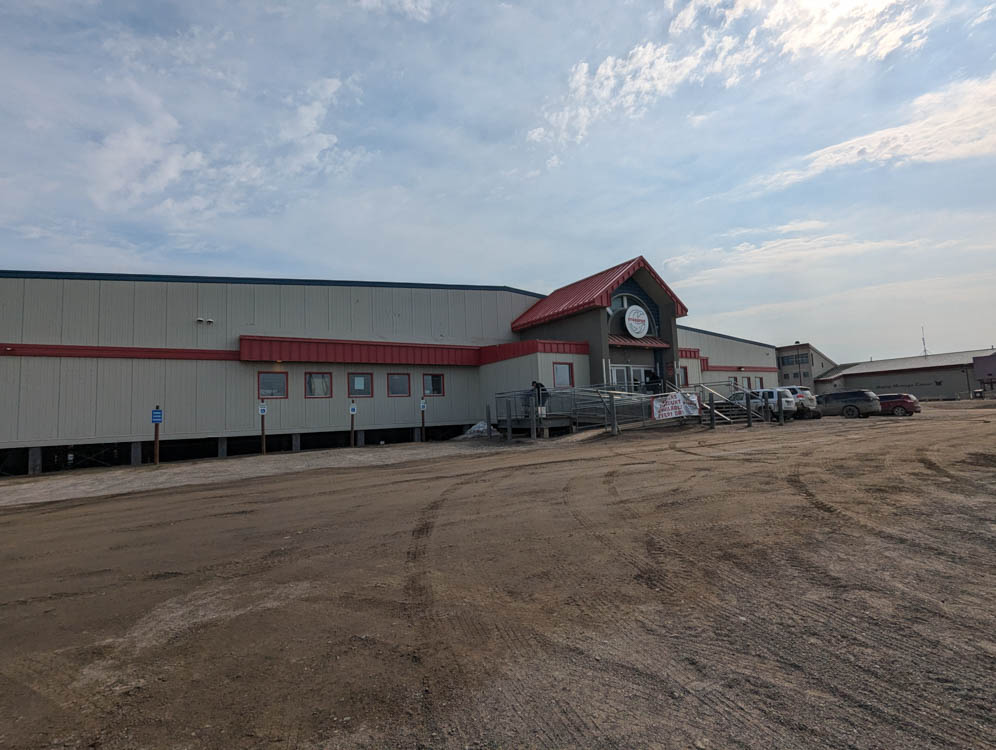
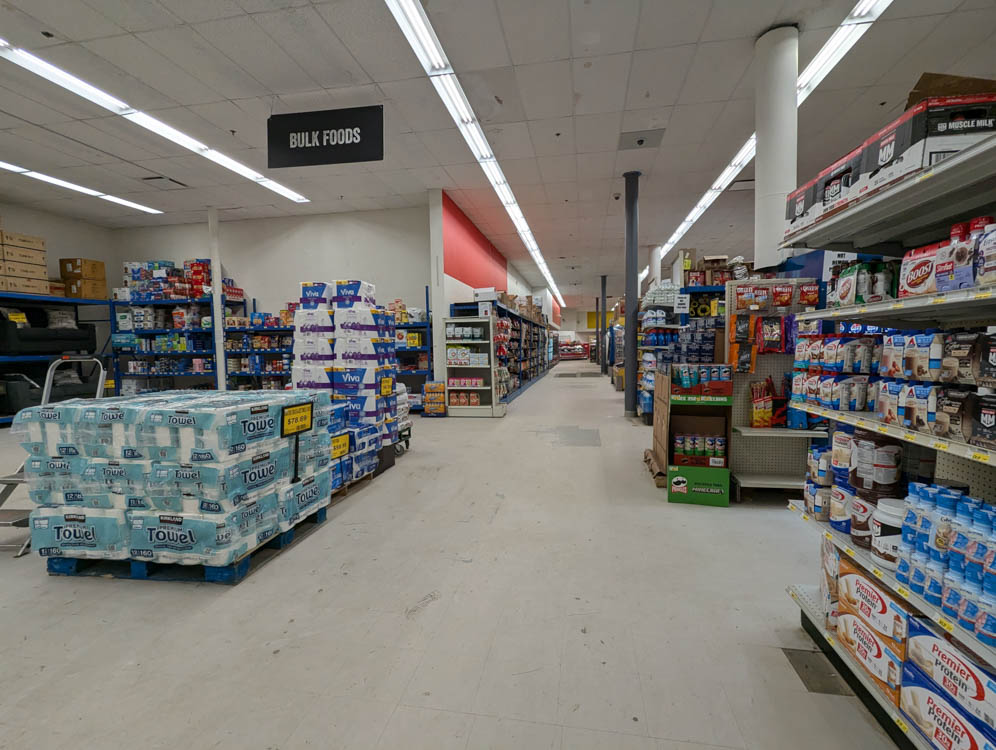

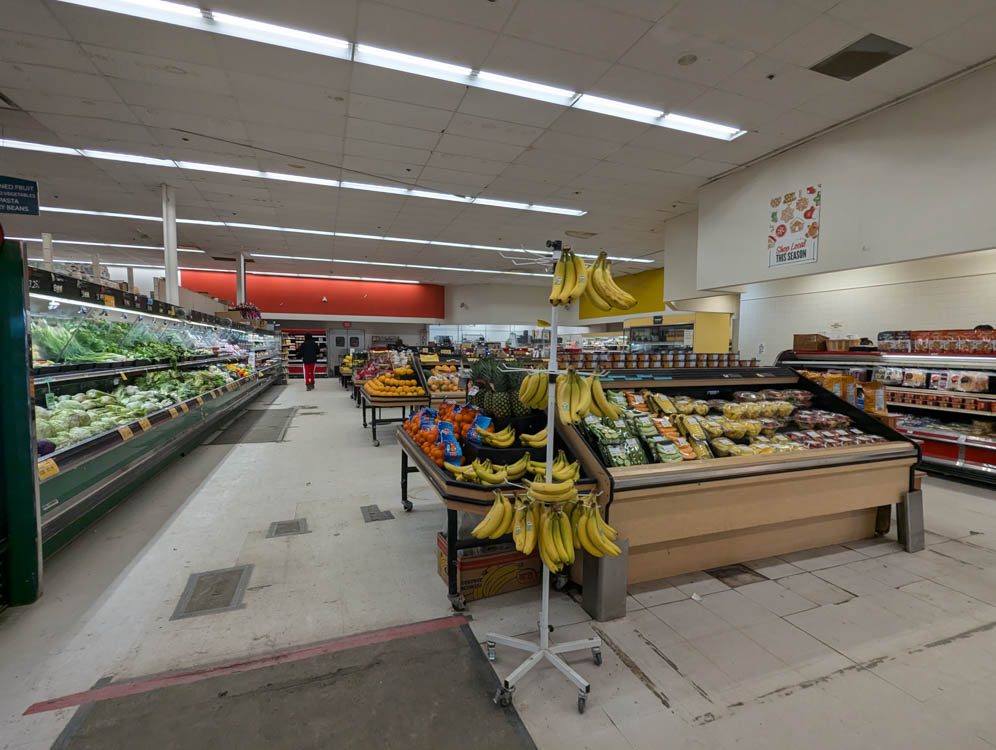

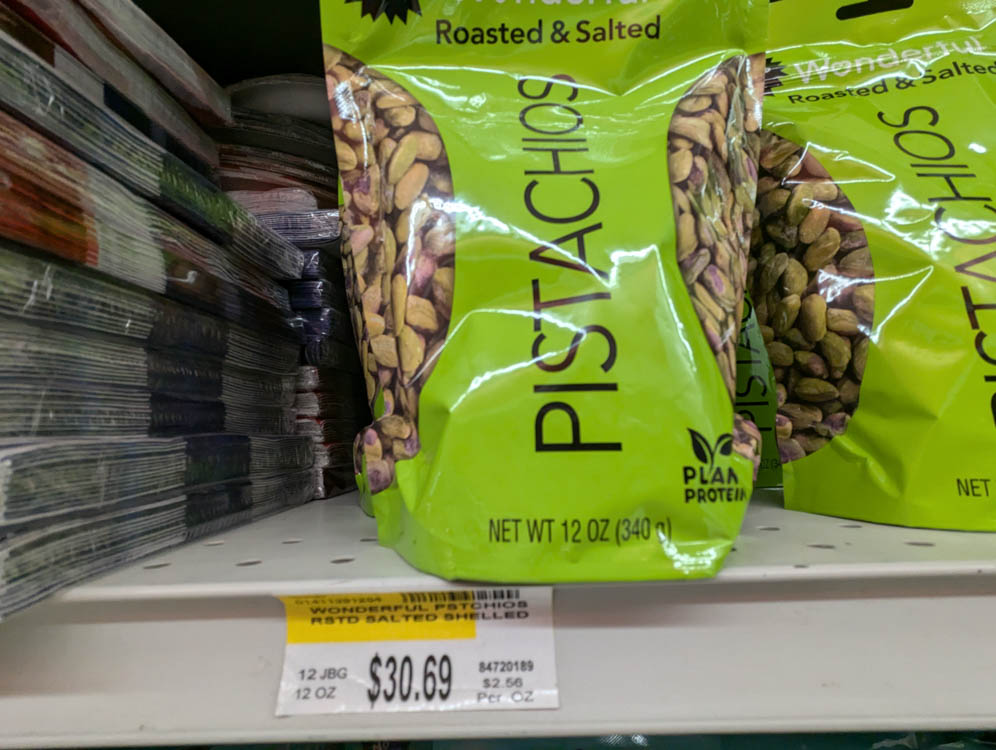



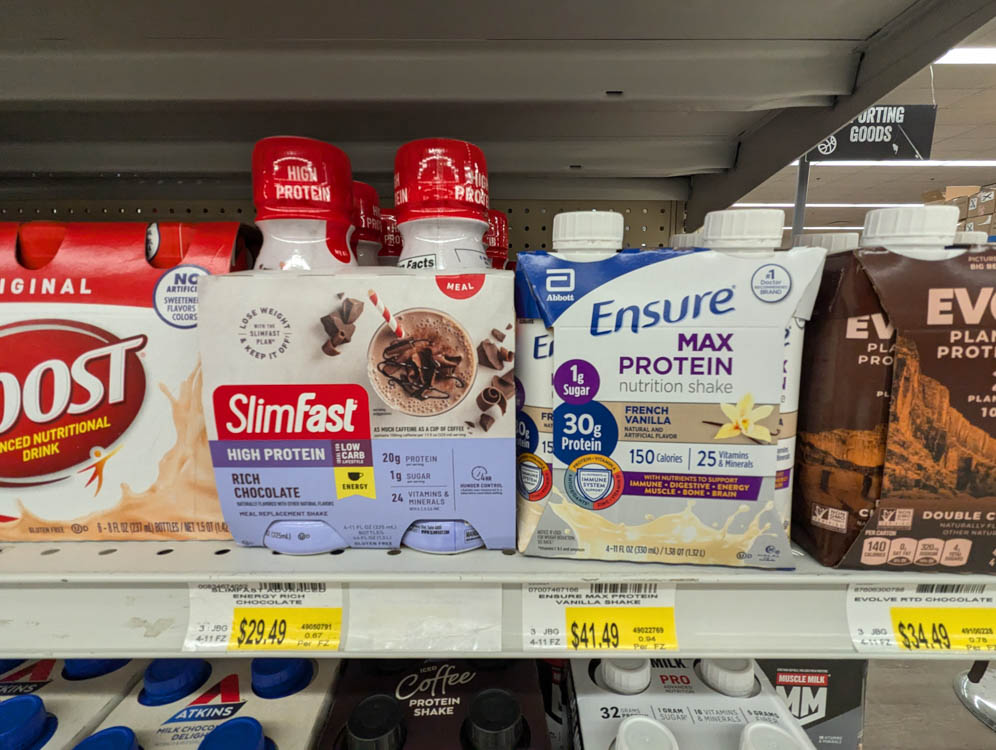
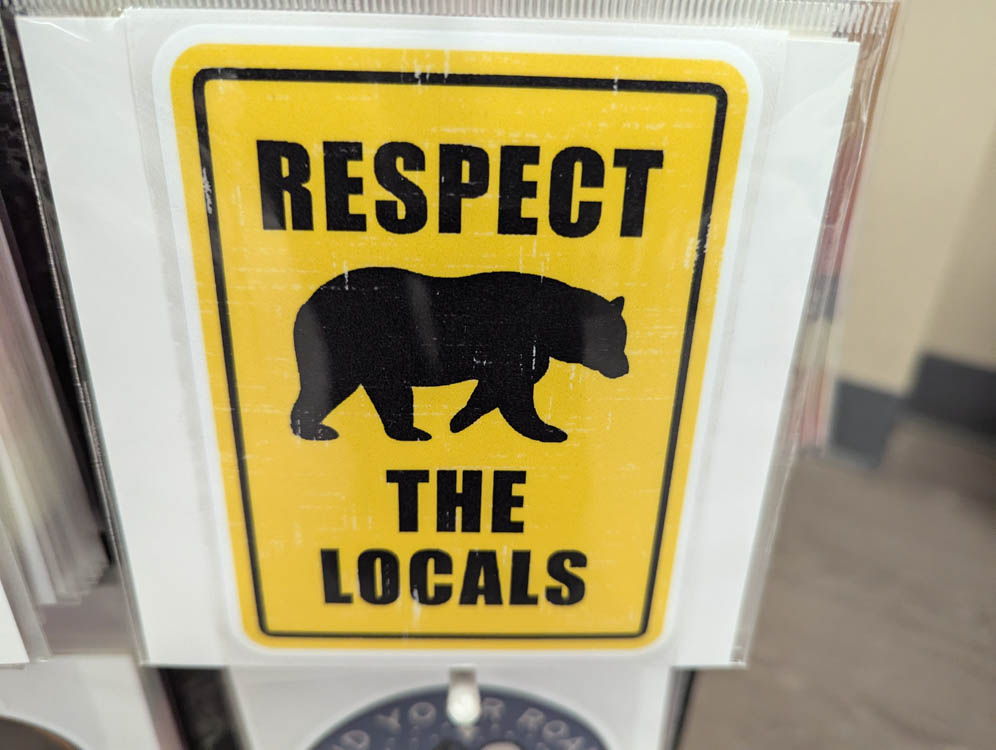
We left our remaining bowls and plastic cutlery we’d bought at the grocery store with some research students we met at the festival. They’re there for the summer and so we figured they could make use of them.
Inupiat Heritage Center
We had around 60-75 minutes to see the exhibits at the Inupiat Heritage Center to make it back to our flight in time. I’m so glad we took the time we had, even if it was a bit rushed, because learning about the process of whale hunting was fascinating. Here are just a few of the amazing things we saw and learned while there. You have to go for yourself to see it all.
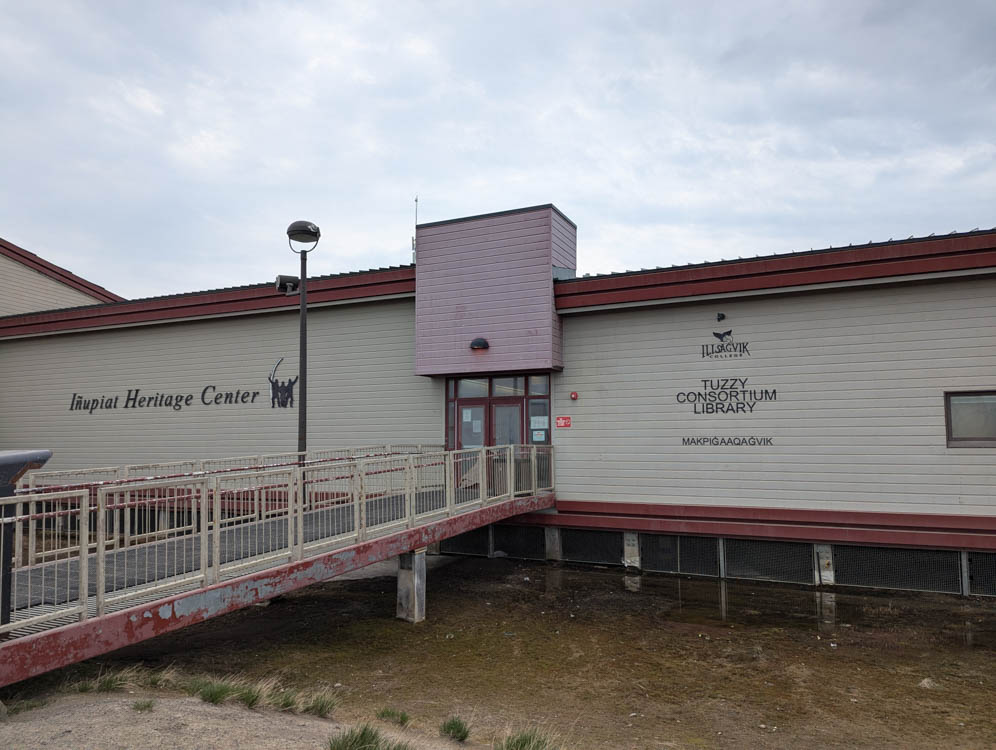

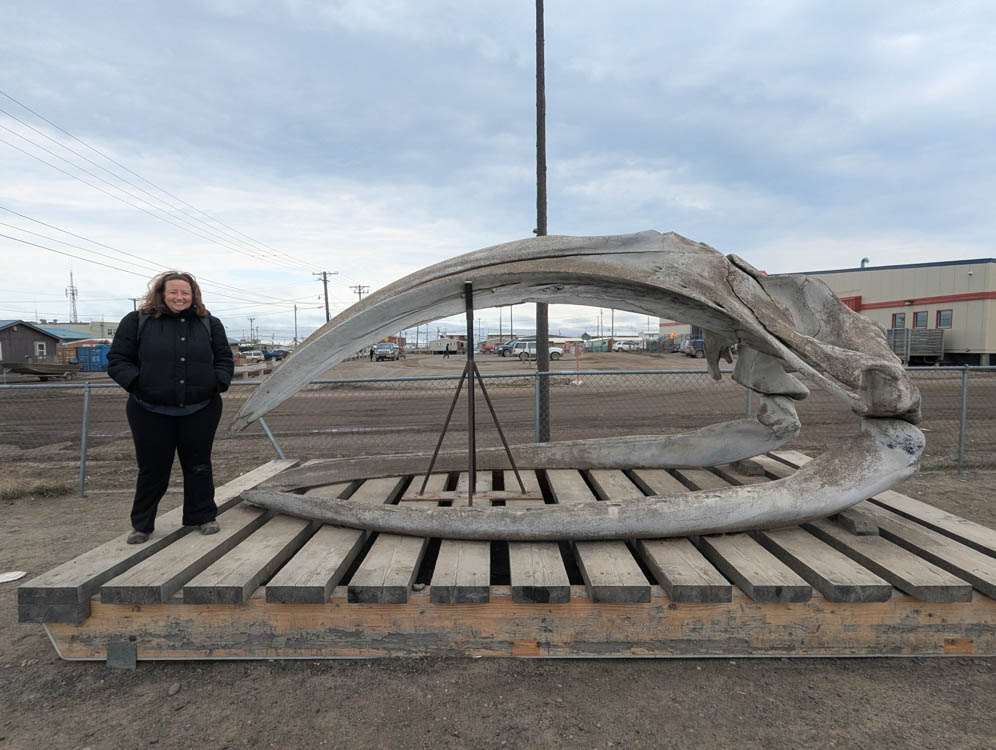
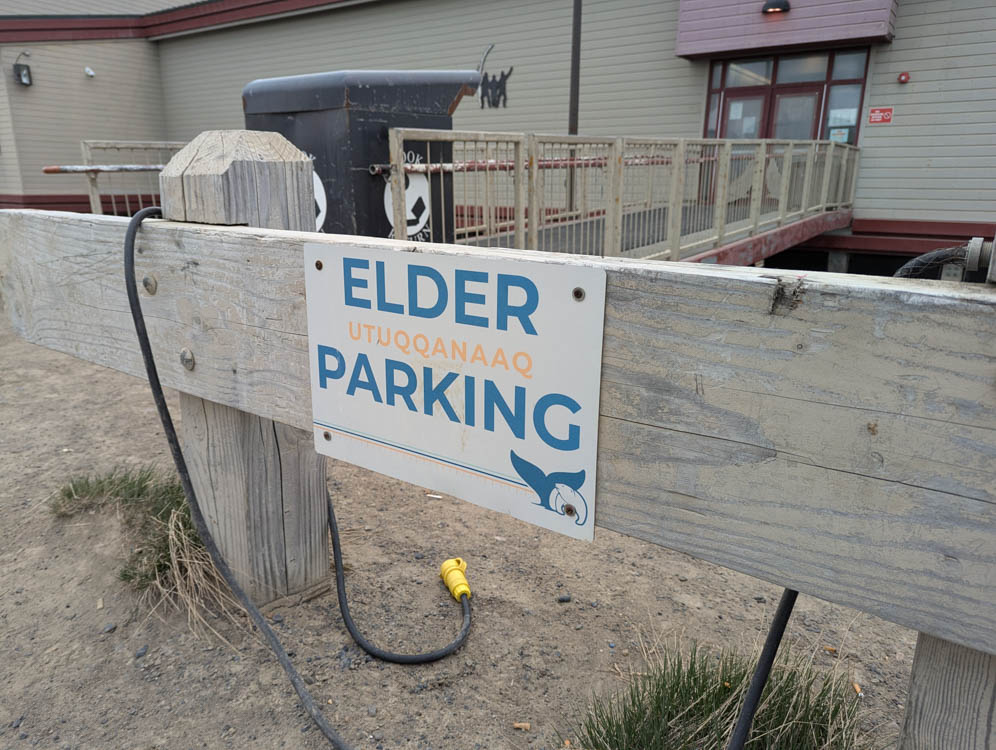
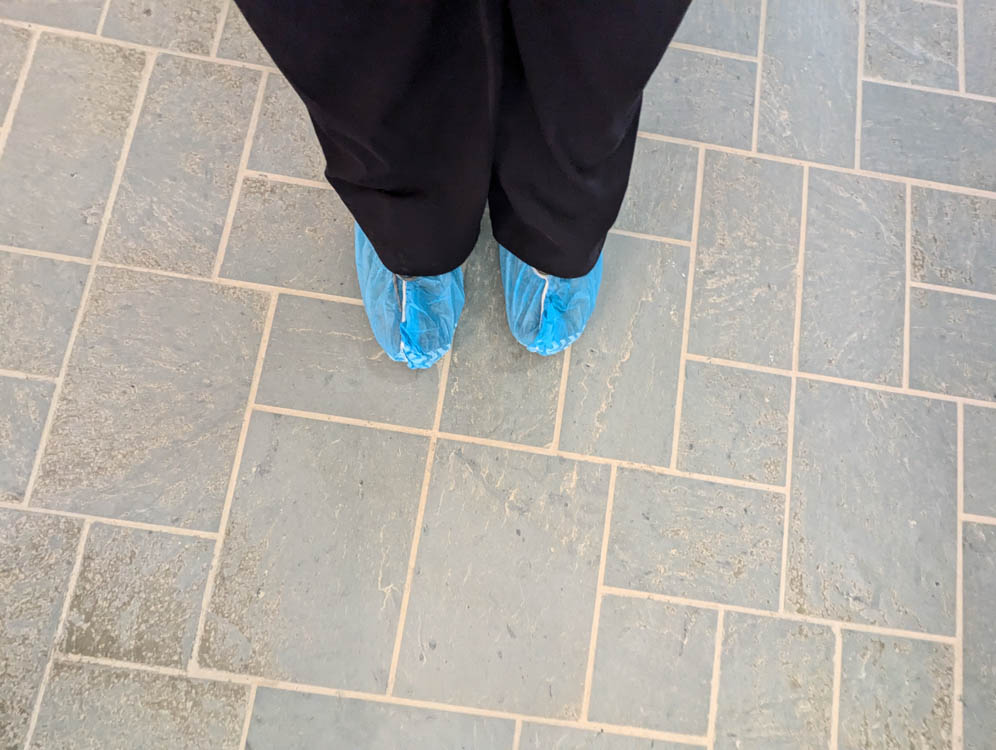
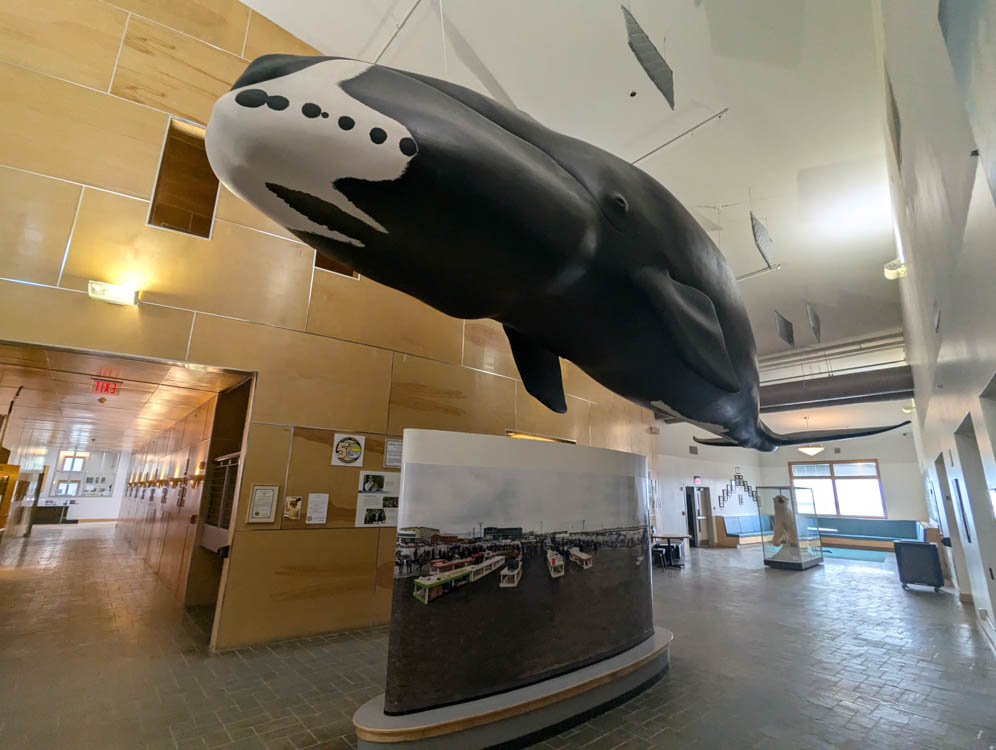
They have a lot of art on display from local artisans and other Native Alaskan craftsmen.

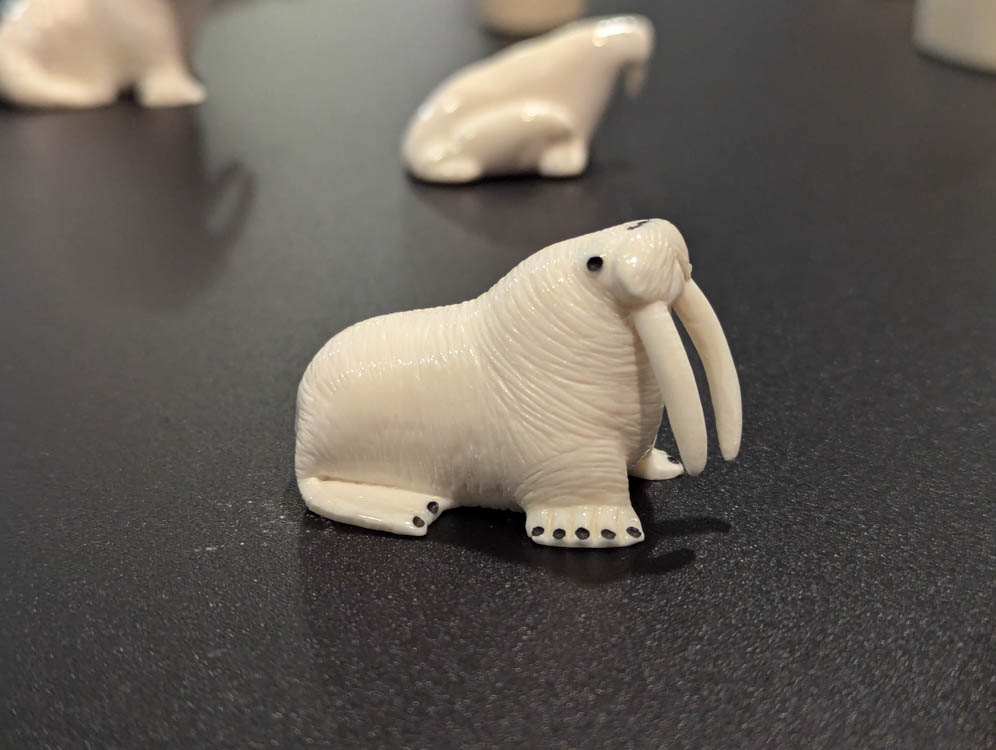

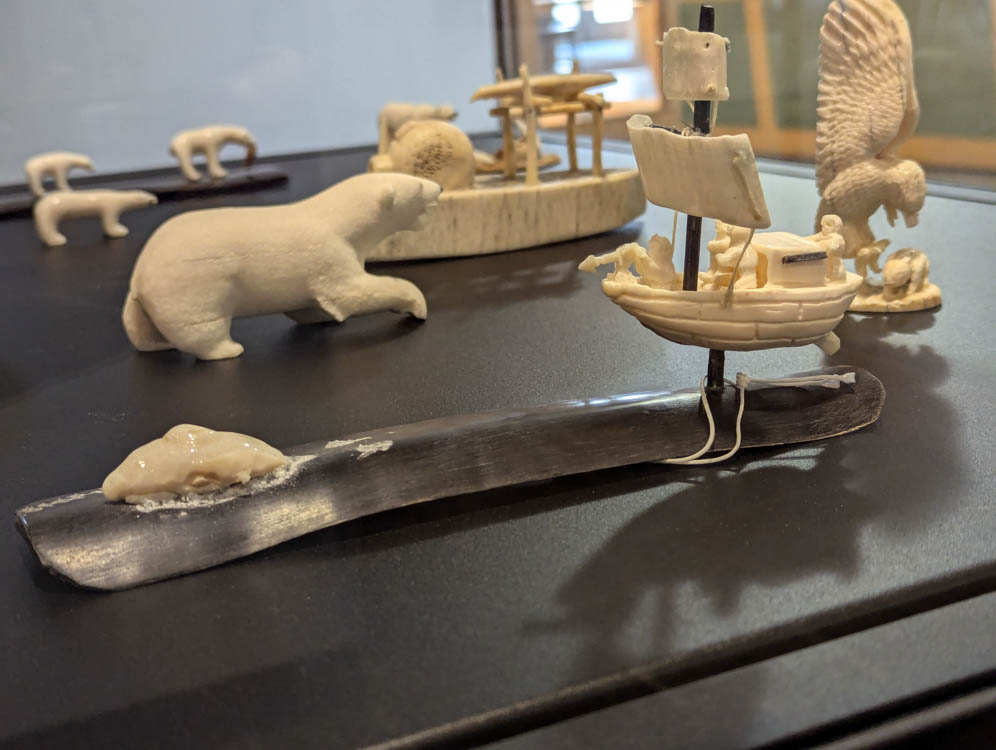

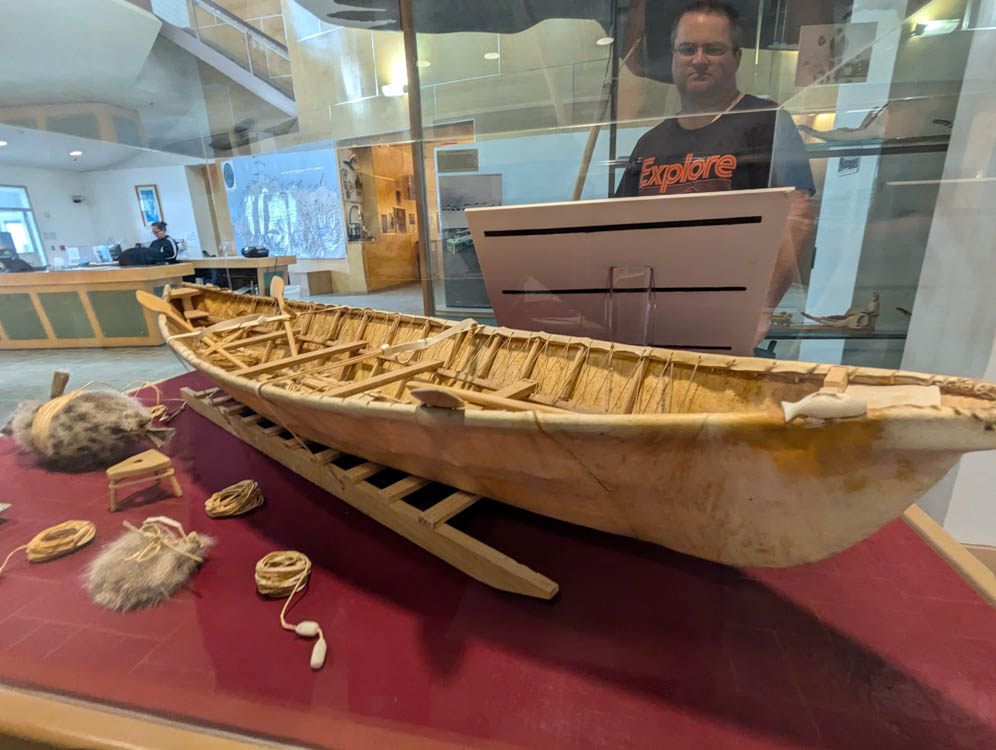
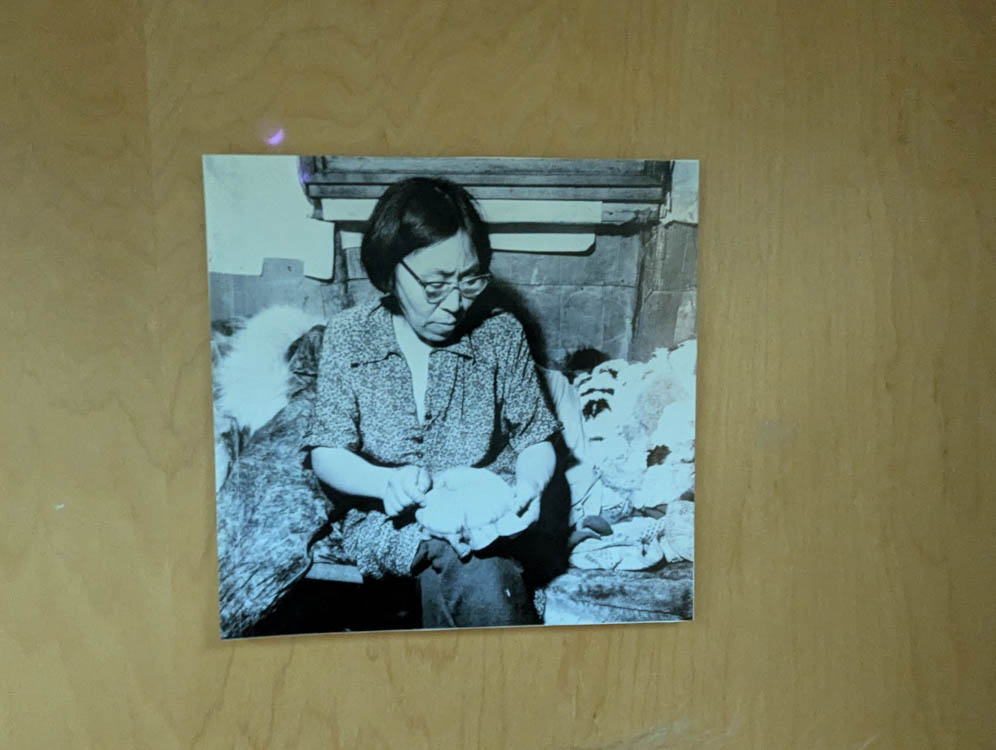
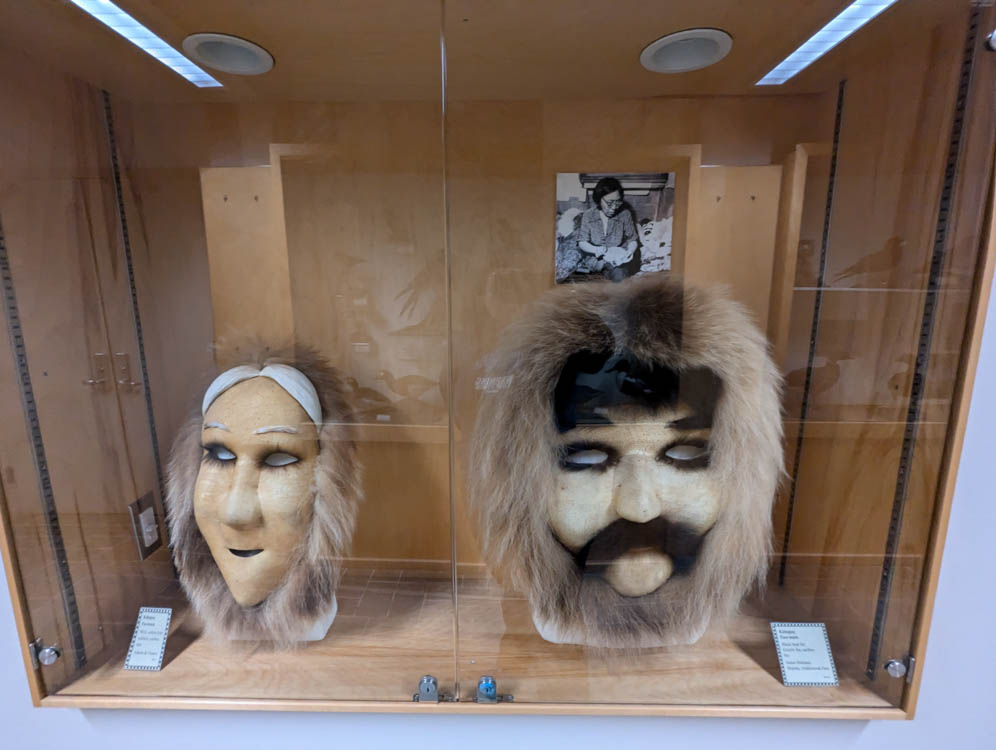
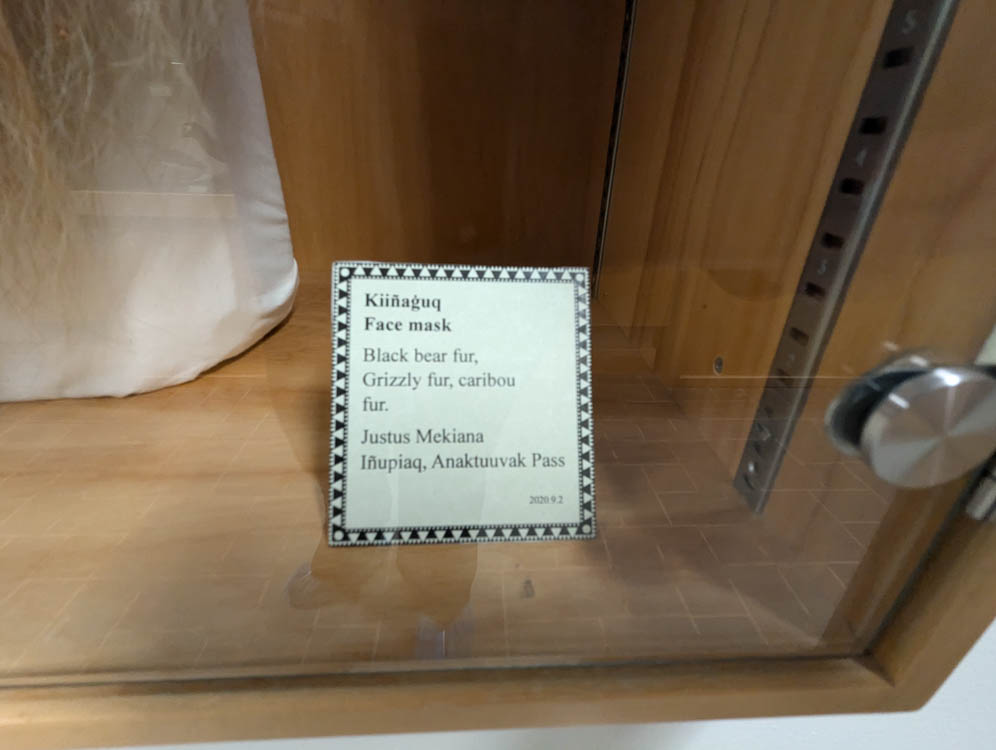
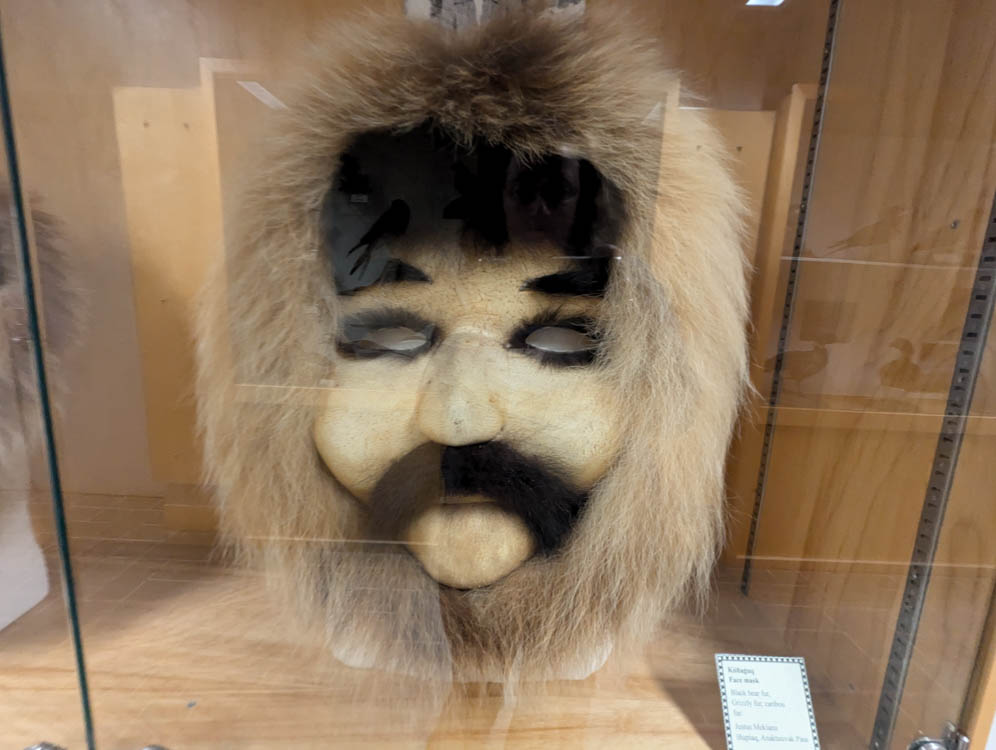
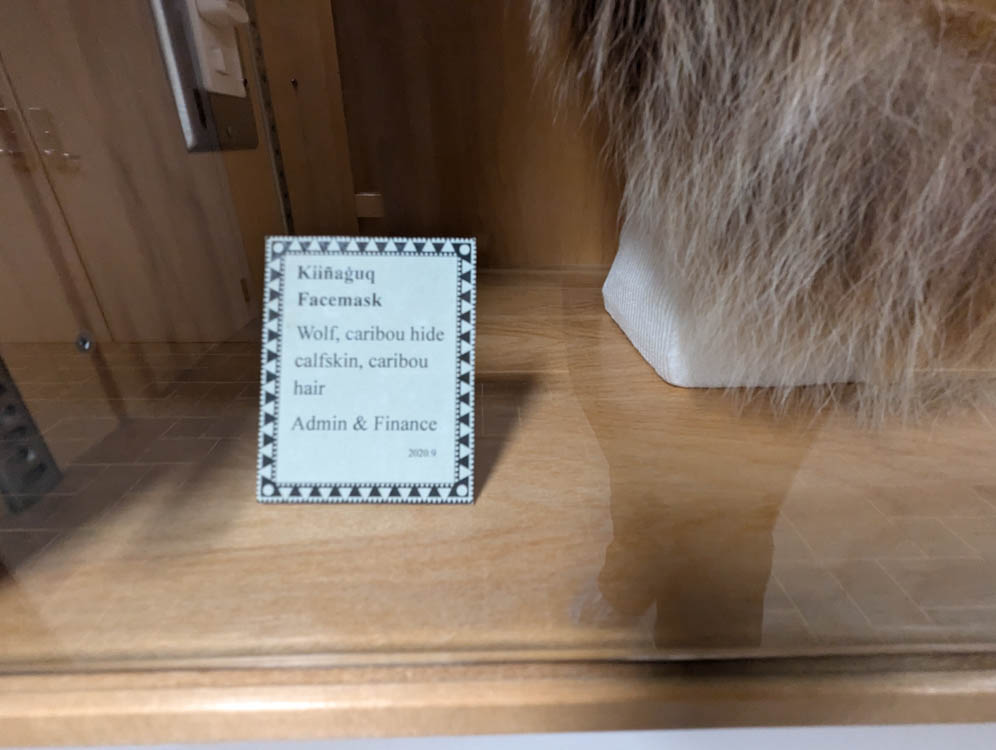
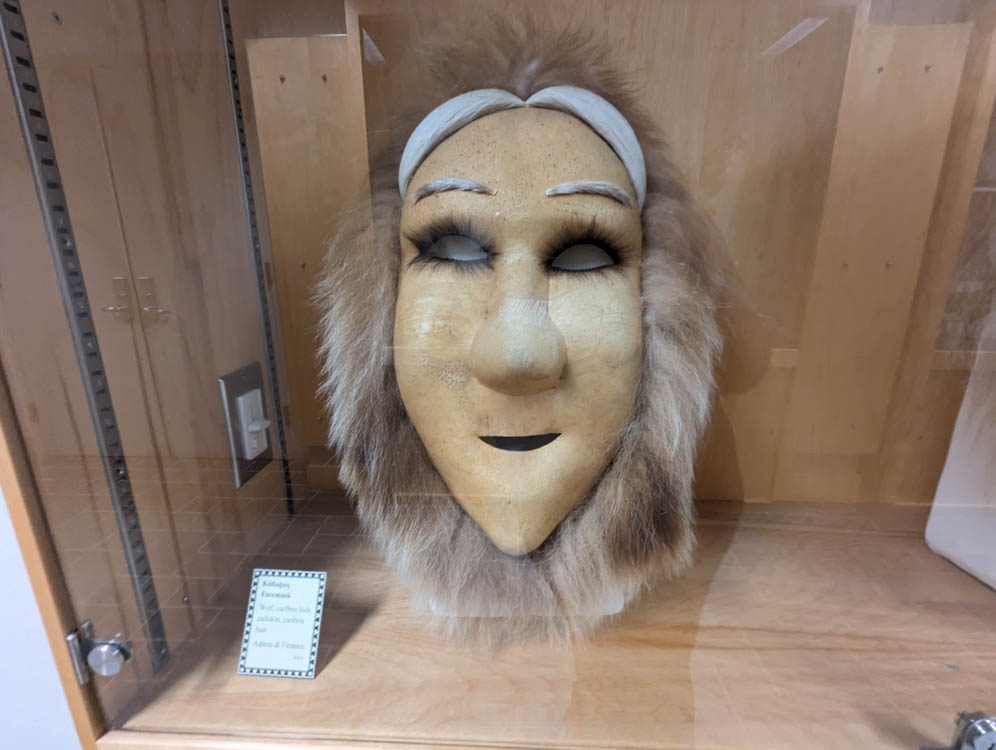
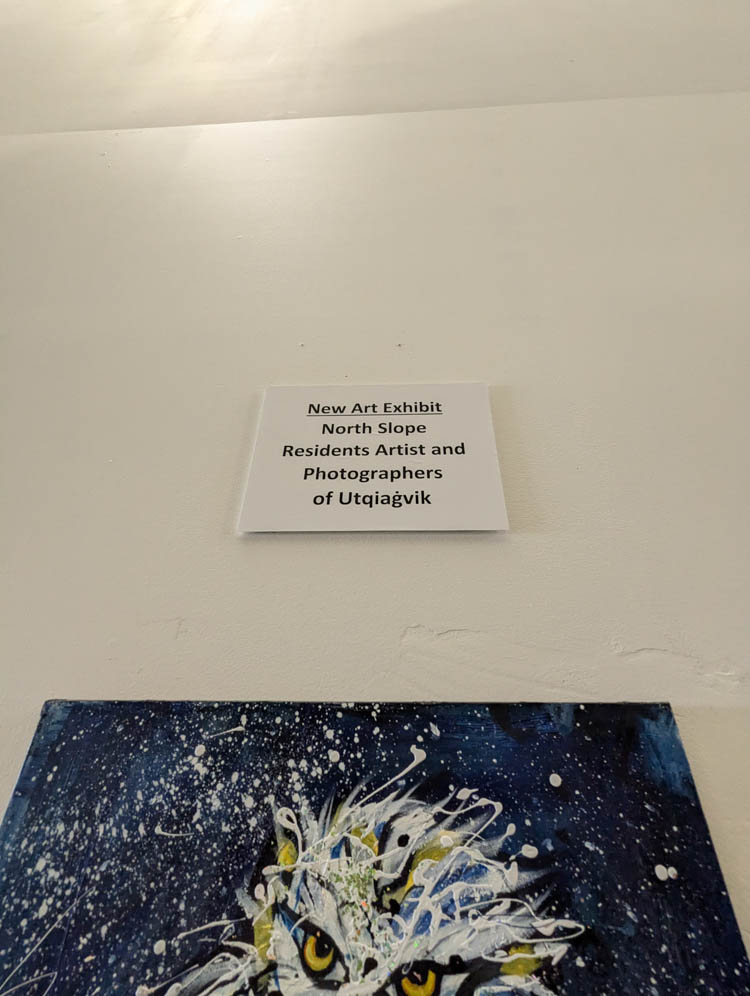
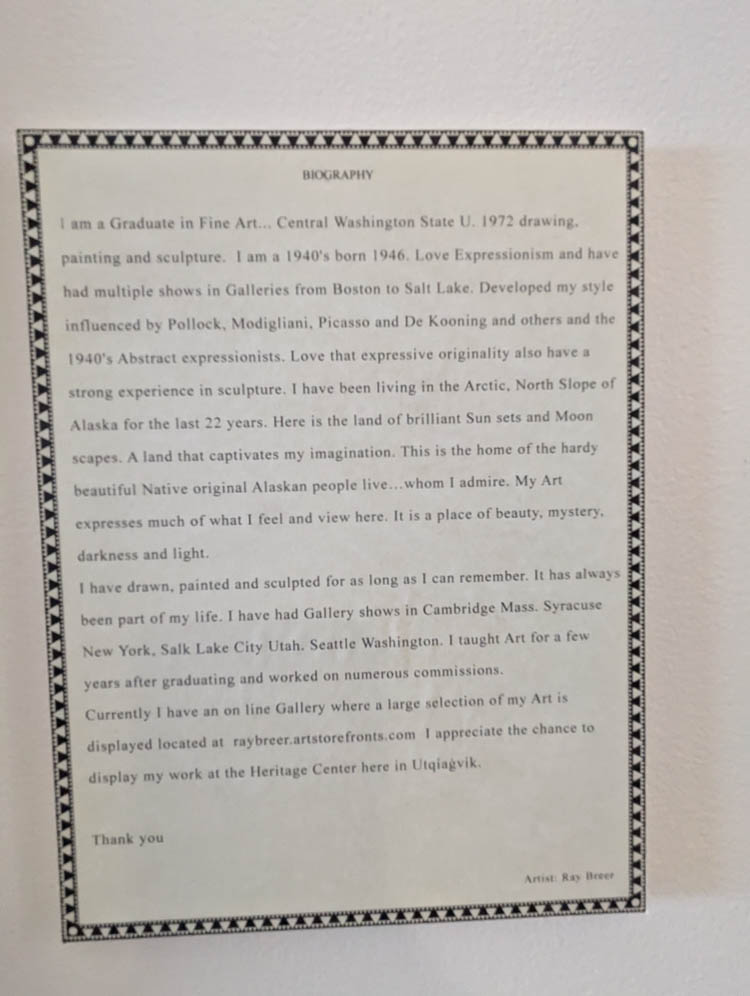
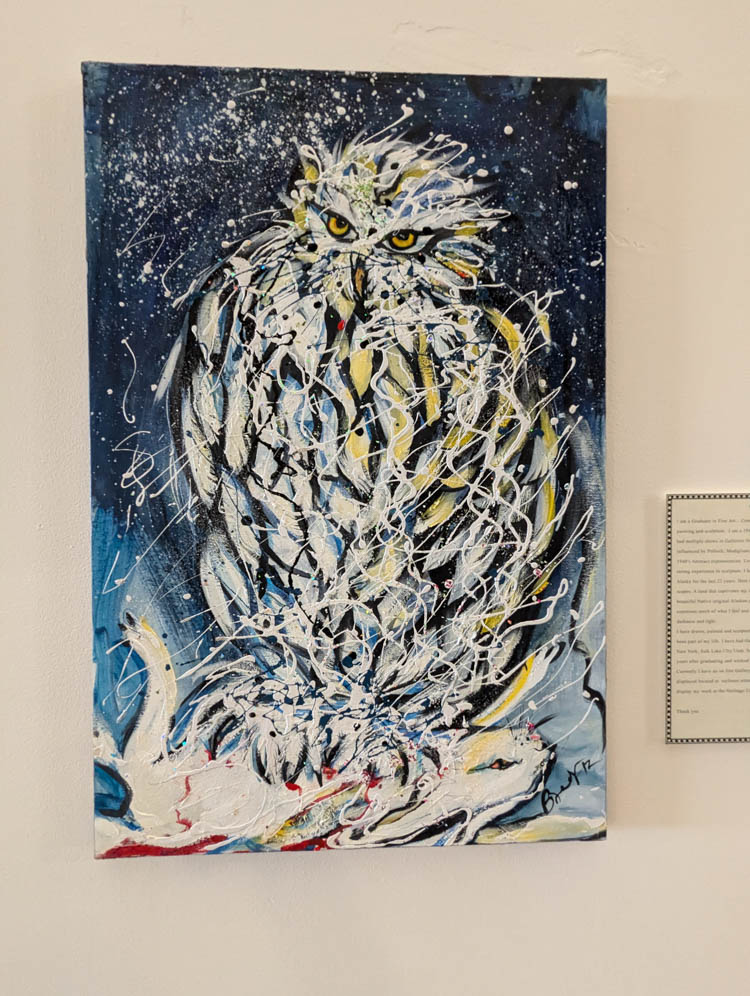
There is a full exhibit about the history of whaling in Utqiagvik that was captivating.
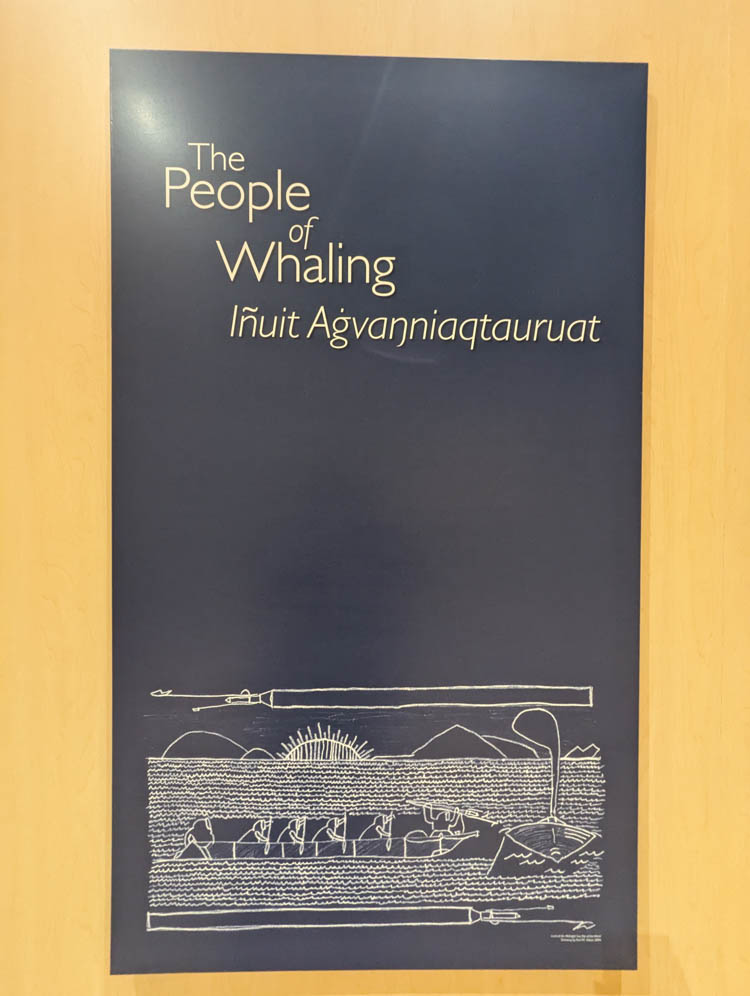

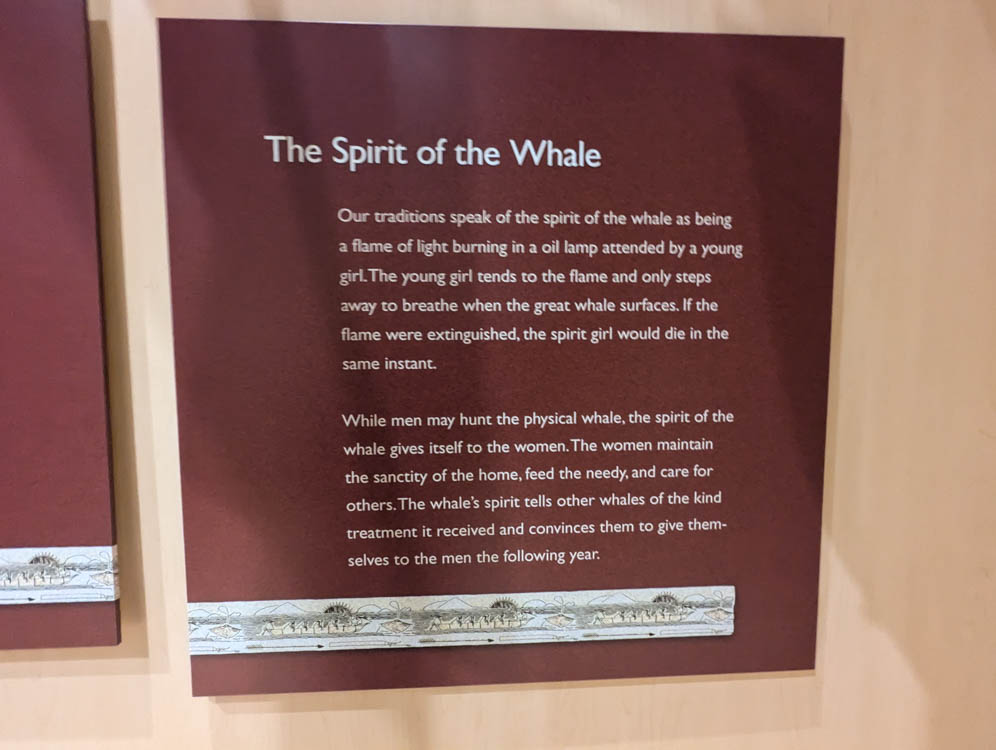
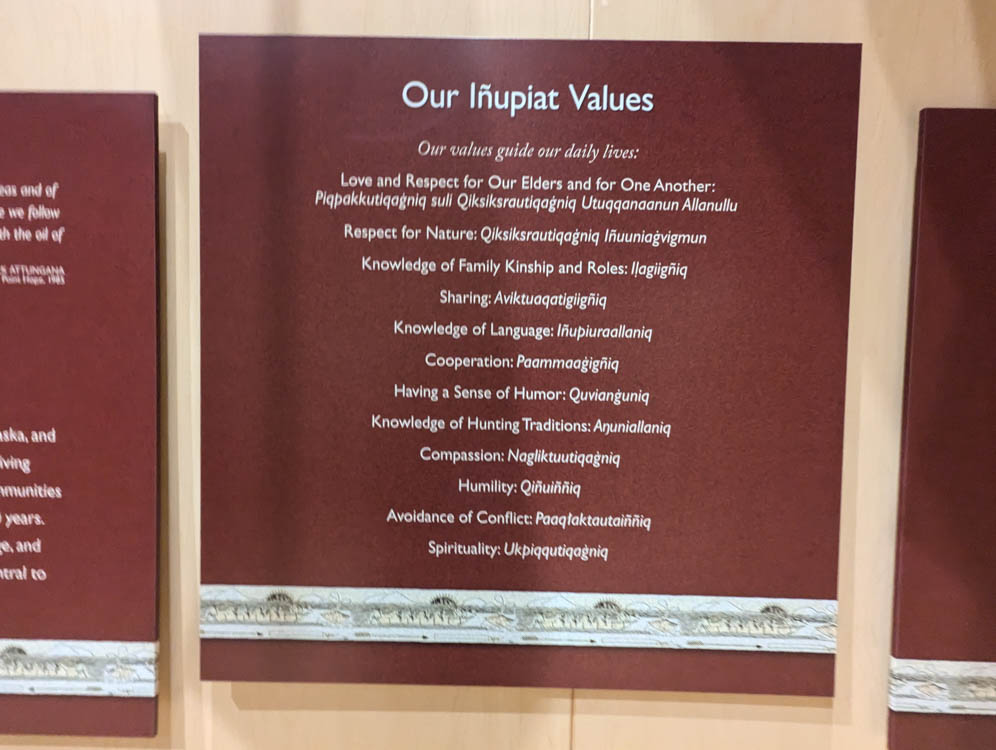
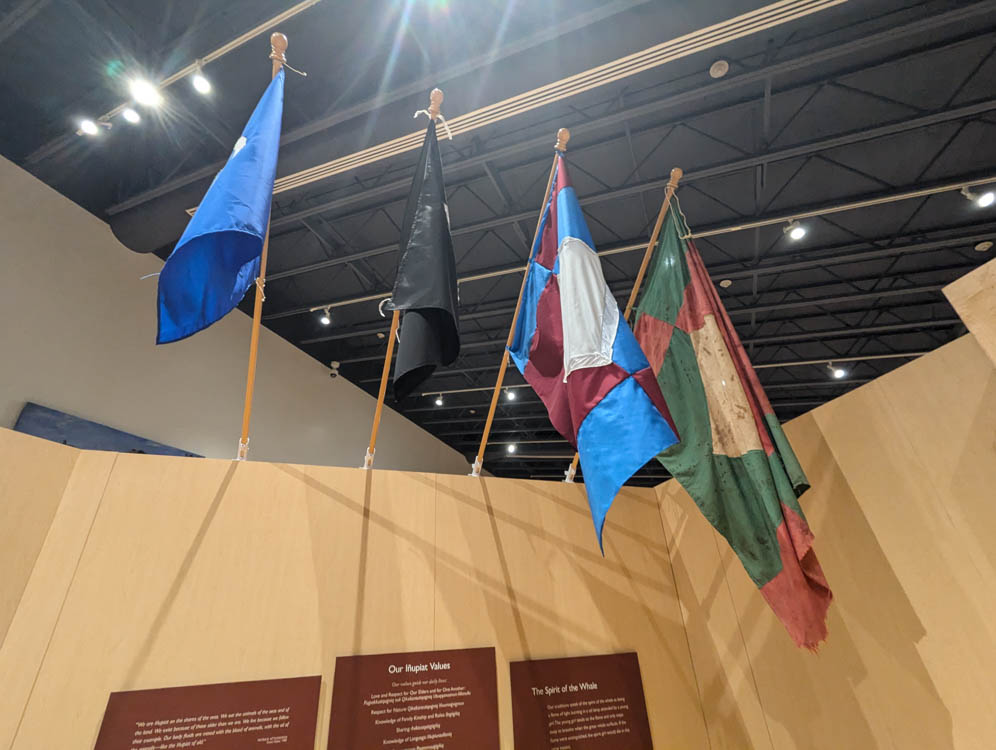

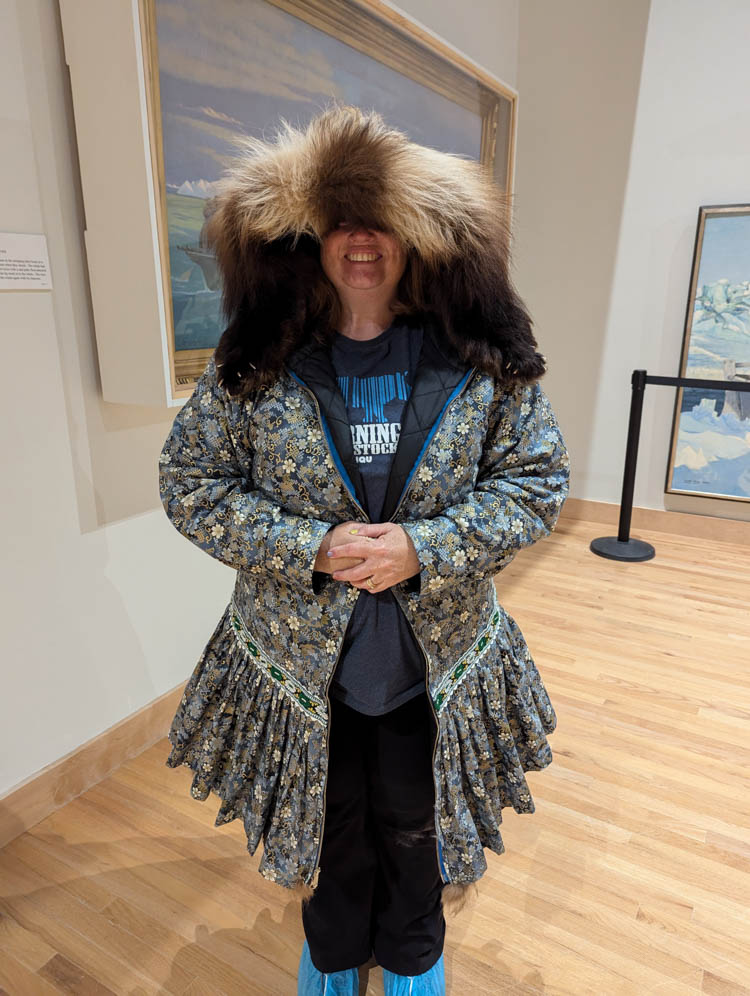
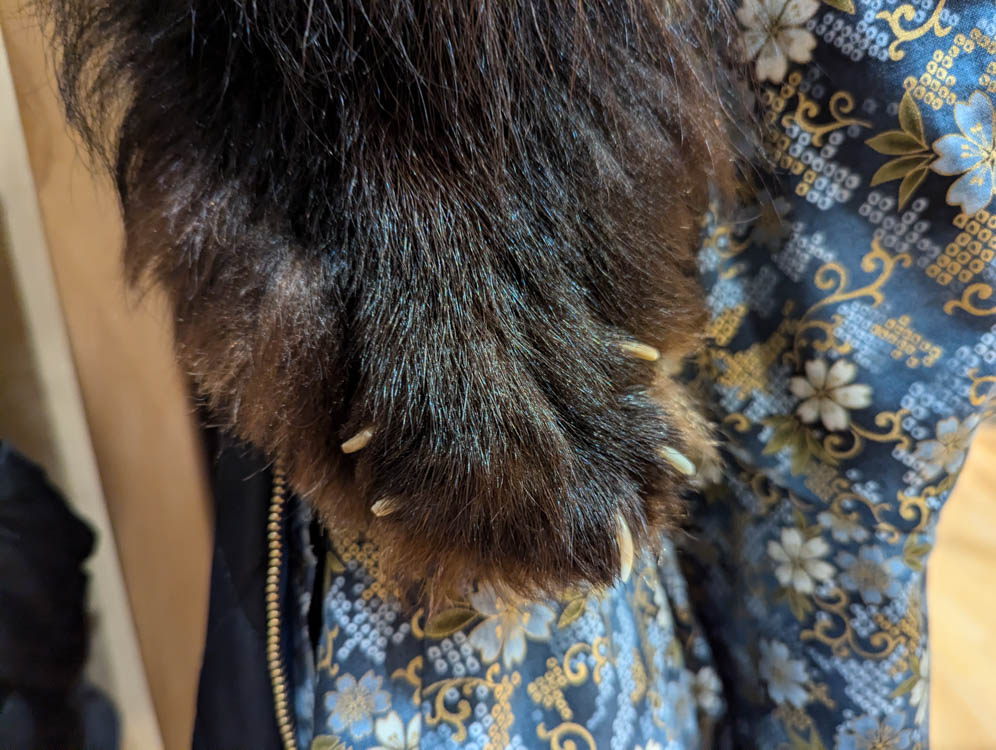
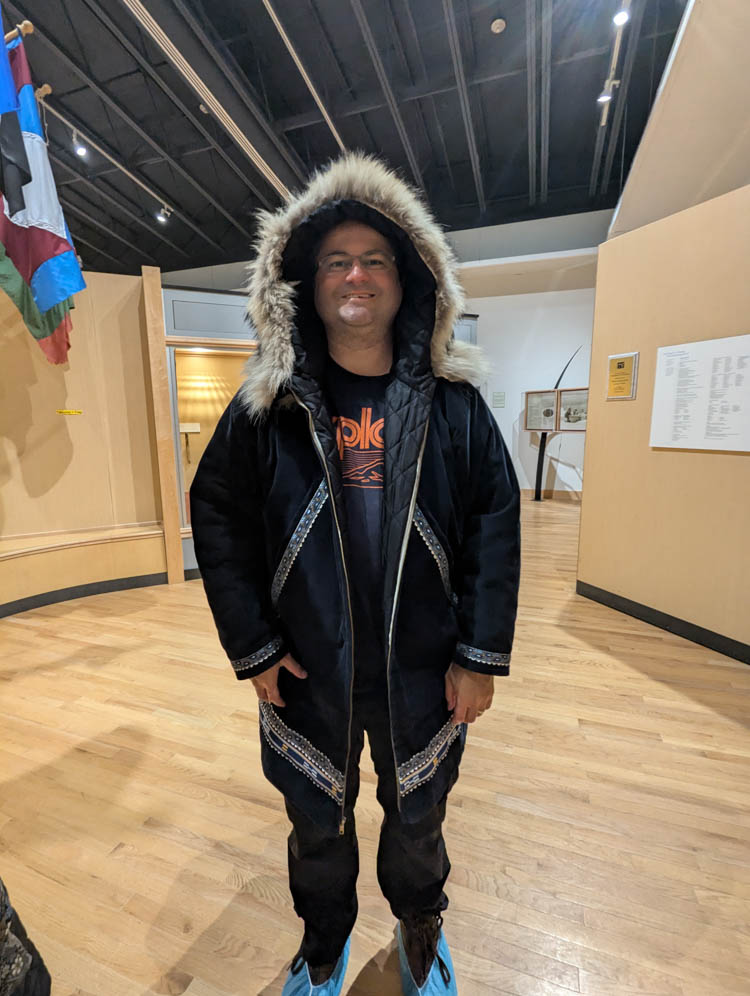
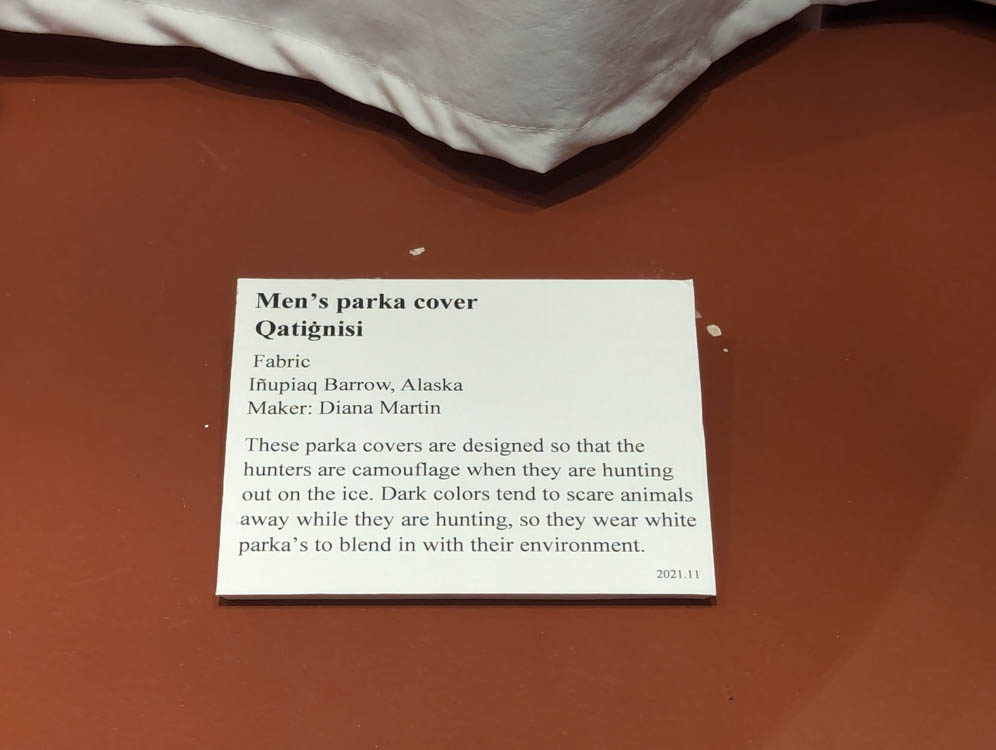
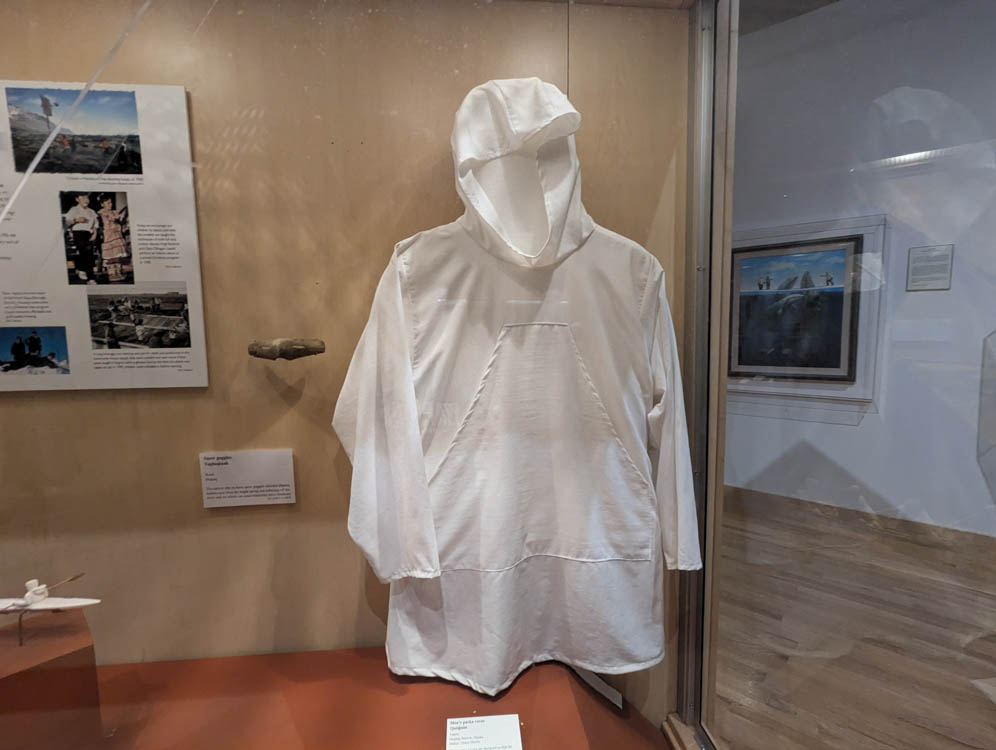
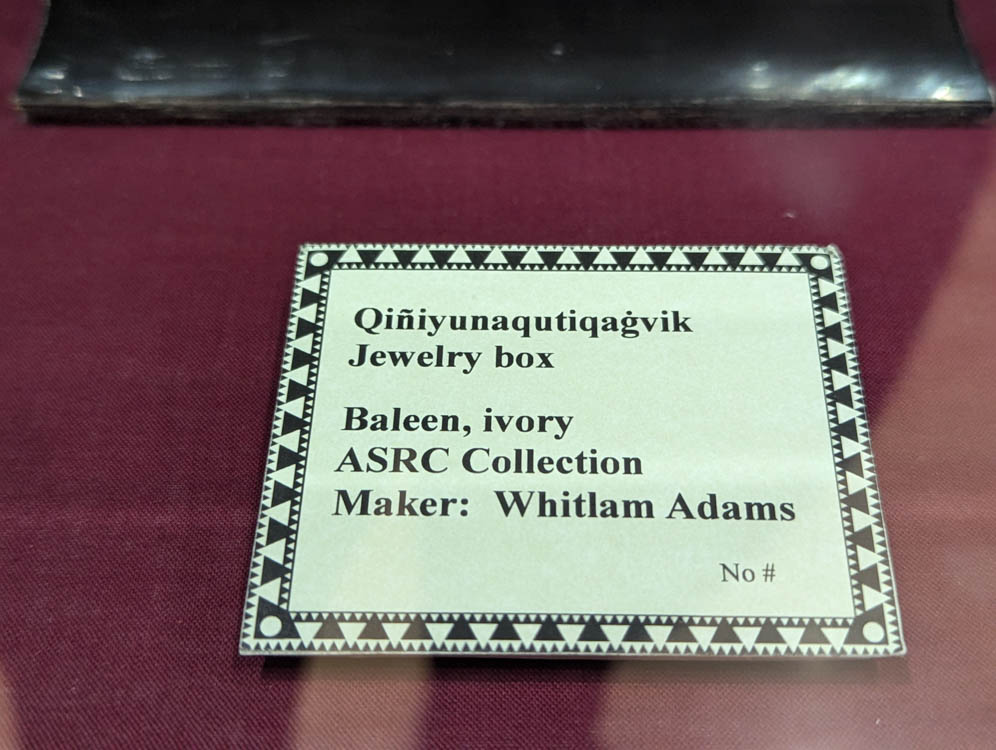
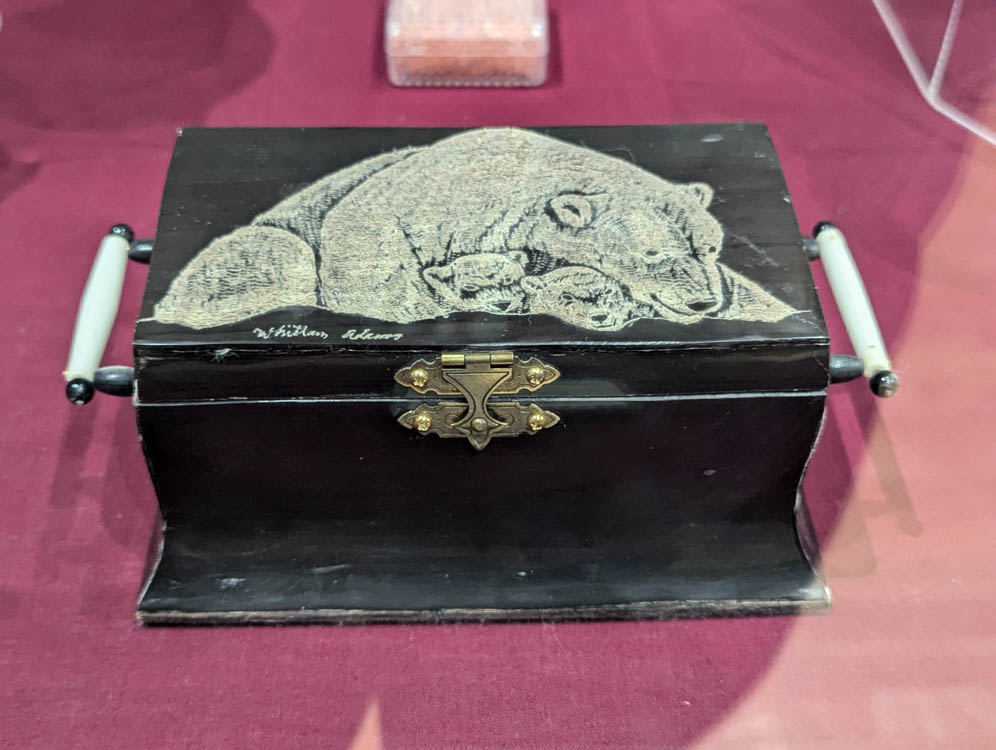
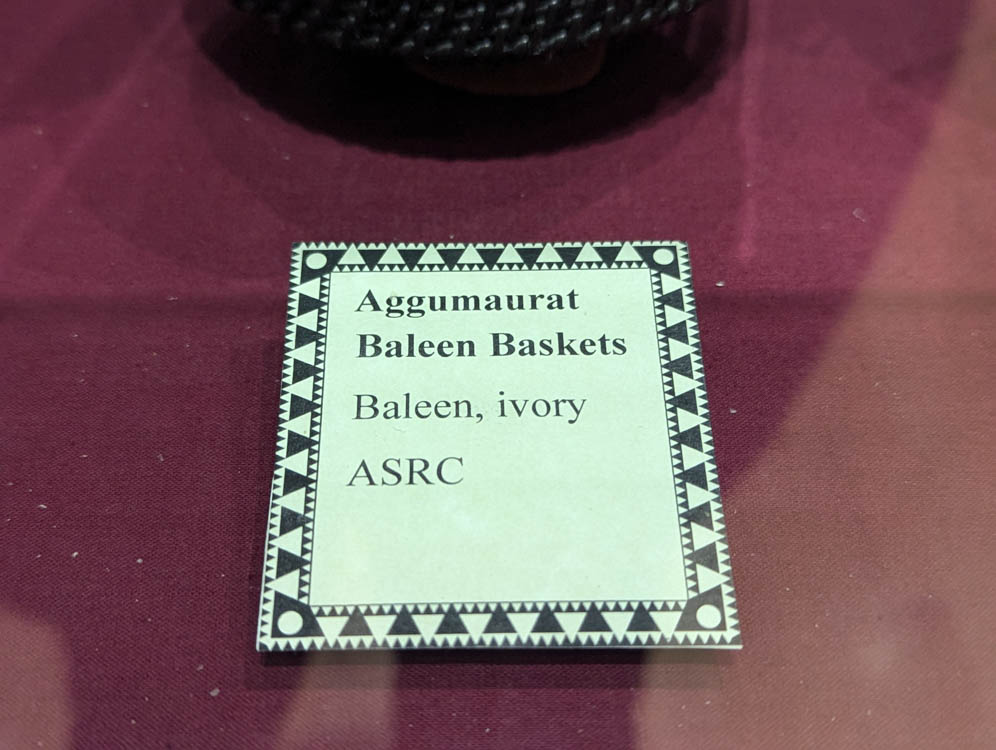
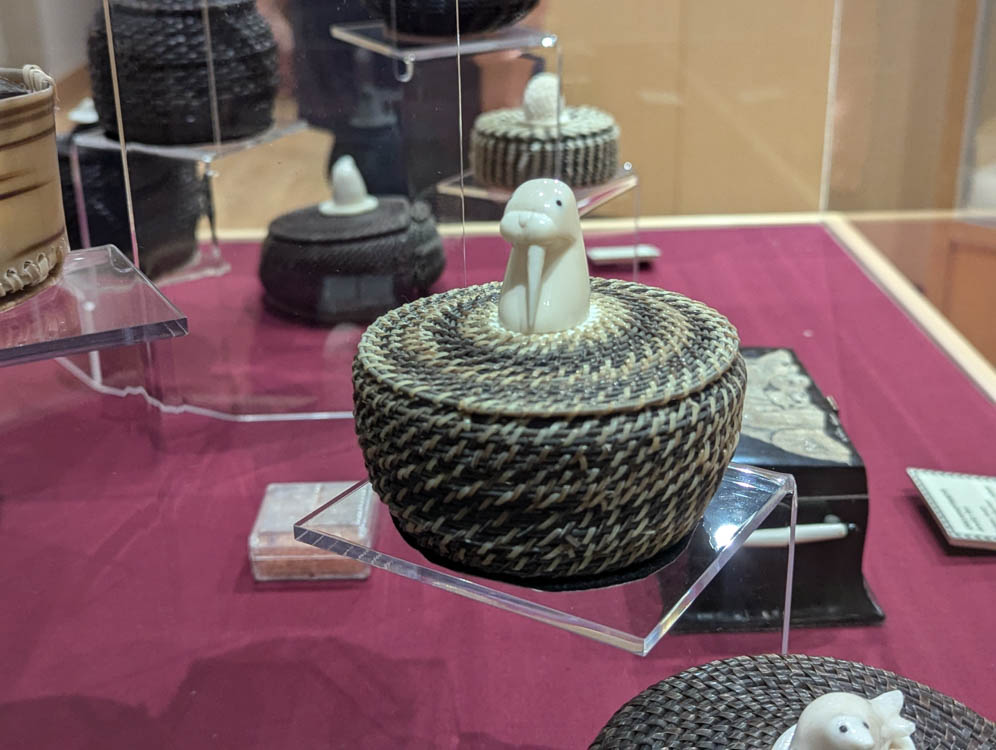

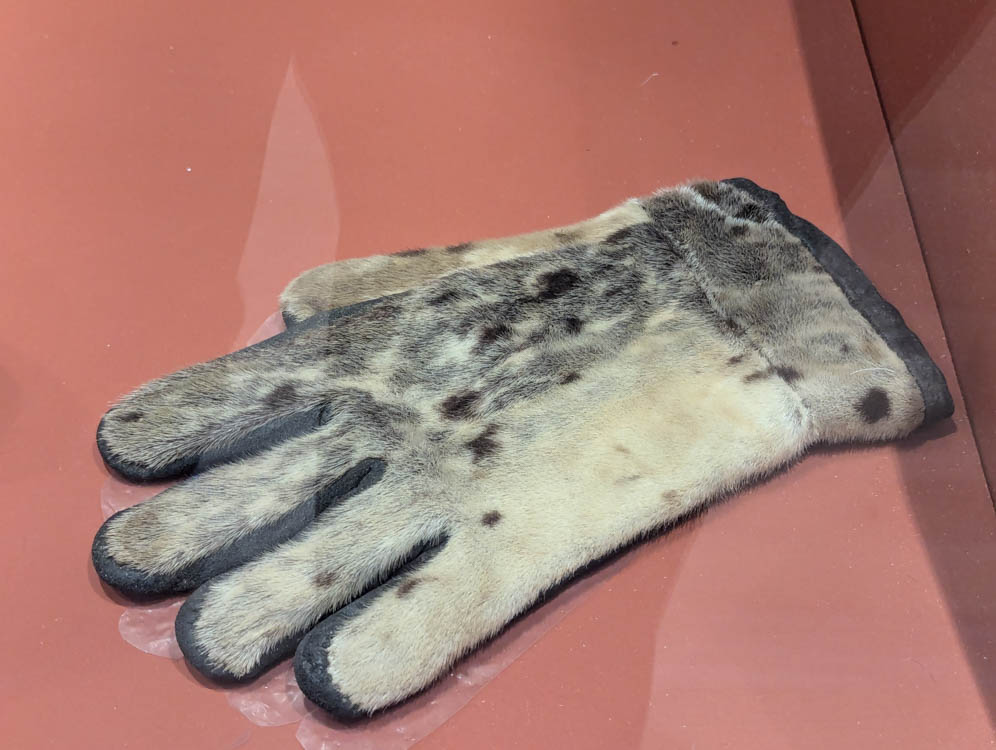
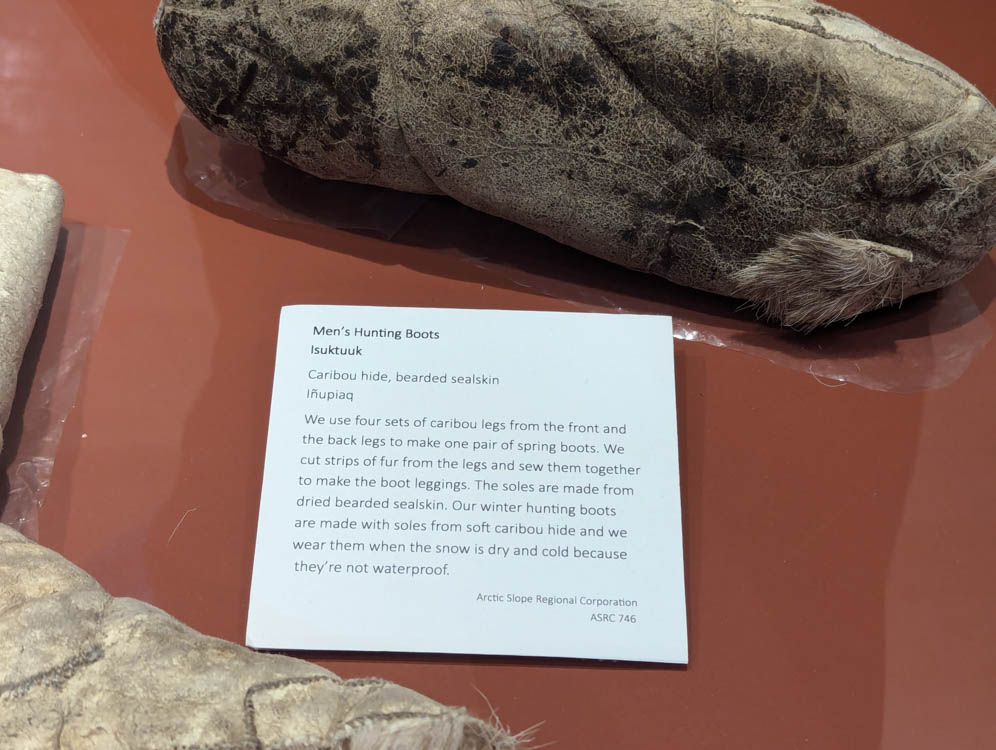
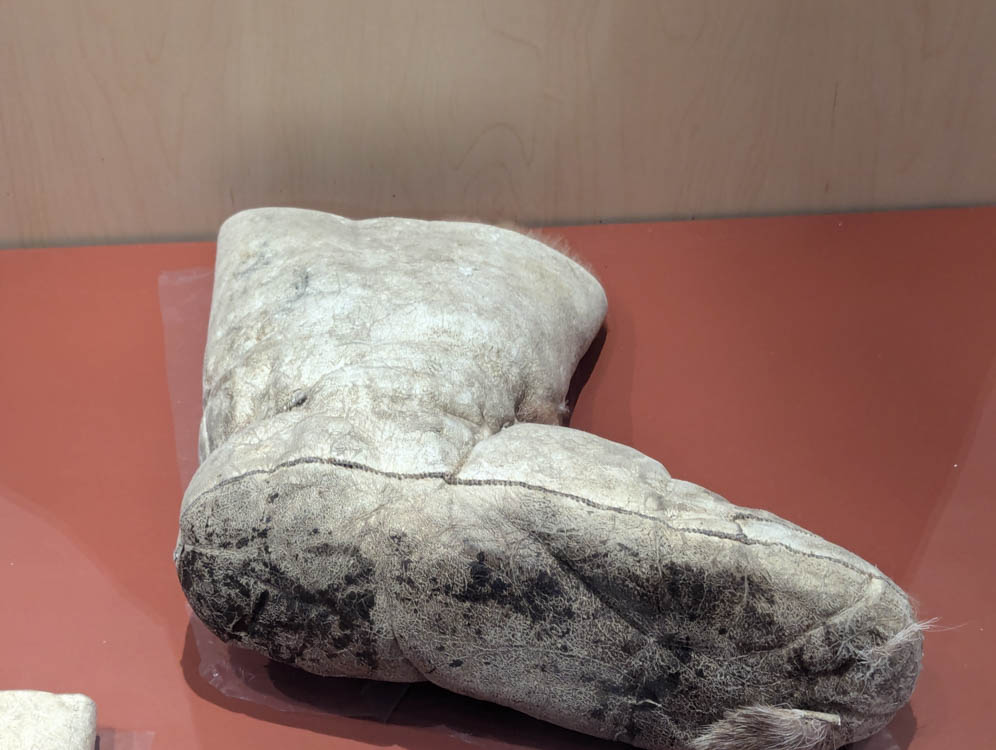
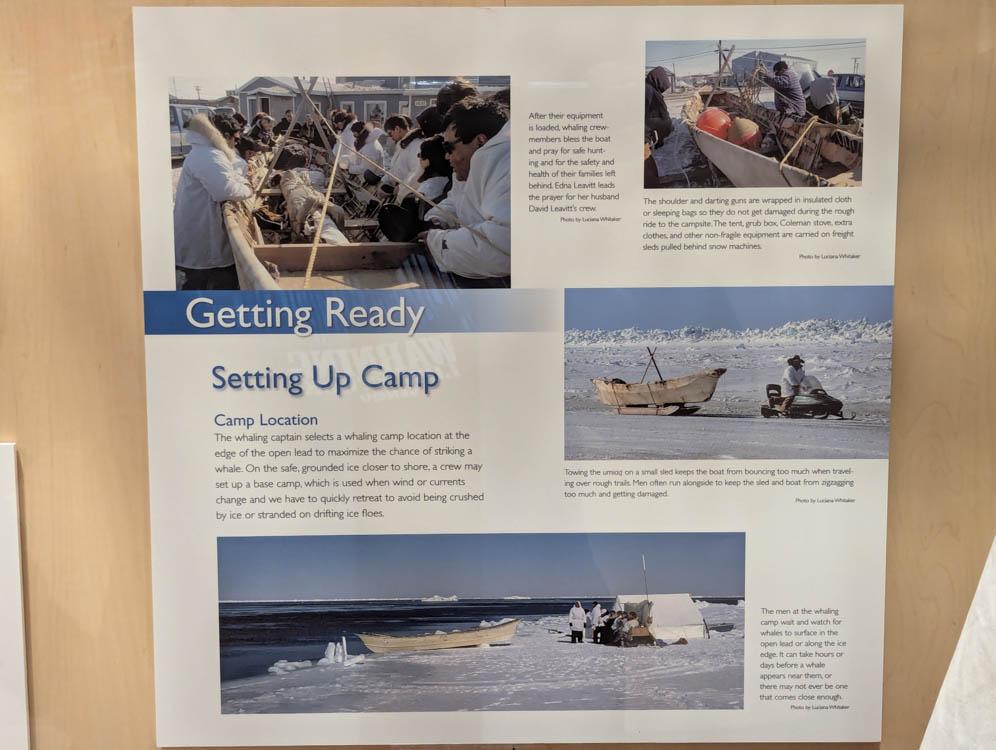
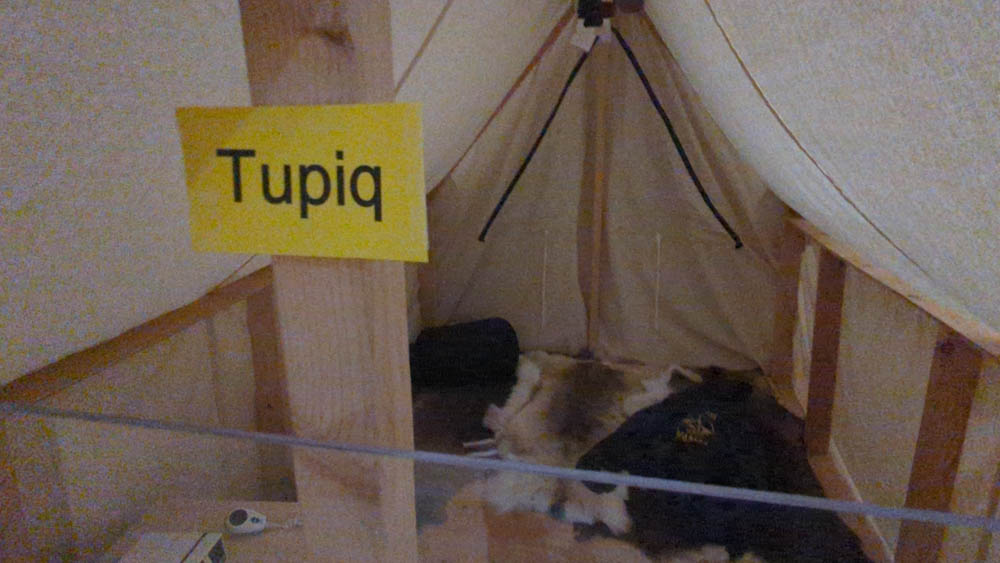
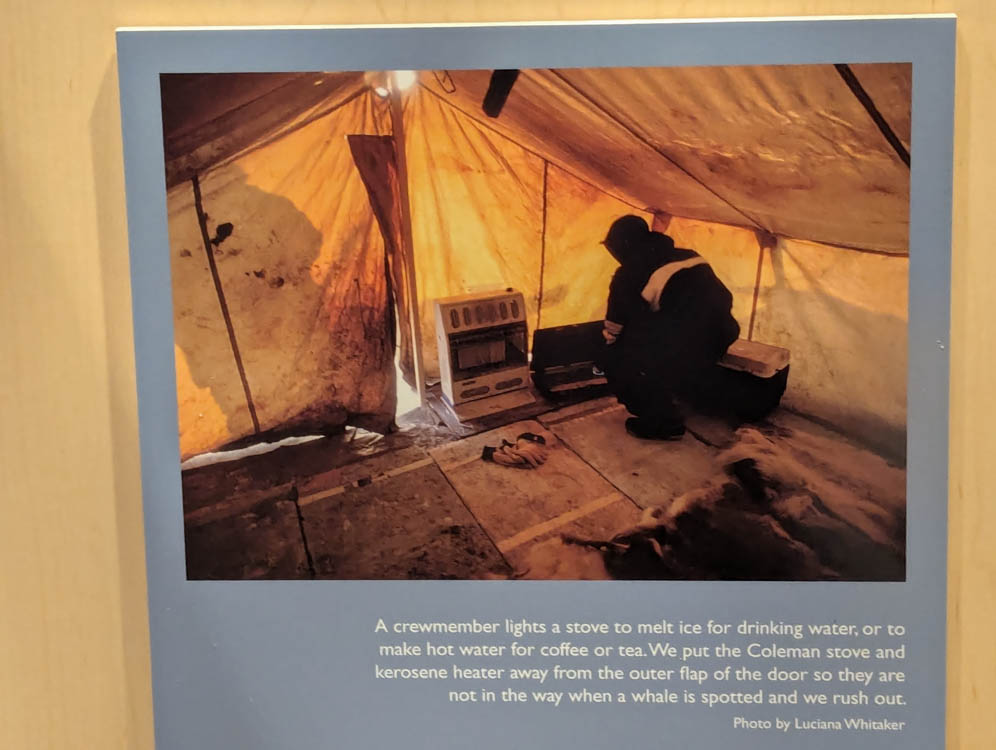
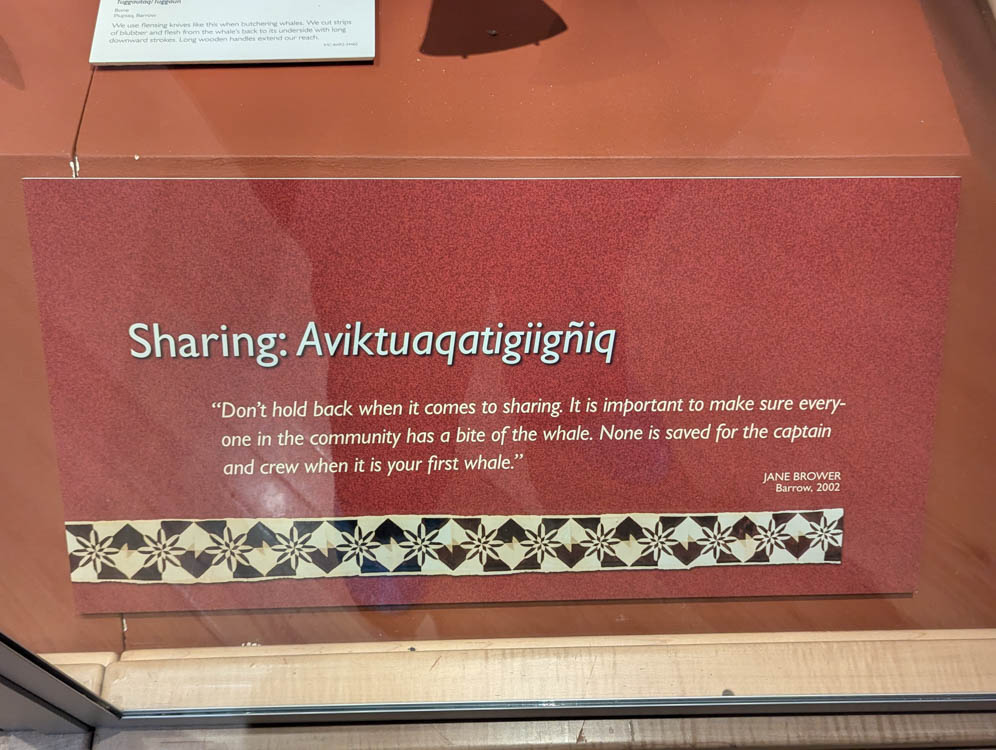


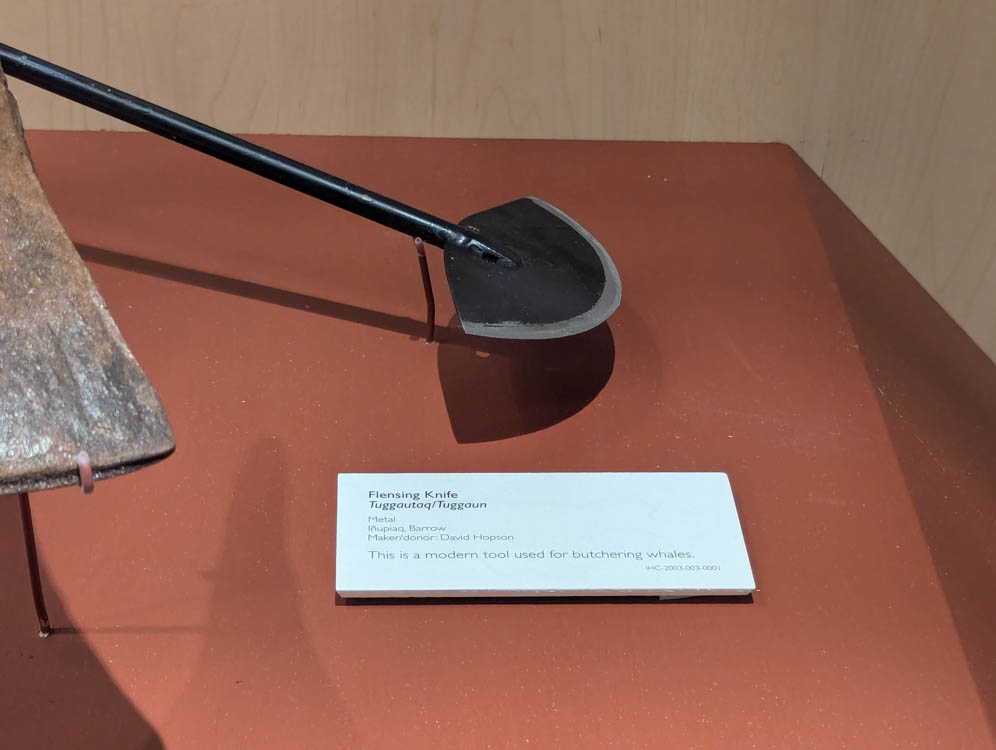
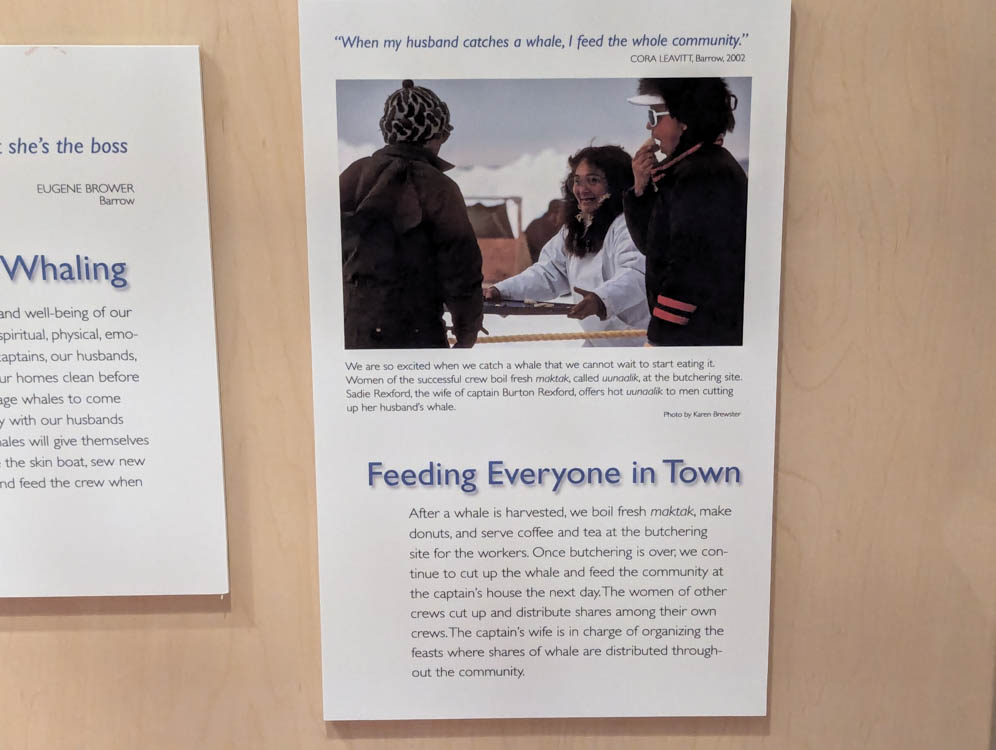
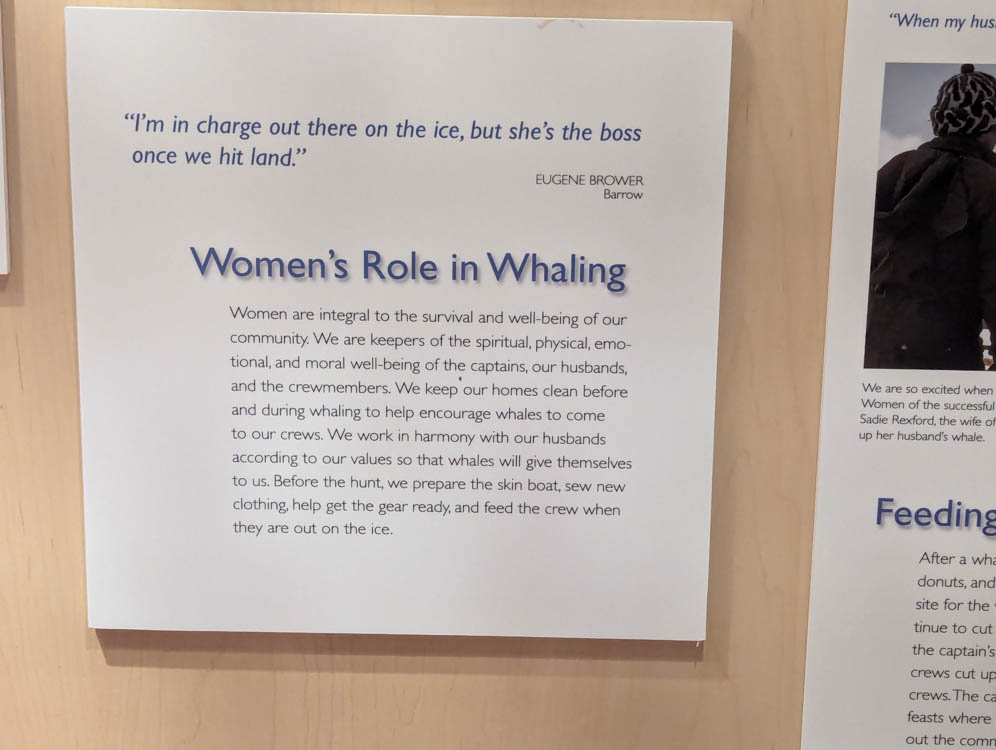
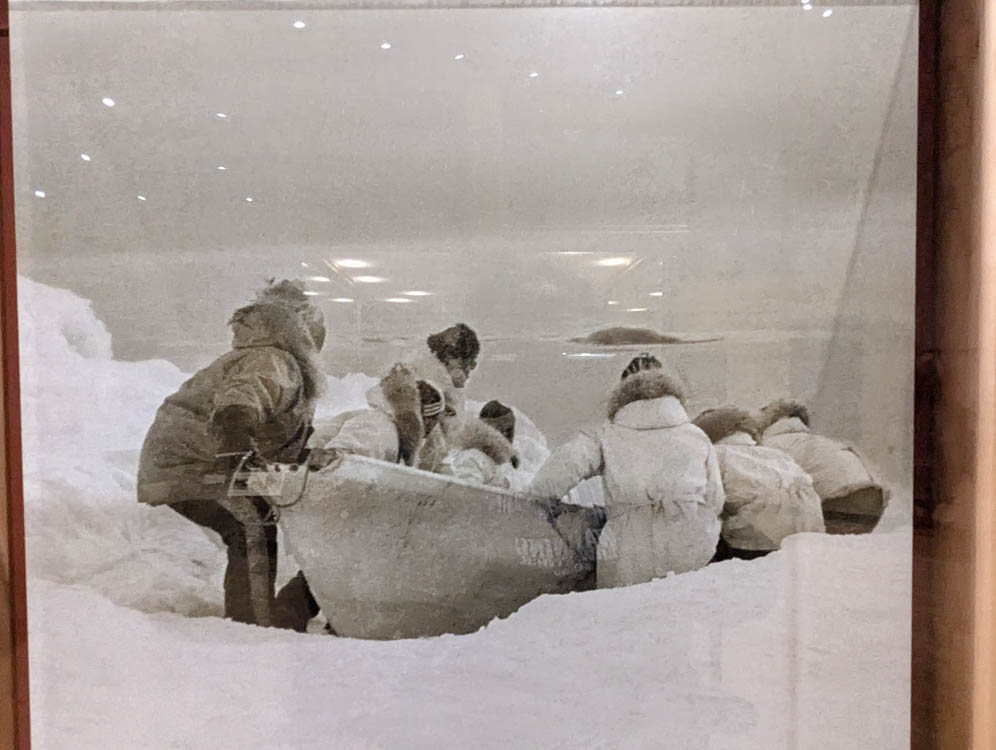
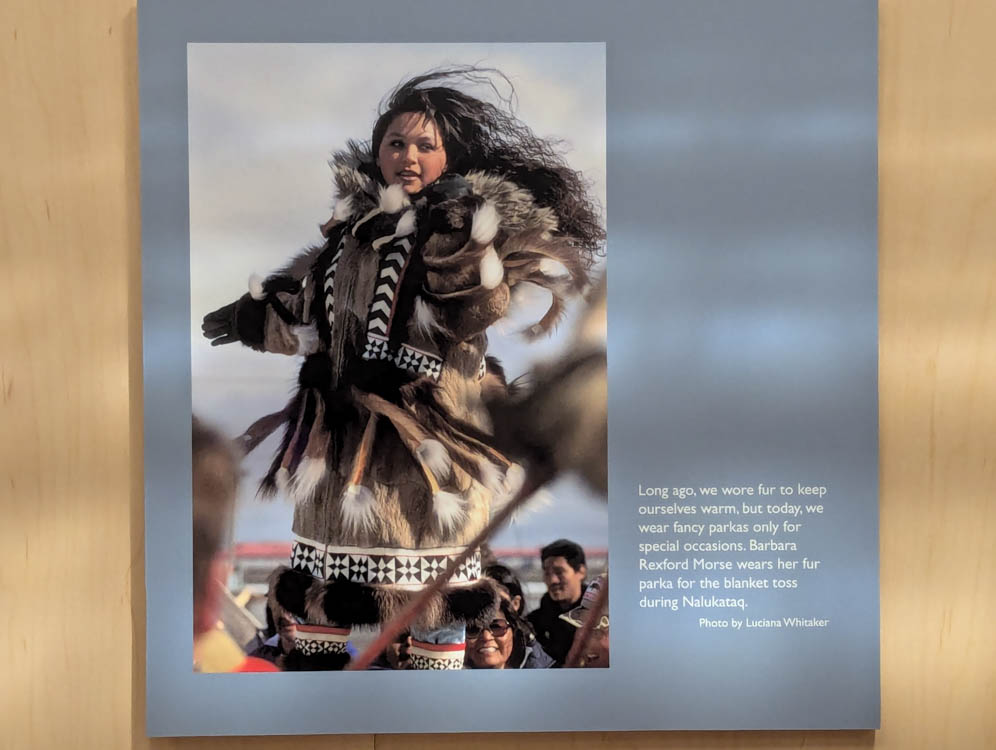
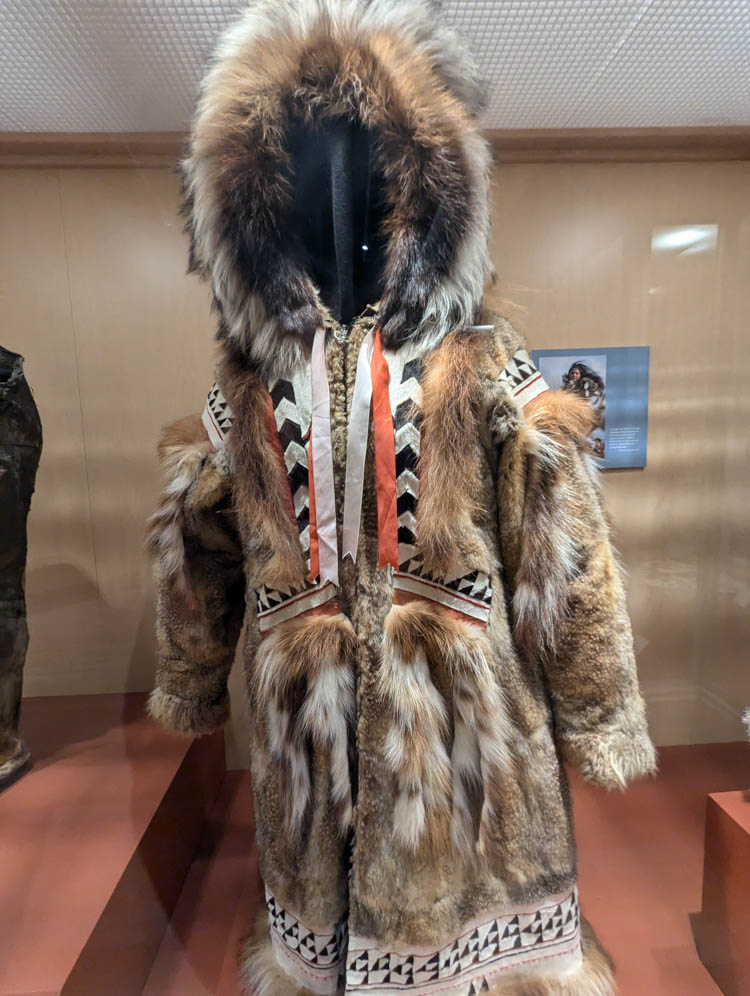

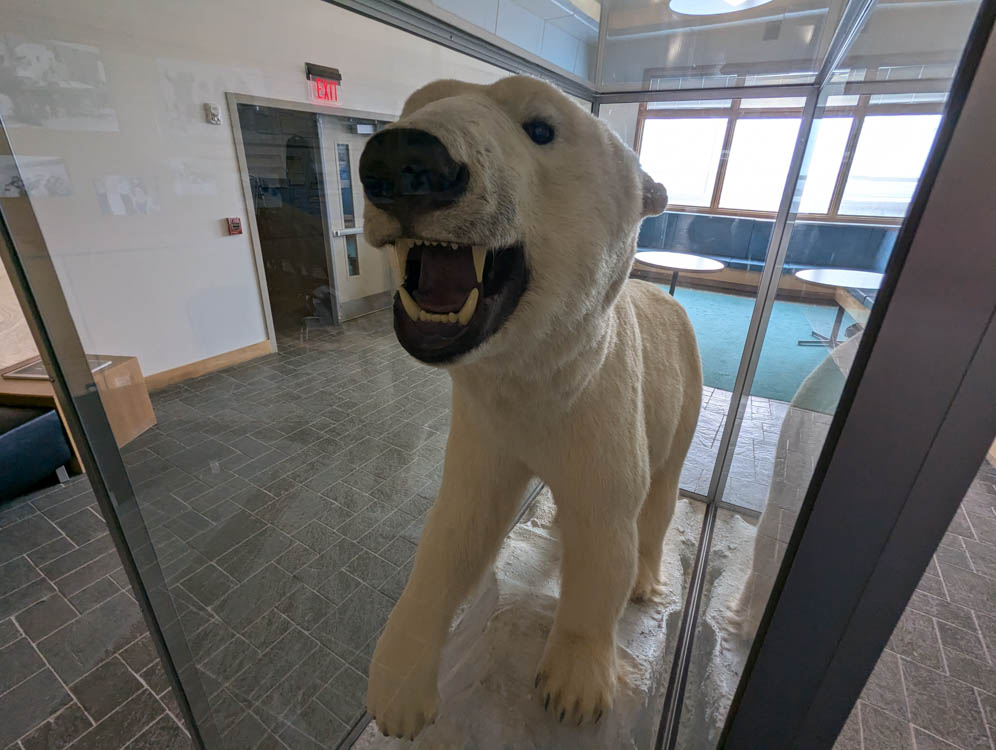
Leaving and Final Thoughts
Sadly, it was time to get back for our flight. Our accommodation kept our bags for us during the day after we checked out. We arrived at the airport not long before our flight because there was only one gate. We went through security and waited outside for the plane to be ready for boarding. The flight itself and the views were very good in both directions.
I think visiting Utqiagvik is one of the highlights of the last seven years for me. It was worth every penny for flights, accommodation and food, every step that made my feet hurt, and I’d happily go back to see and do it all again. I’d also include a wildlife tour to see the polar bears, seals and arctic birds that live nearby.
To me, it was everything travel should be – fun, adventurous, trying new foods, learning about new cultures, seeing how the local people live, peaceful and reflective.
Here’s a final video with some highlights of our time there:
Very cool – this is on my bucket list as well and I hope to get up there (and do the polar plunge) one day soon. And now that I know there’s a certificate AND a patch, I want to go there even more! 🙂
It’s so great there – I highly recommend going during the whale festival to experience it to its fullest.
where did you change? doing this next month!!
Hi Amy!
As we did this at 2:30 in the morning and no one was around we just tucked in near a shipping container out of sight and using towels changed our clothes there on the beach. But the Top of the World Hotel is right nearby and I’m sure they have restrooms you could use (or back to your room if you’re staying there).
Hi Stephen and Shae –
I mostly know of Stephen through GCGalore, but on occasion find myself here following your travels. Long time listener, first time caller. Seeing somebody else that has been to Utqiagvik made me comment.
I’m so jealous that you were around for Nalukataq. I was in town a year earlier in 2023 but had to make arrangements prior to finding out that Nalukataq was starting the day after I left.
One activity that I found by luck once I arrived in town was 71 North Tours. Like everything in Utqiagvik (though every local I encountered there, including at the Iñupiat Heritage Center, referred to the town as Barrow), it is not cheap. However I would say it was worth every penny. Amaulik will take you out to Point Barrow, the northernmost point in the 50 states, on a custom truck and tell you some of his story as a whaler. Seeing polar bears on the tour is not guaranteed but I did get to see one. I believe all the tours in the 24ish hours I was in town did see at least one polar bear.
The tour also takes you through time as each section of Utqiagvik, especially the northernmost, is a bit different. The northernmost section used to house the Naval Arctic Research Laboratory and has a bunch of old US military equipment and facilities. Compared to the modern looking homes in Browerville, the structures are much older. Like the many decades-old shipping containers that I’m sure you saw near the Whale Bone Arch, I can only assume these facilities were abandoned due to the high cost of transporting it to a proper disposal site.
The airport is one of the more interesting ones I’ve been to. Walking off the plane onto the tarmac isn’t too out of the ordinary for small airports, but I thought it was interesting that in order to get out of the airport you had to walk through the airport offices. And on the way out I noticed the TSA workers inspected each bag very thoroughly – only one flight in and out a day gives them a lot of time apparently.
Stayed at Top of the World and took Polar Bear Plunge an August 27. No ice in water temp was balmy 39 degrees. Has been on bucket list since learning about Barrow in my 5th grade geography class. Food at hotel Resturante was very good and was treated by locals with tasty smoked Whale meat! Which as your site accurately reported is other wise not allowed for sale. Took tour and played catch on the football field with Ryan our guide. He is excellent.
Unfortunately Heritage museum was closed for repairs 🙁
Purchased local art on whales tooth at the Hotel. There is also a local shop at Fairbanks airport where I purchased a Mammoth tooth set in fossilized ivory. 25,000 years old and very cool. Both were pieces signed by Inuit artist. (Allowed for sale by inuit local artists to nonalsaskans if signed/authticated).
Great memories
Sorry that you missed out on the museum, but glad that it sounds like you had an excellent time otherwise!